


AMD Ryzen X3D P71 Nvidia RTX SFF Ada P64 TECHNOLOGY FOR THE PRODUCT LIFECYCLE LUXURY DECKS FOR DJS HOME FITNESS IN STYLE AMD Radeon Pro P68 AUGUST / SEPTEMBER 2023 | £6 | € 7 | $10 | DEVELOP3D.COM
BURDEN Ox Delivers on building a cargo EV for remote Rwandan roads WHAT’S HOT IN 2023? 2023 WarwickArtsCentre-20September
BEAST OF
Creo 10 includes numerous enhancements to help you deliver your best designs in less time, with new tools for designing with composites, additive, and subtractive manufacturing. There are also improvements in electrification and ergonomics. Creo also continues to add simulation-driven design capabilities. Creo 10 provides an on-premises solution, while Creo+ delivers a SaaS solution, with cloud-enabled collaboration and license management tools. To learn more about Creo 10 to go www.ptc.com/creo
https://www.ptc.com/hill-helicopters ptc.com




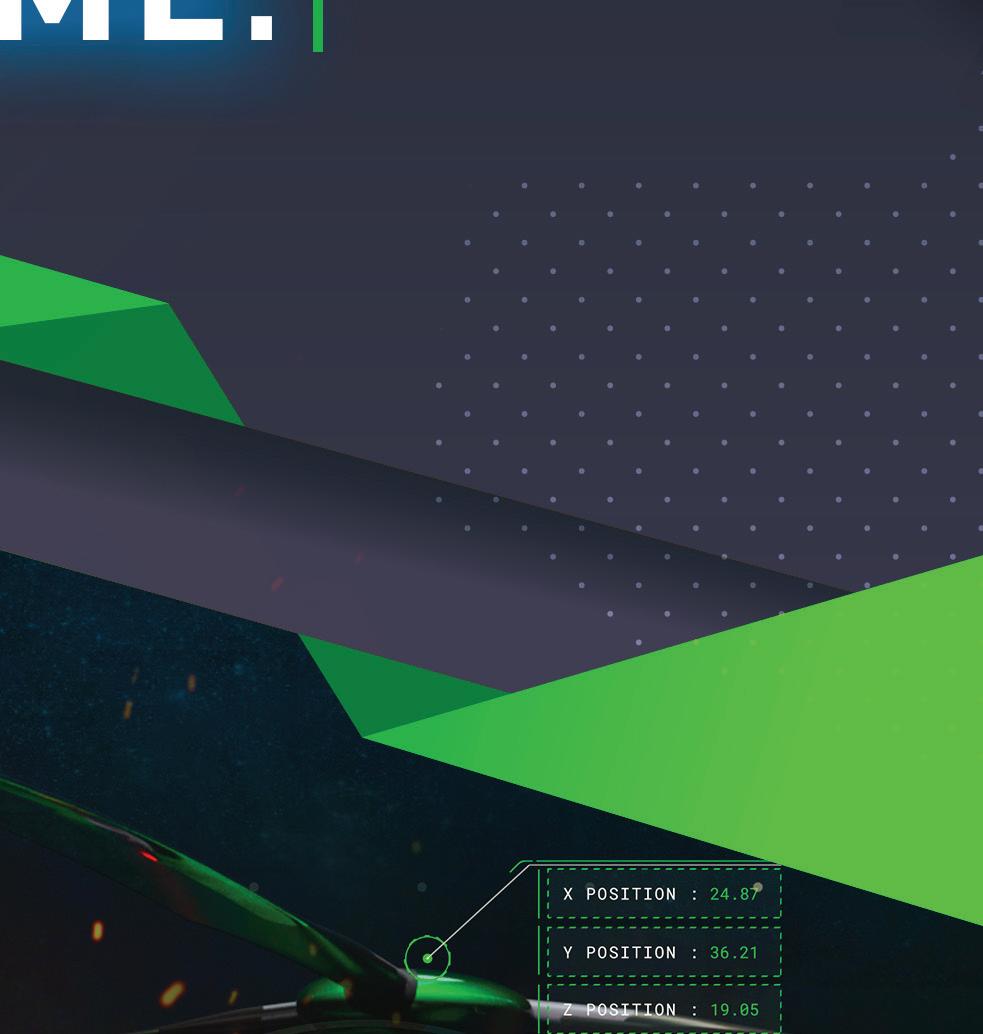


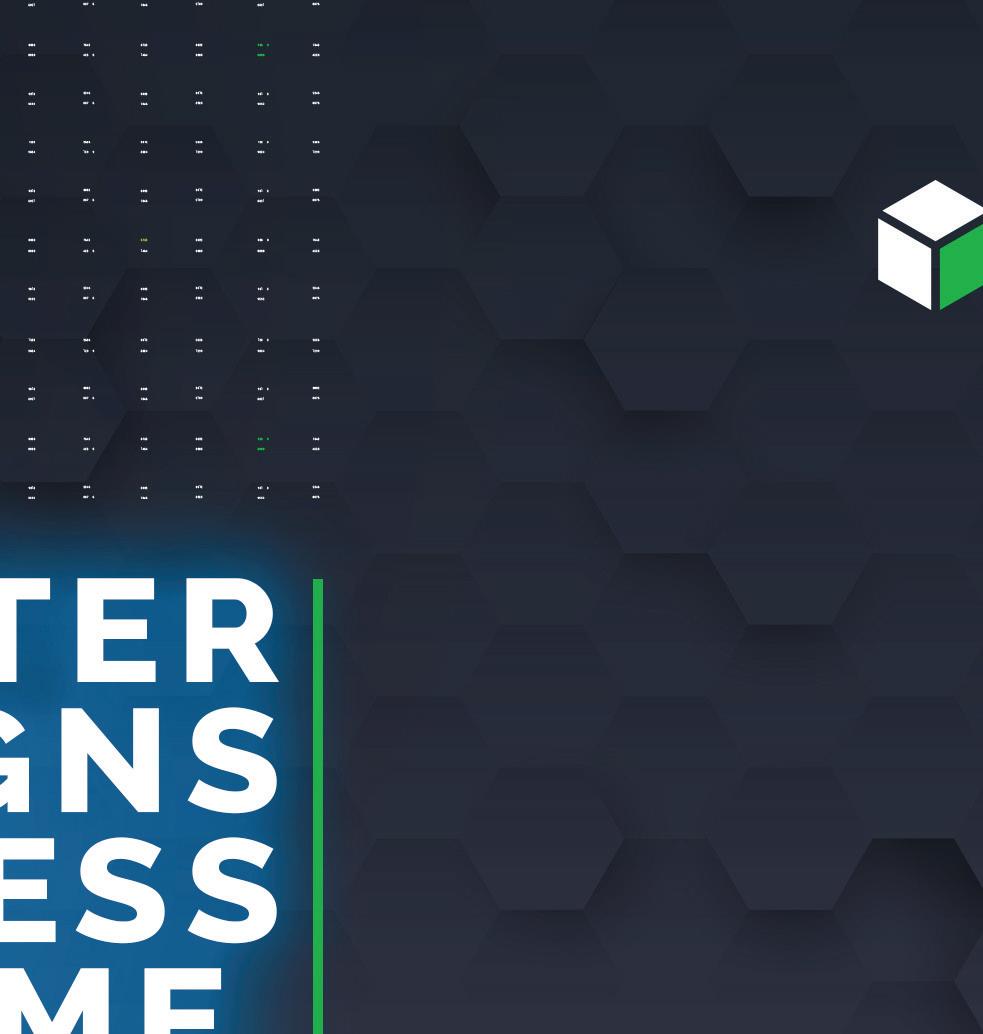
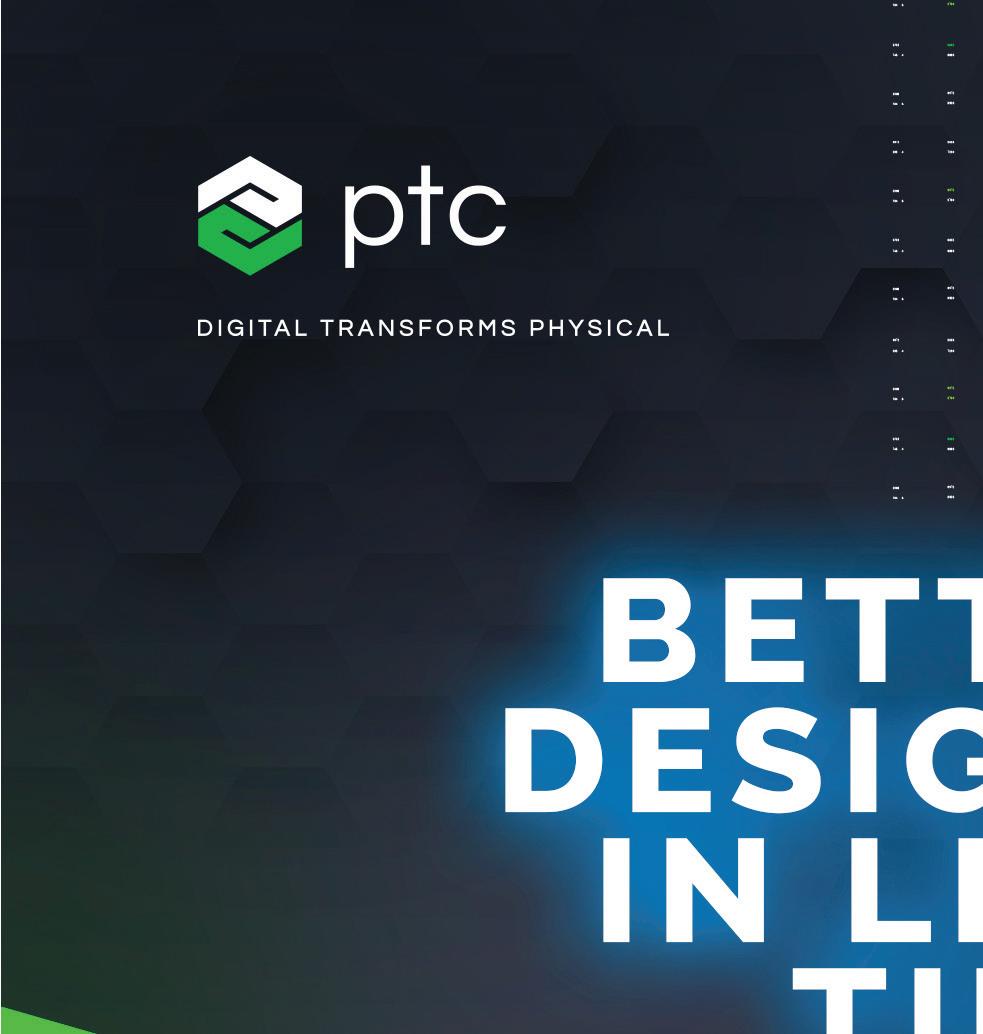
EDITORIAL
Editor Stephen Holmes stephen@x3dmedia.com
+44 (0)20 3384 5297
Managing Editor Greg Corke greg@x3dmedia.com
+44 (0)20 3355 7312
Consulting Editor Jessica Twentyman jtwentyman@gmail.com
Consulting Editor Martyn Day martyn@x3dmedia.com
+44 (0)7525 701 542
DESIGN/PRODUCTION
Design/Production
Greg Corke greg@x3dmedia.com
+44 (0)20 3355 7312
ADVERTISING
Group Media Director
Tony Baksh tony@x3dmedia.com
+44 (0)20 3355 7313
Deputy Advertising Manager Steve King steve@x3dmedia.com
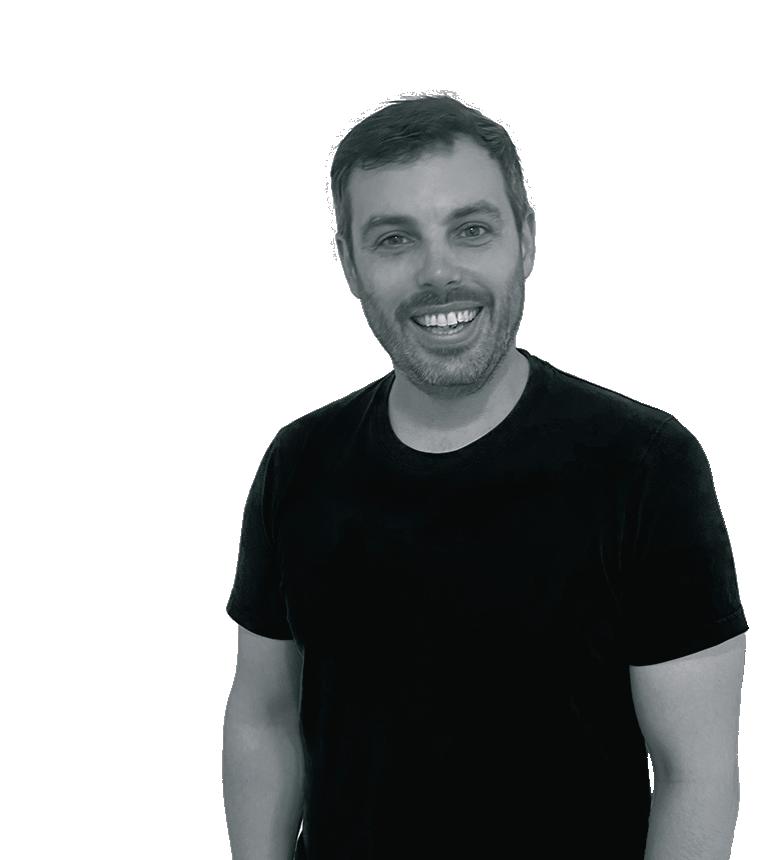
+44 (0)20 3355 7314
US Sales Director Denise Greaves denise@x3dmedia.com

+1 857 400 7713
SUBSCRIPTIONS
Circulation Manager
Alan Cleveland alan@x3dmedia.com
+44 (0)20 3355 7311
ACCOUNTS
Accounts Manager Charlotte Taibi charlotte@x3dmedia.com
Financial Controller Samantha Todescato-Rutland sam@chalfen.com


At times this summer, it’s felt like I’ve been the only person not on holiday, with the constant stream of out-of-office email replies I’ve received. Meanwhile, I’ve been attempting to finish this issue of DEVELOP3D, while simultaneously organising the amazing speaker line-up for our imminent live event, DEVELOP3D LIVE.
The synergy between the two means that these pages and the conference agenda share some wonderful crossover content, hopefully whetting your appetite and helping you to hone your questions for what lies ahead of us in Warwick on 20 September.
The stunning Stilride scooter has swept up almost all the design awards available this year, and still manages to stir the emotions as the star of this issue’s Visual Design Guide. Members of the Stilride team will be among the keynote speakers at DEVELOP3D LIVE, offering more insight not only into the EV design, but the company’s proprietary robotic metal-folding technology.
A more in-depth guide to what to expect at the show will be found in this issue, as we preview some of the big names, brands and technologies that will grace our stages and exhibition space.
Equally exciting is the return of the D3D 30 for 2023. This listing includes 30 of the most recent technologies to catch our eye, the ones that we feel will slip into your workflow and provide you with the boost you need to tackle even your most difficult product design and engineering challenges. From cutting-edge GPUs to AI rendering, and with a pot of print bed adhesive along the way, there’s something on the list to help all workflows.
It’s a sign of how packed this issue is with great content that I’ve somehow got this far without even mentioning our cover feature on Ox Delivers. It’s a terrific story of how a team of engineers are building an EV to provide transport for farm produce across Rwanda, getting goods to market and improving bottom lines for farmers. There are a lot of EV projects in the world today, but it’s nice to find one that looks to solve something other than first-world problems — and that’s without mentioning the specific challenges of designing a truck capable of navigating Rwanda’s famous one thousand hills.
So, here’s hoping we all get a day off soon, fellow grafters. Hopefully, you can grab a day out of the office to join us in person at DEVELOP3D LIVE. After all, you deserve it!
Stephen Holmes Editor, DEVELOP3D Magazine, @swearstoomuch
DEVELOP3D.COM AUGUST / SEPTEMBER 2023 3
ABOUT DEVELOP3D is published by X3DMedia 19 Leyden Street London E1 7LE, UK T. +44 (0)20 3355 7310 F. +44 (0)20 3355 7319 © 2023 X3DMedia Ltd All rights reserved. Reproduction in whole or part without prior permission from the publisher is prohibited. All trademarks acknowledged Opinions expressed in articles are those of the author and not of X3DMedia. X3DMedia cannot accept responsibility for errors in articles or advertisements within the magazine
WELCOME DEVELOP3D.com facebook.com/DEVELOP3D @DEVELOP3D groups/DEVELOP3D Join our online community







DEVELOP3DLIVE returnstowhereitallstarted * *following£25mrenovationofWarwickArtsCentre Accelerate your product design & transform your product development develop3dlive.com
sponsors THREE CONFERENCE STREAMS HANDS-ON TECHNOLOGY EXHIBITION
SILVER SPONSORS Gold sponsors Principal
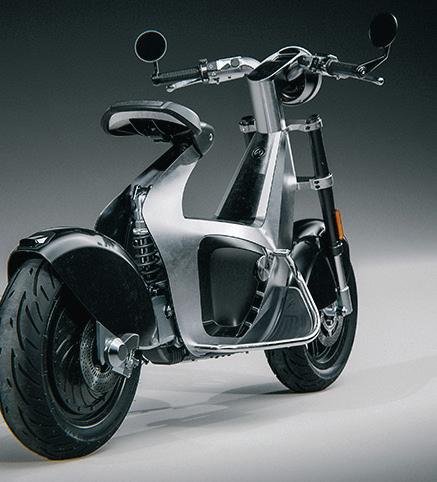








2023 Warwick Arts Centre, UK 20 September 2023 REGISTER NOW FREE develop3dlive.com
Silver sponsors
Bronze sponsors

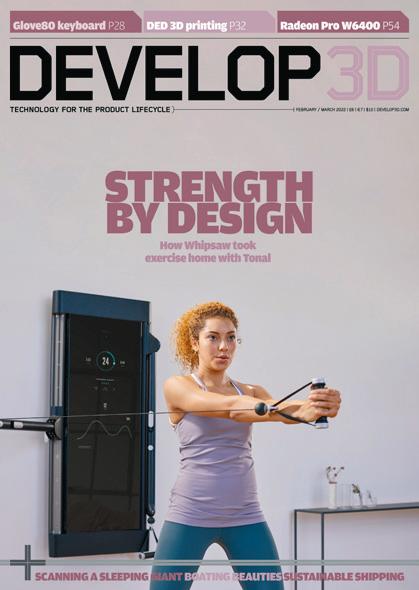


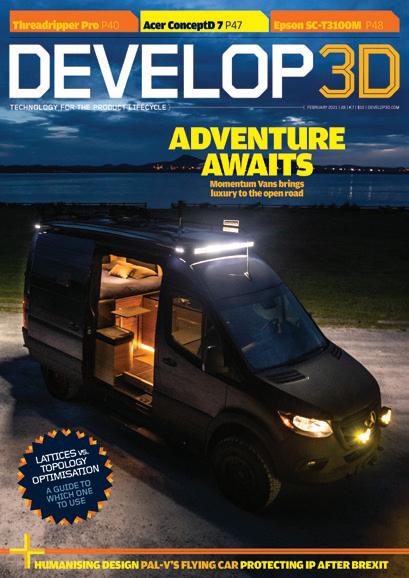
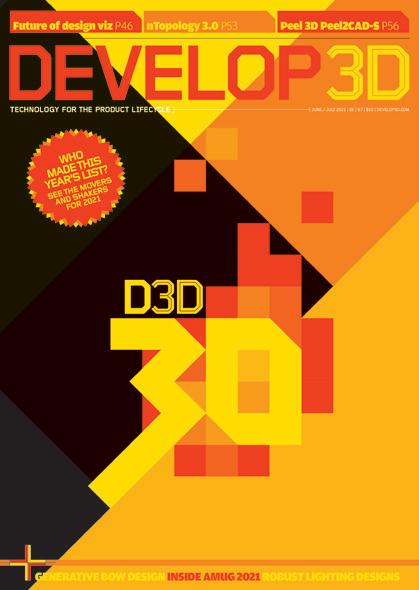
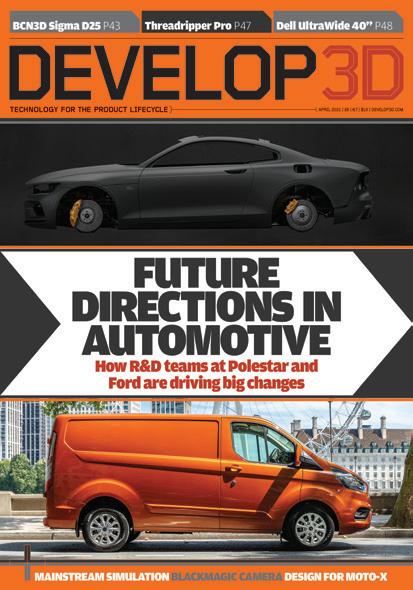
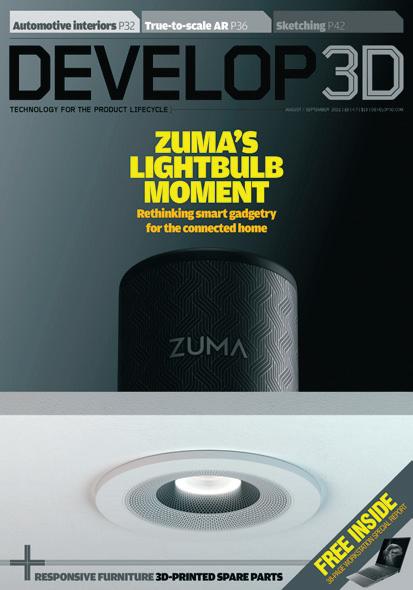
Subscribe now FREE Print* or digital Technology for the product lifecycle register.develop3d.com *Free for UK readers ($49 per annum for ROW)
NEWS
Nvidia launches new Ada generation GPUs, UK start-up CloudNC unveils plug-in for Fusion 360, and details of Altair Enlighten Award 2023 winners
FEATURES
Comment: Claas Kuhnen on AI in design education
Comment: SJ on workplace returnees in Wonderland
Visual Design Guide: Stilride 1 electric scooter
COVER STORY Ox Delivers and its fantastic beasts
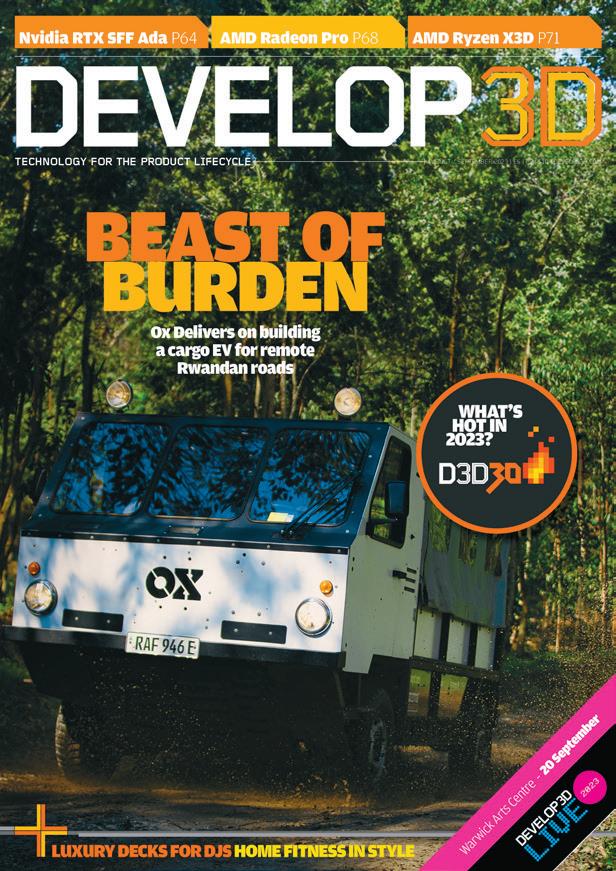
D3D 30: Our top 30 listing of innovative technologies
DEVELOP3D LIVE: Get ready with our show preview


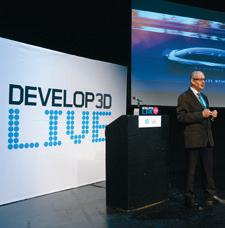
Rock DJ: A stylish new take on decks from Pioneer
Leadoff Studio’s accessories line for the Lululemon Mirror
Peak performance: Domin’s designs for hydraulic servos
Opinion: Holo CEO Arian Aghababaie on solving problems
Blue sky thinking: design work on Maeve 01 accelerates
ARA and WAAM3D collaborate on aerospace challenges
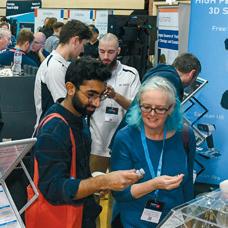
Cutting edge: RO-RA Aviation adopts Vericut Force
REVIEWS
Nvidia RTX 4000 SFF Ada Generation GPU
AMD Radeon Pro W7800 / W7900 GPUs
AMD Ryzen 7000 X3D processor

THE LAST WORD
This summer, we’ve all witnessed the rise, fall and bold reimagining of some big-name brands. But what’s in a name, asks Stephen Holmes, and what does branding mean for the products that you and your team design?
DEVELOP3D.COM AUGUST / SEPTEMBER 2023 7
AUGUST / SEPTEMBER 2023 ISSUE NO. 141 8 14 15 16 18 24 34 50 54 57 58 60 61 62 64 68 71 74 The wood used to produce this magazine comes from Forest Stewardship Council certified well-managed forests, controlled sources and/or recycled material CONTENTS 2023 20 September 2023 Warwick Arts Centre, UK www.develop3dlive.com
NVIDIA EXPANDS OPTIONS FOR PRO VIZ WITH NEW ADA GENERATION NVIDIA RTX GPUS
» Nvidia RTX 4000, 4500 and 5000 Ada Generation desktop workstation GPUs start at $1,250 to offer more choice in high-end professional graphics
Nvidia has expanded its pro graphics line-up, adding three Nvidia RTX Ada Generation workstation GPUs to target visualisation, simulation, XR, AI and CAD workloads.
The Nvidia RTX 4000 Ada (20 GB), Nvidia RTX 4500 Ada (24 GB) and Nvidia RTX 5000 Ada (32 GB) fill the middle ground between the Nvidia RTX 4000 SFF Ada (20 GB) and Nvidia RTX 6000 Ada (48 GB) that were launched earlier this year.
The Nvidia RTX 4000 Ada and Nvidia RTX 4000 SFF Ada are identical in their cores specs, and have the same number of cores (CUDA, Tensor and RT) and 20 GB of GDDR6 memory. However, they have different form factors and max power consumption.
The Nvidia RTX 4000 Ada is a full-height, single-slot GPU designed for standard workstation towers. It draws up to 130W via a 6-pin power connector. Meanwhile, the SFF version is a low-profile, dual-slot GPU specifically designed for Small Form Factor and ultra-compact workstations. It draws up to 70W, directly from the PCIe slot.

The Nvidia RTX 4000 Ada is available in September with an ESP of $1,250.
Moving up the range, the Nvidia RTX 4500 (24 GB) is billed as the most balanced GPU for the majority of workloads. The dual-slot card has a max power consumption of 210W and is available in October with an ESP of $2,250.
The Nvidia RTX 5000 Ada has a max power consumption of 250W and needs a 16-pin CEM5 PCIe connector. According
to Bob Pette, VP for professional visualisation at Nvidia, it is for those who need performance closer to Nvidia’s 6000 class GPUs, but don’t necessarily need 48 GB of frame buffer memory. Pette adds that the dual-slot card delivers a huge performance leap over the previous generation Ampere RTX A5000 and A5500.
Compared to the RTX A5000, Nvidia says the RTX 5000 Ada has 1.6 times the graphics performance, twice the rendering performance in commercial renderers and three times the rendering performance in the Omniverse RTX renderer, which takes advantage of Nvidia DLSS 3.
DLSS 3, short for Deep Learning Super
Sampling, boosts performance by using the Tensor cores in Ada Generation GPUs to generate entirely new frames without having to process the graphics pipeline. Meanwhile, for the datacentre, Nvidia has announced the Nvidia L40S Ada GPU, which is effectively a passively cooled version of the Nvidia RTX 6000 Ada but clocked a little higher.
Up to eight Nvidia L40S GPUs can be accommodated in an Nvidia OVX reference server. Compared to the Nvidia A40, Nvidia says the Nvidia L40S Ada is up to 2.4x faster in commercial renderers and up to 4x faster in the Omniverse renderer. www.nvidia.com
HP Z4 Rack G5 remote workstation boosts datacentre density

HP has introduced the HP Z4 Rack G5, a 1U rack workstation designed specifically for server rooms and datacentres to provide 1:1 remote access for workstation users.
The HP Z4 Rack G5 shares many of the same characteristics as the HP Z4 G5 desktop workstation — up to 24 cores with the Intel Xeon W-2400 CPU and up to the Nvidia RTX 6000 Ada Generation GPU — but maxes out at 256 GB of DDR5 memory instead of 512 GB.
It supports one dual-slot GPU, including the Nvidia RTX 5000 or RTX 4500 Ada Generation, or two single slot GPUs, including the
Nvidia RTX 4000 Ada Generation.
With a 1U chassis, the HP Z4 Rack G5 earns is datacentre credentials by being significantly slimmer than its 4U desktop counterpart, delivering four times better density in a standard rack.
It has dual power supplies, where two 675W PSUs can be combined together, or one can be used for redundancy in the event of a failure. In redundancy mode, however,
HP Z4 Rack G5 is 1U delivering four times better density than the HP Z4 Tower G5 in a standard rack
this limits the CPU/GPU options.
The HP Z4 Rack G5 can be configured with the HP Anyware Remote System Controller, a remote out-of-band management solution designed to give IT managers the ability to monitor and manage workstation fleets through a single interface. IT managers can remote in, power workstations on and off remotely, perform bare metal imaging, manage inventory and get hardware alerts and diagnostics info.
The workstation can also be used with HP Anyware remote access and collaboration software so teams can access the power of the Z4 Rack from any device. www.hp.com/ zworkstations
8 AUGUST / SEPTEMBER 2023 DEVELOP3D.COM
The single-slot Nvidia RTX 4000 Ada Generation will be available soon
NEWS
AMD RADEON PRO W7600 AND W7500 PRO WORKSTATION GPUS LAUNCH
» AMD targets volume mid-range workstation segment with new RDNA 3 pro graphics cards, but with no low-profile option, limits the reach to mainstream desktop towers
WHAT DEVELOP3D THINKS
The roll-out of AMD’s new generation RDNA 3-based pro GPUs comes straight out of the workstation graphics
playbook: Start at the high end and then move down the range.
AMD has launched the Radeon Pro W7600 and Radeon Pro W7500, a pair of ‘mid-range’ desktop pro workstation GPUs built on its RDNA 3 architecture.
The new graphics cards are designed to target ‘medium’ workloads for 3D CAD, visualisation, video editing and digital content creation. They follow on from the ‘ultra high-end’ AMD Radeon Pro W7800 and W7900 launched earlier this year
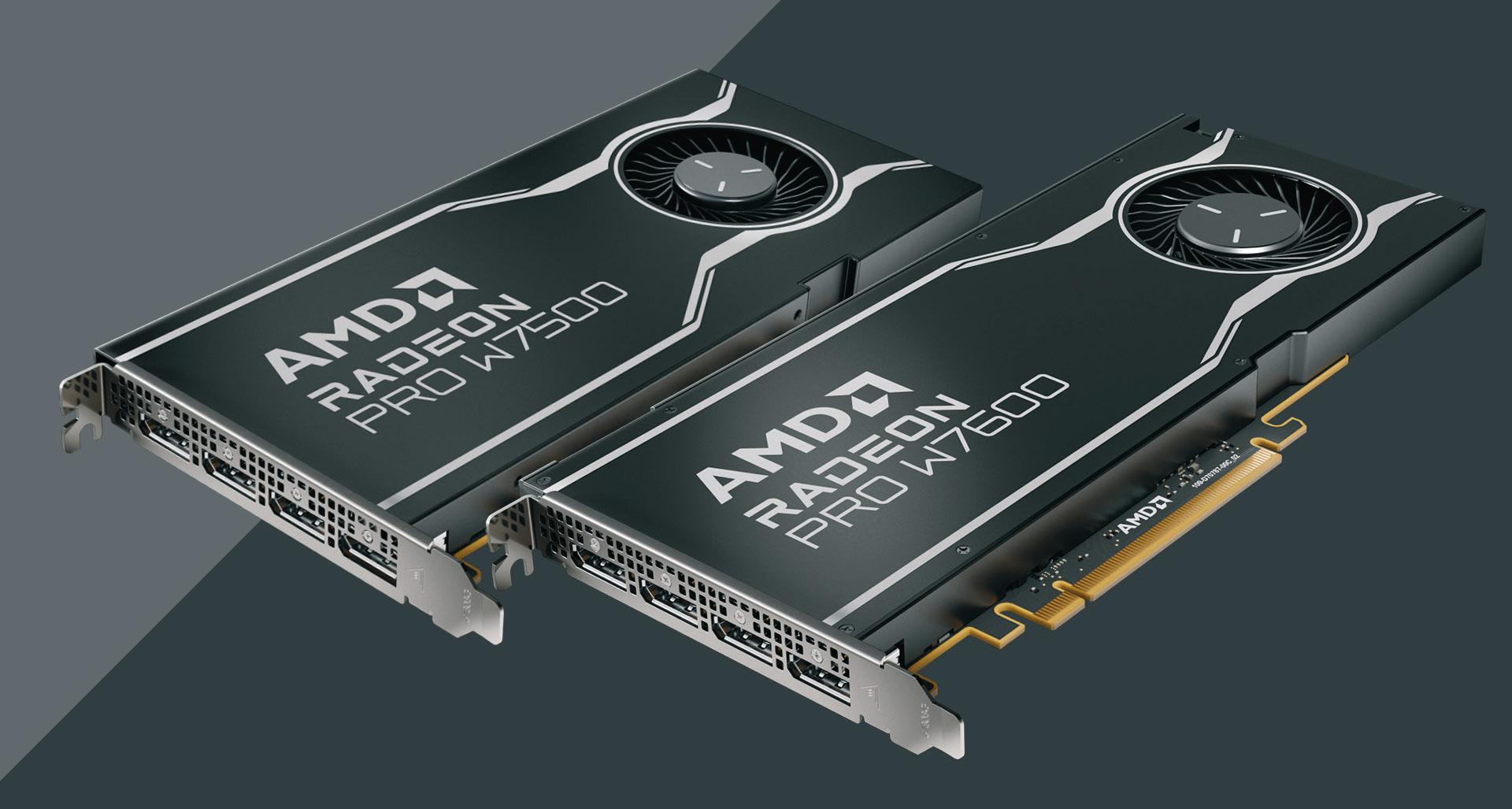
The Radeon Pro W7600 and W7500 are both full-height, single-slot GPUs, so are designed to fit in standard desktop tower workstations and not small form factors (SFFs)/ultra-compacts.
Both GPUs come with 8 GB of GDDR6 memory and four DisplayPort 2.1 Connectors, the latest version of the digital display standard. According to AMD, this means the cards are future-proofed for next gen displays in terms of refresh rate, pixel resolution and colour bit-depth.
The Radeon Pro W7500 offers 12.2 TLOPs of peak single precision performance and has a total board power of 70W, which it draws from the PCIe slot. It costs $429.
The Radeon Pro W7600 offers 19.9 TLOPs of peak single precision performance and
has a total board power of 130W, so needs a 6-pin connector. It costs $599.
Both GPUs comprise multiple unified RDNA 3 compute units (28 on the W7500 and 32 on the W7600). Each compute unit has 64 dual issue stream processors, two AI accelerators and a second gen ray tracing (RT) accelerator. According to AMD, RDNA 3 offers up to 50% more raytracing performance per compute unit than the previous generation.
There is growing software compatibility for AMD RT accelerators. In addition to DirectX Raytracing (DXR) and Vulkan ray tracing, for which there is direct support, AMD’s open-source toolset HIP is helping software developers automatically translate their existing Nvidia CUDA code bases.
In terms of the competition, AMD compares the AMD Radeon Pro W7600 to the similarly priced Nvidia RTX A2000 (12 GB) and the AMD Radeon Pro 7500 to the Nvidia RTX T1000 (8GB). The company claims better performance in CAD applications Solidworks and PTC Creo. Both Nvidia GPUs are available at similar price points, but the Nvidia GPUs are compatible with both standard towers and SFF/ compact workstations.
www.amd.com/radeonpro
The Radeon Pro W7600 and W7500 are both full-height, single-slot GPUs, designed to fit in standard desktop tower workstations rather than small form factors (SFFs)/ ultra-compacts
With the new Radeon Pro W7500 and W7600, AMD is looking to target a specific part of the workstation market – the midrange $350 to $950 dollar segment, which it describes as the largest piece of the pie. In terms of performance profiles and price, the new GPUs seem well positioned. However, it feels like AMD could be limiting their potential reach by not giving at least one of them a lowprofile form factor. Small Form Factor and ultra-compact workstations, such as the HP Z2 Mini and Lenovo ThinkStation P3 Ultra, represent a growing slice of the mainstream workstation market, not just on desktops but also in racks for remote graphics deployments.
AMD could be choosing to focus more on getting these pro GPUs out in the market via specialist system builders, such as Armari and BOXX, which tend to only sell tower workstations.
Alternatively, perhaps AMD feels there'll be less need for a low-profile form factor pro GPU in future. As Jimmy Holbert, director of Radeon Creator & workstation strategy at AMD, pointed out in a recent press briefing, AMD’s APUs (CPUs with integrated GPUs) are now having an impact on the entry-level pro GPU market. With rumours of far beefier models coming next year, could AMD be planning to extend the reach of its APUs into the mid-range?
In addition, by configuring both of the new GPUs with 8 GB of memory, it looks like AMD could be limiting where these cards can be used. While 8 GB is sufficient for most CAD workflows, many real-time visualisation or GPU rendering tools can easily use more memory, especially at higher resolutions. And that’s without considering multi-tasking workflows, where a product designer might continue to model in 3D CAD while rendering in the background.
Lenovo targets power efficiency with AMD Ryzen Pro 7040 APUs
Lenovo has launched new mobile workstations with AMD Ryzen Pro 7040 Series processors with integrated AMD GPUs and Radeon Pro graphics drivers.
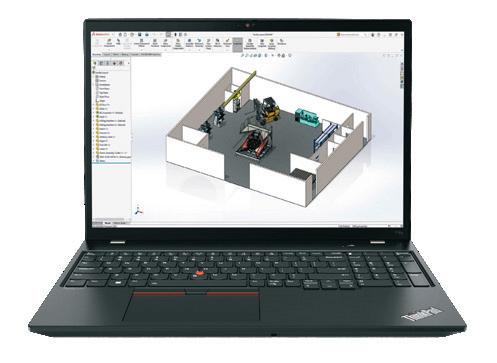
The 14-inch ThinkPad P14s Gen 4 and 16-inch ThinkPad P16s Gen 2 target affordability and power efficiency, thanks to the AMD Ryzen Pro 7040U processor. The 16-inch ThinkPad P16v is more
powerful, offering a choice of AMD Ryzen 9 Pro 7040 HS Series processors. It can also be configured with an optional Nvidia RTX 2000 Ada Generation laptop GPU.
www.lenovo.com/thinkpad
DEVELOP3D.COM WORKSTATION NEWS
UK START-UP CLOUDNC ANNOUNCES NEW CAM ASSIST PLUG-IN FOR AUTODESK FUSION 360
CloudNC has launched CAM Assist, its plug-in for Autodesk Fusion 360, as the UK-based start-up looks to reduce CAM programming times by up to 80%.
The software uses computational optimisation and AI inference to determine the professional strategy and toolset needed to manufacture a part, along with the most appropriate cutting speeds and feeds from the user’s library.
As a plug-in for Autodesk Fusion 360, it’s able to create machining strategies for 3-axis parts in seconds, before working directly with your existing CAM package.
Fusion 360 users can upload a 3D model of a 3-axis component and the cloud-based software will determine the best milling tools needed from those available, how they should be used and the geometric data of the part that you are aiming to machine.
It uses computational techniques to generate the best possible outcome, based on the geometry of the part and your tool library. This can run into the thousands, if not millions, of combinations.
In a matter of seconds, CAM Assist drafts the code required to instruct a CNC machine how to make a part within the user’s existing CAM platform. This code can be edited further by users if required.
CloudNC says it has conducted sideby-side trials of CAM Assist with senior CAM programmers. According to the results, CAM Assist delivers reductions in programming times of up to 80% in comparison to manual programming methods. This saves time for more senior programmers, by completing tasks associated with programme set-up and toolpath creation.
Many machine shop floors find CAM demand inconsistent — they’re either overstaffed or understaffed. CAM Assist aims to shorten lead times and free up experienced programmers for more demanding jobs, while also helping those new to machining get up to speed faster.
It is also hoped that by pre-programming more parts, CNC machines spend less time sitting idle as G-code is entered.
“CAM Assist is the biggest paradigm shift for the precision manufacturing sector in decades,” said CloudNC founder Theo Saville. “By making CAM programmers faster, CAM Assist enables manufacturers to increase machine uptime, slash lead times, improve process stability and upskill staff to become expert machinists more quickly.”

He continued: “These advances will re-energise precision manufacturing companies struggling with rising costs, ageing workforces and competition from
globalisation — shortening supply chains
and keeping costs down.”
The launch of CAM Assist marks the culmination of eight years of testing and refining the technology in the UK startup’s own factory in Chelmsford, Essex, where the company employs around 50 skilled machinists, all well-qualified to offer feedback on the software as it develops, while also generating new ideas for the product.
“By operating our own facility, we have a dedicated space to test, refine and improve our software solutions — live,” explains Saville. “It serves as a real-world testing ground, allowing us to observe and analyse how our software interacts with the complex machinery, materials, and processes involved in precision machining. For example, if we want to really be sure we’ve found the best way to program a CNC machine to drill a hole on a Haas VF2 until the process is absolutely perfect every time, we can.”
With investment from Autodesk, Lockheed Martin and Atomico, CloudNC aims to take autonomous manufacturing to a level that it says will enable customers to make products anywhere in the world at competitive cost, enabling them to more easily onshore supply chains and keep engineering jobs local.
www.cloudnc.com
10 AUGUST / SEPTEMBER 2023 DEVELOP3D.COM NEWS
» CAM Assist is billed by its creators as a 'CAM progamming co-pilot' that uses AI to significantly accelerate professional machining strategies for 3-axis parts
CloudNC CEO Theo Saville says the company is aiming to re-energise precision manufacturing with its AI-based product


©2023 Advanced Micro Devices, Inc. All rights reserved. AMD, the AMD Arrow logo, Radeon, AMD DNA, Ryzen, Threadripper, and combinations thereof are trademarks of Advanced Micro Devices, Inc. Other product names used in this publication are for identification purposes only and may be trademarks of their respective owners. PID#: 232087025 Version: 1 LEARN MORE amd.com/en/graphics/workstations ACCELERATING DESIGN WORKFLOWS TO COMPLETE THE MOST DEMANDING TASKS
HISTORY-BASED MODELLING COMING TO SHAPR3D IN Q4
Additive Flow gets acquired N
ano Dimension has acquired Additive Flow and its multimaterial AM optimisation software capabilities, led by its consultancy work and FormFlow product.
FormFlow addresses design, production, and quality decisions, optimising for cost, weight, manufacturing productivity and yield. The company behind it has worked with the likes of Saint-Gobain, Royal Haskoning, Tata Steel and Zeiss.
The deal should enable Nano Dimension customers to rapidly and cost-effectively replicate, design and augment AME electronic component layouts.
www.nano-di.com
Shapr3D has announced that it will add history-based parametric modelling to its CAD system in Q4 2023, expanding its toolset beyond its current concepting and fast rendering capabilities.
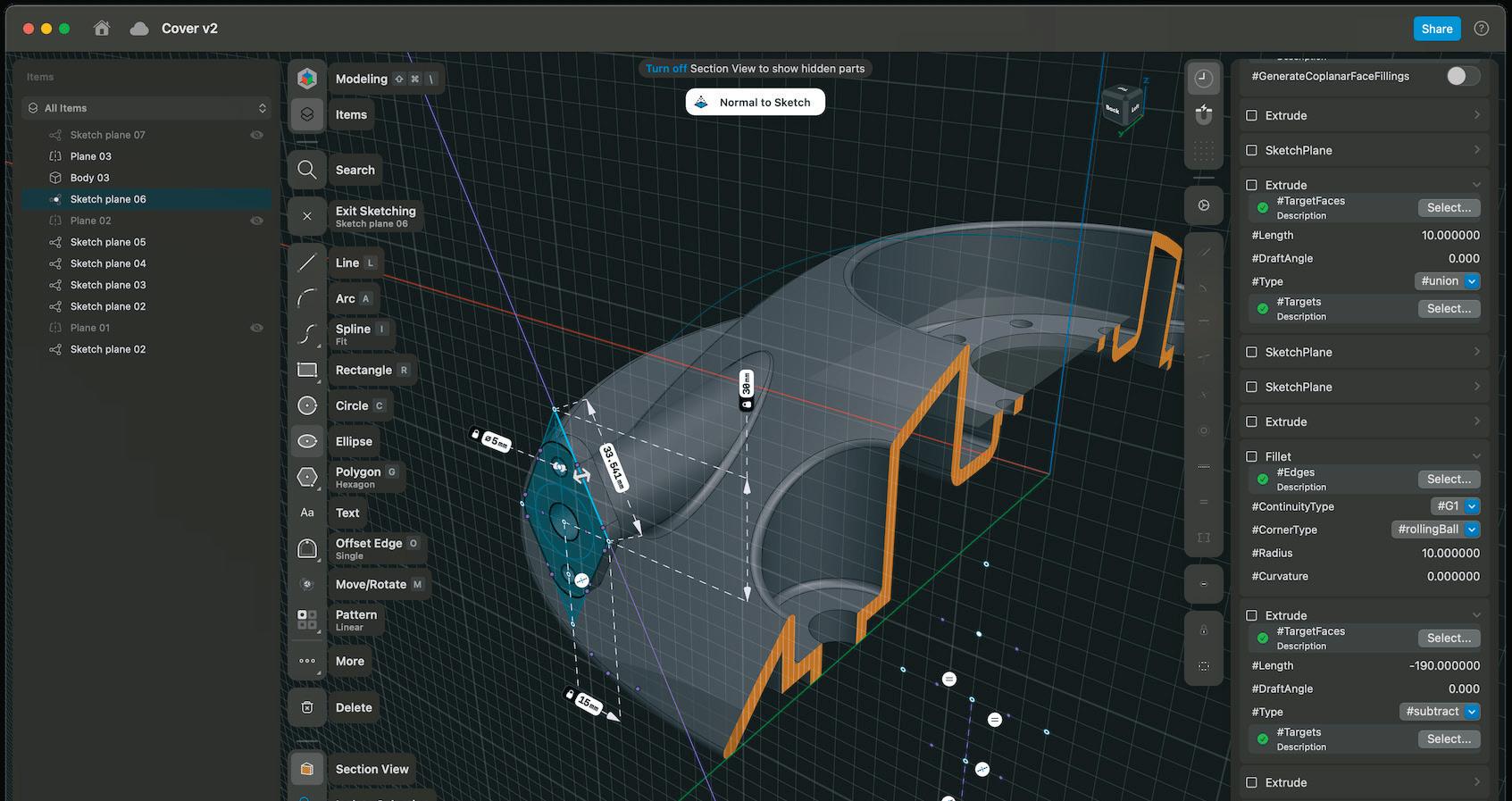
“Last year, we started hearing a common refrain from our customer base, ranging from SMBs to Fortune 500 companies,” explained Shapr3D CEO István Csanády. “They wanted to do even more with Shapr3D, beyond just conceptual design and prototyping.”
More specifically, he continued, what the company heard was that these customers were looking to use Shapr3D in some of their more complex engineering and manufacturing workflows. And for this, the company concluded, they would require history-based parametric modelling.
Shapr3D is also getting a new user interface and folders in which users can store designs and projects.
The new UI continues on Shapr3D’s path to be multi-platform, working equally as well on desktop as on mobile devices. It's capable of making smart assumptions as to what tools a user might need for any given action, such as selecting a part or face, and offers quick on/off buttons for details like measurements.
The folders, meanwhile, aim to provide a more frictionless workflow, by enabling users to share designs with coworkers, clients and stakeholders on the spot, or keep them private.
Folders will be released later this year, while another update, the debut of a search bar for finding projects or folders by title, will follow soon after.
www.shapr3d.com
History-based modelling is being introduced to Shapr3D in direct response to customer requests
Hexagon buys CADS Additive
CADS Additive is the latest company to join the Hexagon additive manufacturing stable, enabling the buyer to further integrate the acquired company's specialised powder-bed fusion build prep software.
The AM Studio software from CADS Additive is already connected to Hexagon’s Nexus digital platform, completing the platform’s Nexusenabled AM workflow, which covers CAD model and build preparation, quality and production intelligence, and the automation of CAM to finish parts.
www.hexagonmi.com
Push to boost D&T education in schools
The Design and Technology Association (D&TA) has announced its latest initiative, 'Inspired by Industry: Transforming Design and Technology Education', in a bid to revitalise D&T education in schools.
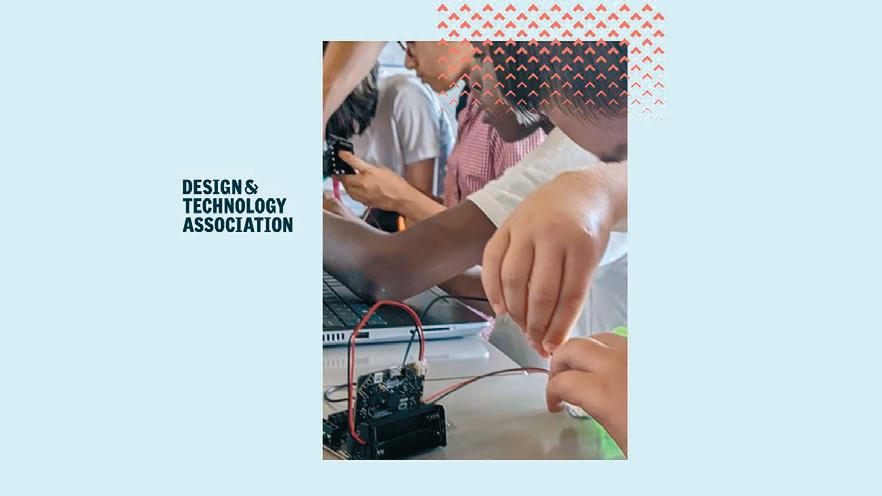
This pioneering project offers a comprehensive set of resources and support materials to reshape how D&T is taught to students aged 11 to 14 in England and Wales. Acknowledging the financial challenges many D&T departments face, D&TA is making these resources freely available to all schools.
The initiative will cover a diverse range of subjects, from addressing social and community issues through design thinking to creating inclusive designs for public spaces and building sustainable products.
“D&T education plays a pivotal role in preparing students for future careers,” said D&TA CEO Tony Ryan. “By aligning our projects and activities with industry practice, we ensure students are equipped with the cutting-edge knowledge and competencies employers highly value.”
www.designtechnology.org.uk
Recycled content calculator launch
Makersite has launched an app to help companies calculate and report the amount of recycled content in their products.
The new calculator leverages
Free resources will be made available to school D&T departments in England and Wales
Makersite’s global supply chain data and works within its existing platform, making the compliance process accessible, efficient and accurate for modern global regulations, including the EU Green Deal initiative, the Packaged Product Waste Regulations (PPWR) and the Corporate Sustainability Reporting Directive (CSRD). Makersite claims that this will transform the lengthy data aggregation process associated with complex products based on large numbers of raw materials.
www.makersite.com
12 AUGUST / SEPTEMBER 2023 DEVELOP3D.COM NEWS
ALTAIR ENLIGHTEN AWARD: 2023 WINNERS ANNOUNCED
Toyota, Polestar and Marelli have been named among the winners of this year's Altair Enlighten Award, for products that aim to create a more sustainable, lightweight future.
Presented in association with the Center for Automotive Research (CAR), the 2023 Altair Enlighten Award honours “the greatest sustainability and lightweighting advancements that successfully reduce carbon footprint, mitigate water and energy consumption, and leverage material reuse and recycling efforts.”
The Enlighten Award winners were announced in an awards ceremony at the CAR Management Briefing Seminars on 1 August at the Grand Traverse Resort near Traverse City, Michigan.
Polestar was the winner in the Sustainable Product category, for its Polestar 2 MY24 passenger vehicle, featuring next-generation electric motors, faster charging, greater efficiency and longer range. The runner-up was the Lucid Sedan from Lucid Motors.

Toyota was a winner in two categories. Along with BASF Corp and US Farathane, it won in the Enabling Technology category, for the group's work on a resin frame for an isodynamic vehicle seat. Toyota also won in the Module Lightweighting category, along with Adient and Multimatic, for the group’s work on the same seat.
Marelli, meanwhile, won in the Future of Lightweighting category for its development of a new polyurethane foam that can be applied to all foam-in-place (FIP) applications.
Other category winners included
Volteras in the Responsible AI category, for technology that enables electric vehicle fleet management; and ArcelorMittal in the Sustainable Process category, for shifting its Port-Cartier pellet plant in Canada away from heavy fuel in favour of a biofuel, in the form of pyrolytic oil.
“The Altair Enlighten Award is a special award that showcases how the automotive industry's leading minds from its biggest names to its newest start-ups are applying advanced technologies and responsible AI to create a better, greener industry,” said James Scapa, founder and CEO of Altair.
“Lightweighting, optimisation and sustainability are more important than ever in the automotive industry. Altair is proud to honour the innovations that will drive the future of a sustainable industry.” www.altair.com
Artec 3D unveils Ray II long-range scanner
Artec 3D has released its latest long-range laser 3D scanner the Ray II, capable of combining its precision LiDAR scanning with results from handheld sister product, the Leo.
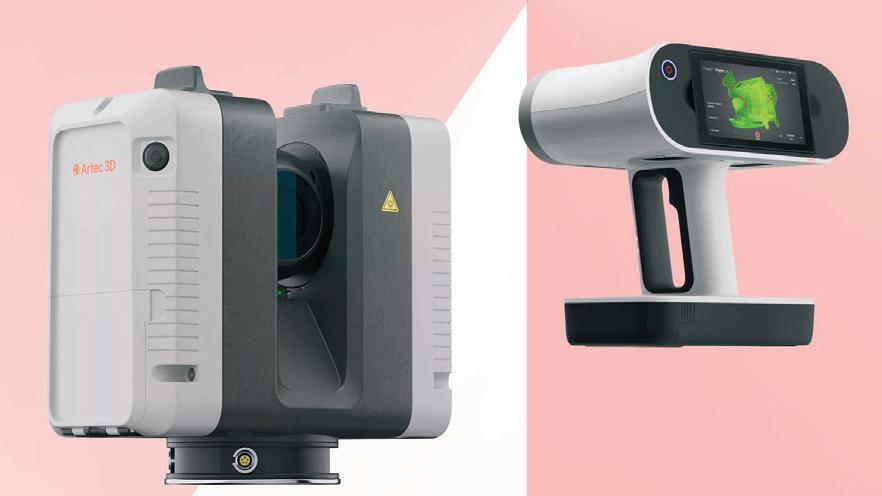
Developed in collaboration with Leica Geosystems, part of Hexagon, the Artec Ray II has the ability to capture large products and systems ten times faster than the original Artec Ray, with a 36 MP 3-camera system supporting a 3D point accuracy down to 1.9 mm from 10 meters.
Data from Artec Ray II can be combined in Artec Studio software with data from other Artec 3D scanners, such as the wireless handheld Artec Leo, helping to provide comprehensively detailed scans of selected areas of large-object captures.
In addition to its scanning speed, the Artec Ray II boasts an array of features
ROUND UP
OpenUSD has been backed by Pixar, Adobe, Apple, Autodesk and Nvidia, together with the Joint Development Foundation (JDF), an affiliate of the Linux Foundation, in a bid to make Pixar’s Universal Scene Description technology a standardised format for 3D scenes www.openusd.org
Mastercam has partnered with Sandvik Coromant to integrate the latter's CoroPlus Tool Library into its new MasterCam 2024 release software. This will save Mastercam users significant time that might otherwise be spent searching for tools and building 3D tool assemblies www.mastercam.com
Depix Technologies, only recently out of stealth mode, has unveiled its AI-driven software that allows users to create High Dynamic Range (HDR) panoramic images and backplates using text prompts to create what it claims are some of the most vivid, immersive product visualisations possible www.depix.ai
The team at Solidworks Education has launched a new training content that is designed to help users of all ages get up to speed with simulation tools, in the form of its new eBike Modeling and Simulation (MOD-SIM) series. Sessions are free, but users must register www.solidworks.com
designed to provide an easy scanning experience and improve the quality of results. The scanner is equipped with automated targetless field registration, real-time scan alignment and a doublescan feature for the automatic removal of moving objects.
www.artec3d.com
Shining 3D has launched the Einscan H2, a scanner that shares its predecessors’ ergonomics, wide FOV and convenient hybrid light sources, but adds three VCSEL projectors to the handset, so it can scan dark surfaces more efficiently and adapt better to different lighting conditions www.shining3d.com
DEVELOP3D.COM AUGUST / SEPTEMBER 2023 13
Polestar scooped the Altair Enlighten Award for Sustainable Product for its Polestar 2 MY24 electric vehicle
The Artec 3D Ray II (L) can combine data with other Artec products, like the Leo (R)
There’s great anticipation surrounding the current development of AI and its potential impact on our creative world and education.
Naturally, there are valid questions being raised: Is AI a valid tool to use? What are the ethical ramifications? Is using AI considered cheating? What is the impact on students?
While it’s important to address these concerns, it’s equally crucial to embrace the positive aspects of AI and its ability to revolutionise teaching, learning, and established creative workflows.
It’s true that AI technology is continuously improving, but it is still far from being a complete substitute for human creativity and expertise.
A VALUABLE TOOL?
As a design faculty member with a focus on exploring and implementing new technologies to enhance workflows, I view AI as an exciting and valuable tool. It’s essential students learn how to utilise AI and leverage its potential benefits.
Design is a service-oriented field that relies heavily on a thorough process. The ability to produce work efficiently and costeffectively enhances competitiveness.
Design is not merely about making art. As an educator, my role is to equip students with a strong foundation and provide them with tools that make them competitive in a rapidly changing landscape.
Today, with the enhanced accessibility and functionality of 3D modelling and rendering software, designers can simultaneously design and explore various options with unprecedented precision.
Nevertheless, as software capabilities expand, the time saved by using AI may diminish due to increased attention to detail. This is where image-based AI and chatbot engines prove incredibly useful Design, as a service-oriented field, thrives on exploration, discovery and variation, all of which require time. However, students
today face time constraints due to various factors, including rising tuition fees. To address this, I have begun implementing AI as a tool during the concept development phase in my courses.
By leveraging AI, students can prompt the engine to develop interesting material surfaces, engage in conversations with chatbots to explore design considerations for low-cost medical products, and quickly generate visualisations from hand sketches or basic 3D models.
While the results may not always be perfect, AI consistently excels at providing rapid visual ideas and stimulating students’ creativity in surprisingly short timeframes.
One student even highlighted that AI allows them to delegate tedious manual work, freeing up valuable time to focus on the creative aspects of design.
This is a significant breakthrough, because as humans, our brainstorming processes often rely on familiar patterns and recycled ideas. Platforms like Google and Pinterest, which students typically rely on for mood boards and inspiration, are biased and tend to tailor results based on past inquiries.
UNIQUE OUTCOMES
In contrast, AI engines offer unbiased and truly unique outcomes. Also, AI empowers students to bring envisioned visual images to life, liberating them from the constraints of traditional image searches.
Image-based AI engines are also very useful to help beginner students to achieve higher-quality work for presentation purposes. Specifically in foundation courses, this is valuable because it helps build confidence among students while their software proficiency is not strong yet. Excitingly, image AI engines are gradually integrating image editing capabilities. Users can mark areas for refinement and generate new content stylistically aligned with the existing image through text prompts and brush inputs. This represents
a revolutionary improvement over traditional image composition workflows. For fields like interior design and architecture, the ability to expand existing images, previously a painstaking task, can be accomplished in a matter of seconds. Amidst all this excitement surrounding AI, it’s crucial to maintain a realistic perspective. AI will not replace us; rather, it accelerates the pace of design exploration. However, to make the most of AI, a strong design foundation remains essential. Thus, I firmly believe that AI is not an adversary in academia. Instead, it offers an opportunity to create a more modern teaching and learning environment, preparing students for the future. Inevitably, AI will become a ubiquitous tool, so it is essential to educate students on its optimal use, starting now. By embracing AI as an invaluable asset, my students in the upcoming semester will develop persona profiles, mood boards, and quick concept renderings in significantly less time than before. This modernised approach will provide them with a forward-thinking education and equip them with skills that align with the reality of the industry.
(Note: This article was ChatGPT-adjusted by its author.)
ABOUT THE AUTHOR: Claas Kuhnen is an assistant professor for interior and industrial design at Wayne State University, focusing on a modern and interdisciplinary approach to digital 3D design methods and technology. On Twitter, he’s @claaskuhnen

14 AUGUST /SEPTEMBER 2023 DEVELOP3D.COM COMMENT
While industry gets to grips with what AI might offer product designers, the next generation is already embracing these tools, writes Claas Kuhnen. But will AI erode traditional design skillsets or will it enhance them?
While results may not always be perfect, AI consistently excels at providing rapid visual ideas and stimulating students’ creativity in surprisingly short timeframes
I’m late, I’m late, for a very important date!” Like Alice in Wonderland, that’s what I chimed, as I sprinted from the parking lot to the front entrance of my new work building, only taking a moment to pause as I passed through security screening.
Swearing under my breath, even as I struggled to catch it, I slowed my steps for a moment to take it all in. It felt surreal to be returning to a workplace after a year of working from home.
Just like for Alice, coming back to the ‘real world’ felt to me like waking up from a very strange dream. In fact, it feels like waking up in an entirely different reality. Before you lose your own head, here are some tips and tricks, drawn from my own experience, for surviving working life, post-Wonderland.
NAVIGATION TIPS
First, don’t neglect self-care. In Wonderland, one of the first things you’ll notice is that your feet are incredibly uncomfortable.
This might be down to my WFH (working from home) standard uniform of athleisurewear and socks, and hardly ever wearing shoes at all, but my feet are now a completely different shape. Do yourself a favour: Invest in a new and comfortable pair of shoes.
And if it wasn’t enough that your feet feel as though you walked the entire length of Wonderland’s Tulgey Wood, you may also start to notice a searing pain in your eyes.
Readjusting to the jarring luminescent lighting of the standard office cubicle will have you hallucinating the Cheshire Cat’s grin every time you rub your overworked orbitals. My advice: Rest your eyes regularly if you can and invest in light filtering glasses to block out the most harmful rays.
Second, get social. After you’ve physically adjusted to being in your new space, it’s time to start adjusting to your new team.
It can all feel a bit like the Mad Hatter’s tea party, where all of your preconceived notions of social decorum are challenged and you try to keep pace with the banter. But don’t lose yourself trying to solve riddles with no answers.
My recommendation is that you spend your first ten days having one-on-one chats with your new teammates. Anyone that you will interact with — either directly or indirectly — is someone you can learn from.
If you don’t like asking basic questions like, “So what is your role here?” or “How can I be most helpful?”, you might go with my method and ask, “What about your role energises you? Is there anyone on the team that you think could use more support? Can you tell me about what you’re hoping to learn in the coming year?”
I personally found that asking my colleagues about what they loved about the job was a welcome and pleasant icebreaker. And speaking of ice-breakers, when that inevitable moment comes when you need to introduce yourself to a room full of strangers, I highly suggest asking them “What is your most used emoji?” Learning the emojis of my new teammates taught me more about who they were as a person than anything I learned in my one-to-ones.
Third, give yourself time to adjust, especially if, like me, you are moving from the fast-paced, independent self-starter environment of a start-up world to the slow-and-steady vibe of a large corporation.
Often, you’ll find that the assignments are fewer, the decisions take longer and they involve way more people. What may feel like an overwhelming lack of urgency among your colleagues could well produce a niggling feeling in your brain.
There is often a correlation between roles that come with high expectations and low autonomy that can predispose you to madness. I warn you to be wary of it, because if you’re not careful, it can lead you down the slippery slope of burnout.
NO CURE FOR CHANGE
With no magic potion or instant cure for these ailments, my best advice is to open yourself up to a more alternative ways of thinking. (And no, I’m not insinuating that you smoke a little sheesha with a magic caterpillar.)
A new exercise routine, studying a new language, or learning a skill that has nothing to do with your job are all effective ways to unwind from a 9-to-5 routine that is suddenly full of new experiences.
Personally, I’ve taken up the thrill of highspeed downhill longboarding since we’ve moved to a new place where they actually have these things called ‘hills’. (The irony here is that my embrace of this new hobby has shifted the conviction that I’m going mad onto my wife, instead of me.)
With my warnings out of the way, I’d like to conclude by offering this final piece of heartfelt advice to those taking up new roles and going back to the workplace. Whether you love your new role, or totally hate it, always keep in mind that your ‘now’ is not your ‘forever’. It’s just the present. But like they say: “Today is a gift. That’s why they call it the present.”
ABOUT THE AUTHOR: SJ is a metal additive engineer aka THEE Hottie of Metal Printing. SJ’s work involves providing additive manufacturing solutions and 3D printing of metal parts to help create a decarbonised world.

DEVELOP3D.COM AUGUST / SEPTEMBER 2023 15
Starting a new job can be nerve-wracking, but returning to an in-office role for a large corporation after working from home for a start-up can feel like a chapter out of ‘Alice in Wonderland’, as our columnist SJ reports
My recommendation is that you spend your first ten days having one-onone chats with your new teammates. Anyone that you will interact with — directly or indirectly — is someone you can learn from
VISUAL DESIGN GUIDE STILRIDE 1 ELECTRIC SCOOTER
Swedish start-up Stilride has designed an innovative electric scooter that boasts a carbon footprint around three times smaller than competing products when it first rolls off the production line
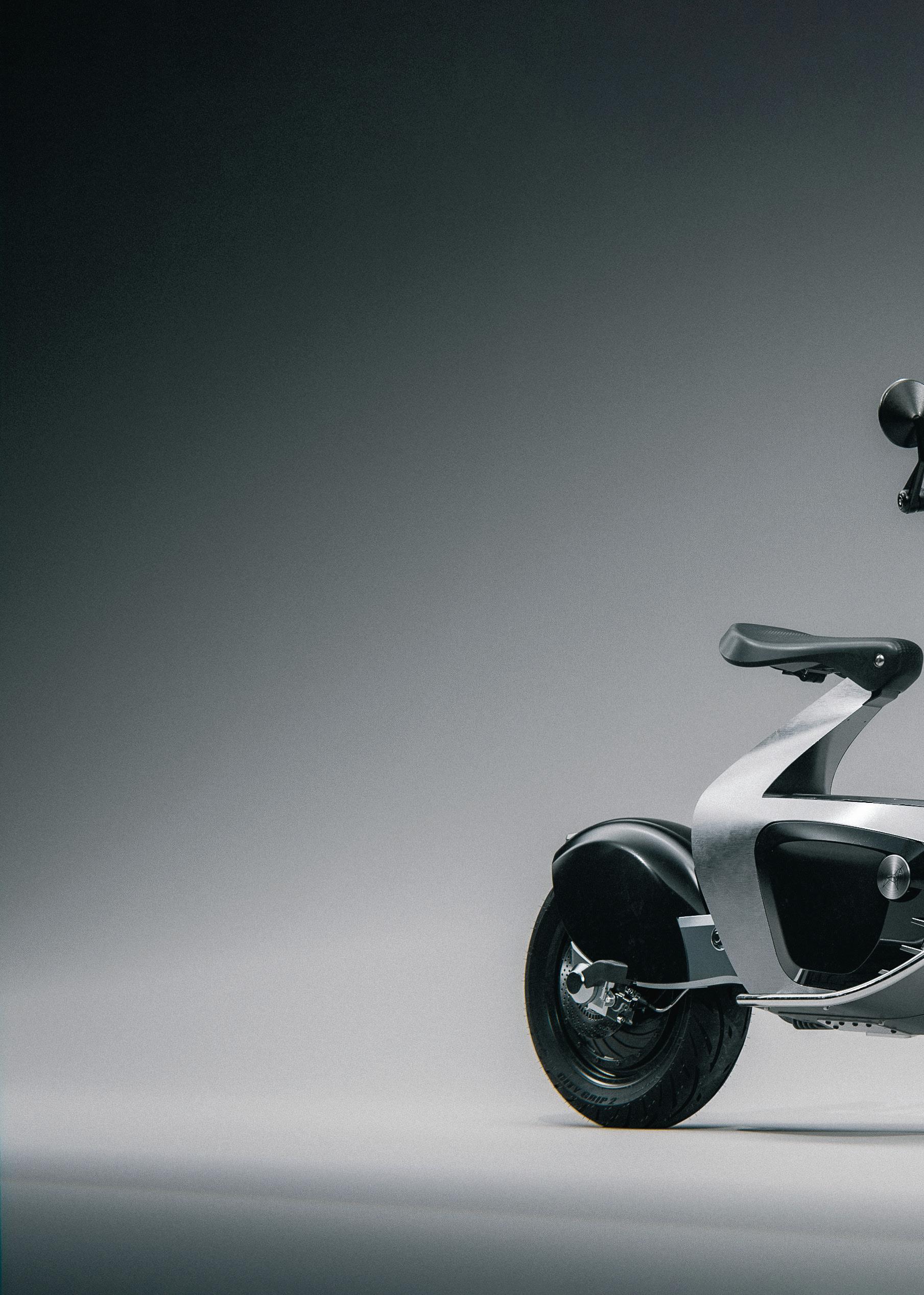
SIT STIL
The saddle boasts a streamlined design, featuring soft padding and independent suspension for ergonomic comfort
GREEN STEEL
Built using recycled Swedish stainless steel from Outokumpu, early life cycle assessment (LCA) analysis of Stilride 1’s carbon footprint, when compared to a market-leading reference scooter from a Chinese manufacturer, puts the Stilride firmly in the lead. Brand new, the Stilride saves 110kg of CO2, and after a full decade, the reference scooter’s footprint is 10% higher. What’s more, an end-of-life Stilride is far more recyclable
DECADES IN DESIGN
Stilride CTO Tue Beijer, pictured way back in 1995 with his first concept bike, comments on the design’s evolution: “Over the years, that silhouette has been an inspiration, to see whether it’s possible to manufacture and replicate it”

16 AUGUST / SEPTEMBER 2023 DEVELOP3D.COM
PATENTED FOLDS
Parent company Stilfold’s patented industrial metal folding origami technology and its proprietary software Stilware are being fine-tuned with the help of robotics expert Adaxis, with the goal of creating localised micro-factories
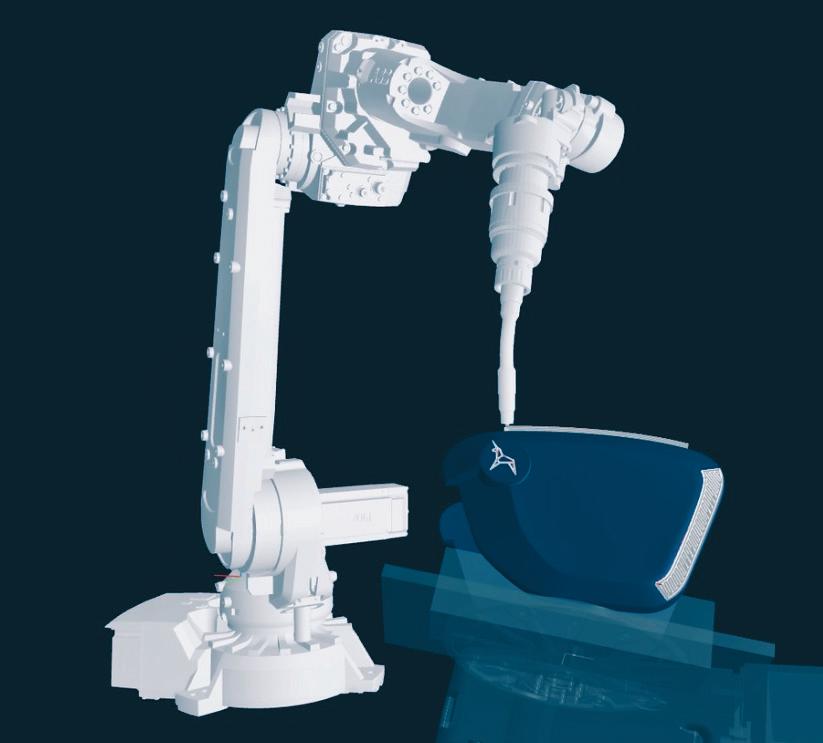
QUICKER CITY SLICKERS
Zipping around town is a cinch, thanks to the Stilride’s twist-and-go throttle. The scooter has a top speed of 100km/h and a battery range of around 120km

LIGHT ANGLES
The ultralight folded monocoque steel chassis adds structural strength, reducing weight and the number of components associated with a traditional plastic and metal scooter, from around 120 parts to just 20
See Stilride’s Jonas Nyvang present @
2022
20 September Warwick
SAFETY MEASURES
The meticulously designed stopping system was co-developed with motorcycle brake specialist ISR and global tyre manufacturer Continental, in order to bring those 13-inch wheels to a halt in a flash
PRICE & AVAILABILITY
First models are due to roll out of the factory in Spring 2024, costing €15,000 www.stilride.com
STRONG AS
» The engineering team at OX Delivers has hit the bullseye with an electric vehicle designed for use in developing nations. A ‘fail fast’, iterative prototyping approach to design has kept its mission to build the ‘Uber for potatoes’ charging forwards, as Stephen Holmes reports

AS AN OX
In Rwanda, roads to market are rarely as smooth as this, but the OX track can tackle them all

COVER STORY
Getting crops to market in Rwanda can be a real struggle for the nation’s farmers. The terrain may be fertile in this small, landlocked country in the Great Rift Valley of Central Africa, but it’s not known as the ‘land of a thousand hills’ for no reason.
To add to the transportation challenges associated with steep gradients, fewer than 20% of the country’s roads are paved, and severe flooding and landslides during the country’s biannual rainy seasons frequently join the list of obstacles that motorised transport must navigate.
As Kristiana Hamilton, a member of the 14-strong design and engineering team at OX Delivers cheerfully puts it: “The Rwandan roads are considerably worse than I think was originally anticipated!”
The thinking behind OX Delivers dates back to 2013, when philanthropist Sir Torquil Norman and the Global Vehicle Trust (GVT) charity got together to focus on building reliable goods transportation specifically designed for the African continent.
End-of-life trucks from other regions of the world are frequently imported to Africa, but with age-related wear
and the rough terrain they are forced to negotiate, these quickly become too expensive for users in local markets to fuel and maintain. Alternatives include using bicycles, people or animals to move goods – all too slow and restricted in the loads they can manage to build prosperous businesses. And thus the problems of low incomes, inefficient value chains and food waste continue.
GVT’s response was to commission acclaimed South African-British automotive designer Sir Gordon Murray to create the original OX truck, and four diesel prototypes were built as innovative flat-pack products made of engineered laminated panels bonded to steel frames.

Later, in 2020, OX Delivers was established to create a scalable business model that would support the transition of the OX truck into an electric vehicle (EV) for emerging markets. This design overhaul was backed by funding from US AID, Innovate UK, and the Advanced Propulsion Centre among others.
The idea here is that farmers should be able to rent space on an OX truck to take their goods to market – or as the OX Delivers team like to refer to it: ‘an Uber for potatoes’.
A pilot scheme is now running in Rwanda, chosen for its centrality and its abundance of small businesses, as well its credentials as a forward-thinking country
20 AUGUST / SEPTEMBER 2023 DEVELOP3D.COM COVER STORY
With the OX truck now upgraded to electric drive, Ox Delivers is working closely with key EV OEMs including Dana
that appreciates technology. It also has a relatively good electricity network fed by renewables (mostly hydropower and solar) – a necessity for any EV company.
CHALLENGING TERRAIN
Just as roads to Rwandan farms are seldom paved, the path to market for the OX design hasn’t been the smoothest journey, either.
Far from a straightforward swap-out to an electric powertrain, much of Murray’s original design had to be redeveloped.
OX 1, a full EV conversion from one of the original diesel trucks, was shipped to Rwanda for in-market testing and feedback, only to find on arrival that the central driving position that Gordon Murray is known for in his supercar designs isn’t permitted on the country’s roads.
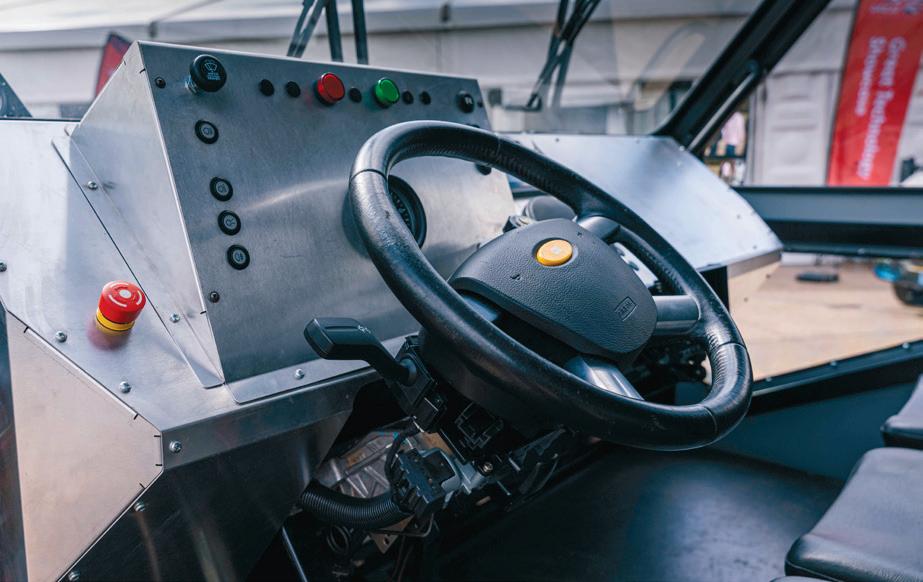
“It had to be converted at the port from central drive to left-hand drive, so that we could actually have the vehicle in the market to test,” says Hamilton, running through a list of changes that the team has had to assess, redesign and move forward on.
The original bench seat gave drivers no support on the rough roads, and its lack of adjustment made the ride deeply uncomfortable. “The Rwandan population overall is relatively short in stature, so if you can’t move that forward, you’ve got no support on your back and you’re sitting right at the step. So all of that changed,” she says.
For a vehicle destined to be carrying heavy loads in
challenging conditions, there was a lot to consider when overhauling the original design. Despite this, the transformation has happened quickly, with the OX team set up to ‘fail fast’. In other words, it has worked iteratively, identifying what won’t work, analysing what might work better, and then testing and repeating until the design is perfected.
Hamilton explains that at the start of 2022, the team combined to look at the main issues, feedbacks and to define what needed to be core to the OX Truck. “We laid all that out – predominantly stuff like progress on the roads, a decent set of suspension, all these things – and we could filter [the team] out into different sections.”
Having split into pairs of engineers and brainstormed ideas, the team then reunited to plot the best path forward for each section and for the vehicle as a whole.
The original chassis was relatively robust, but after running tests on the ground in Rwanda, the engineering team quickly spotted some issues, particularly with cracks. The chassis, notes Hamilton, was also not made in a way that makes it easy to repair. This has big implications for the OX Delivers business model, since it will be running the trucks itself, rather than selling them to third parties. Truck uptime is critical.
“We’re currently going through an iteration of the chassis and we’re gradually redesigning the whole thing so it fits better for our market and can be easily repaired,” she says. “We know it’s going to be durable and it’s made of materials that are available in this market, which is one of the big issues.”
Meanwhile, the original steel box section design works well – until you need to make repairs in a market where you can only buy bent sheets, which makes it difficult to make a full box section and have it be as strong as it needs to be.
“We work in an agile environment, where we work in two-week sprints. And, if we find something during that sprint, then we can go, ‘Actually, this isn’t going to work out’ and it makes it really easy for us to change direction,” she says. “We try to be as fluid as possible.”
With this design approach being guided by data fed back from the OX team running vehicles in Rwanda, the unloved original cab has been redesigned. An electronic drive unit (EDU) has been developed with EV experts Dana and the vehicle architecture has switched from ineffective front-wheel drive to more powerful rear-wheel drive with the option to adapt to all-wheel drive to deal with the harsh terrain.
The powertrain team has devised new brackets to hold the revised EDU, quickly working through ideas in Onshape, testing them through Onshape Simulation and iterating them several times before having physical prototypes made.

“We’re trying to move as quickly as possible, and our agile framework allows for that,” says Hamilton.

DEVELOP3D.COM AUGUST / SEPTEMBER 2023 21
1 2 3
● 1 The 3D CAD design for the Ox Truck was created in cloud-native Onshape
● 2 ● 3
A key priority for testing in Rwanda was switching the original cab design to left-hand drive
‘‘ We know it’s going to be durable and it’s made of materials that are available in the market, which is one of the big issues
Kristiana Hamilton, Engineer ’’
ALWAYS MOVING
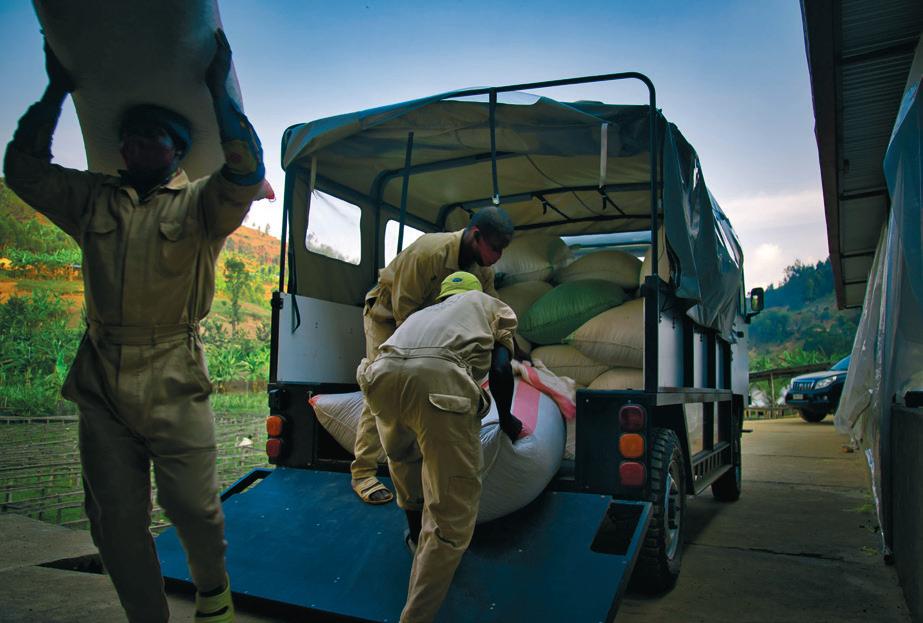
The fluidity of the team within OX Delivers means that the design team is constantly lending its expertise across multiple sections of the truck development. Hamilton explains that she’s recently worked on suspension, steering and chassis, and will be moving into cab improvement at some point in the near future. Since everyone needs access to the latest versions of CAD data, using cloud-based Onshape made perfect sense. “As a start-up, we can’t really afford to have servers that hold all of our data,” says Hamilton, “and Onshape was super easy to access for us.”


She also praises Onshape for its ease of use. “It’s incredibly intuitive and I think that’s been one of the biggest wins for us. We have a variety of engineers, with a variety of different skill sets, but a lot of people are expected to use CAD.”
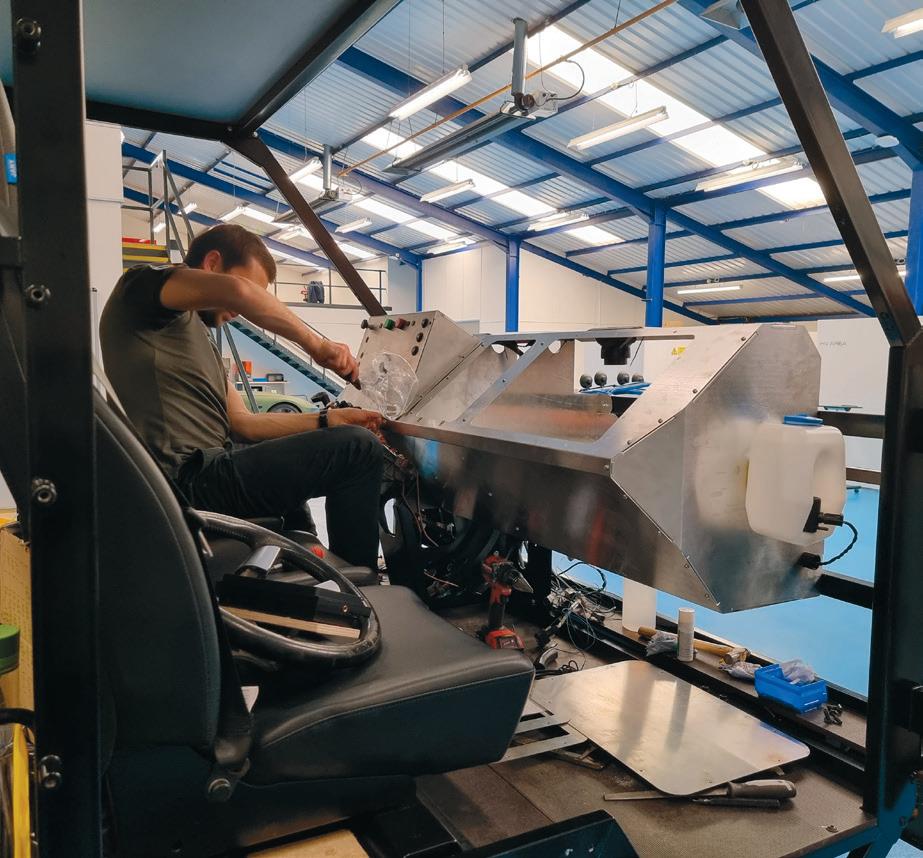
Take, for example, one team member in particular, a suspension expert who works in kinematics. “He worked out how to do that in Onshape, which was fabulous and it looks great. It really helped us not just with understanding our suspension, but also understanding our packages, how we need to design things. He was never fully confident in CAD, in terms of modelling, but he’s been able [to work in Onshape] because it’s so easy to just pick it up and do it,” says Hamilton.
The customer service offered by Onshape is “incredible”, she adds. “If there’s anything that’s a problem with the software or that we’re struggling to do, they’re really supportive. We have direct contact with them.”
Also proving its worth in Onshape are its custom features. These are created by the wider Onshape community in the native Onshape code, giving the OX team a way to easily find feature scripts and tools to tackle challenges for which the software might not have an immediate answer.
22 AUGUST / SEPTEMBER 2023 DEVELOP3D.COM
‘‘
’’ 4 7
As a startup, we can’t really afford to have servers that hold all of our data, and Onshape was super easy to access for us. It’s incredibly intuitive and that’s been one of the biggest wins
● 4 ● 5 Development models of the truck take shape at Ox Delivers’ headquarters in Warwickshire, UK
● 6 Engineer Kristiana Hamilton behind the wheel of an OX truck
● 7 Loading the cargo bay of an OX truck before it heads off to market
COVER STORY 5 6
● 8 The Ox truck will be produced as a flatpack in the UK before being shipped to Rwanda and assembled there
“We’ve started to use this a lot more recently,” she says. “Even if Onshape doesn’t have the [desired] functionality within the base software, you can find it elsewhere. It’s been really interesting lately, working out how best to utilise that software and the different tools that we can find.”
Ox works closely with partners, including transport OEMs Dana, Penso and Potenza. These organisations help iterate on the truck design with the latest CAD data and even test some prototype units and systems on the physical OX test units.
Both sides want to work with the latest CAD data as much as possible, although the major OEMs tend to work in Catia or NX, for which typically the OX team rely on importing STEP files into Onshape.
Penso has gone a step further: such is the cost and accessibility of Onshape that it has assigned two of its engineers to model files from their native Catia format directly into Onshape. The Penso team is trained not only in Onshape, but also on how OX manages its CAD structure, making it faster to integrate models regardless of complexity.
The existing truck CAD model is split into cab, base and powertrain, leading off into different subsections within that. However, more recently the team has been looking to alter this to cab, front section, middle section and rear, with powertrain in the middle.
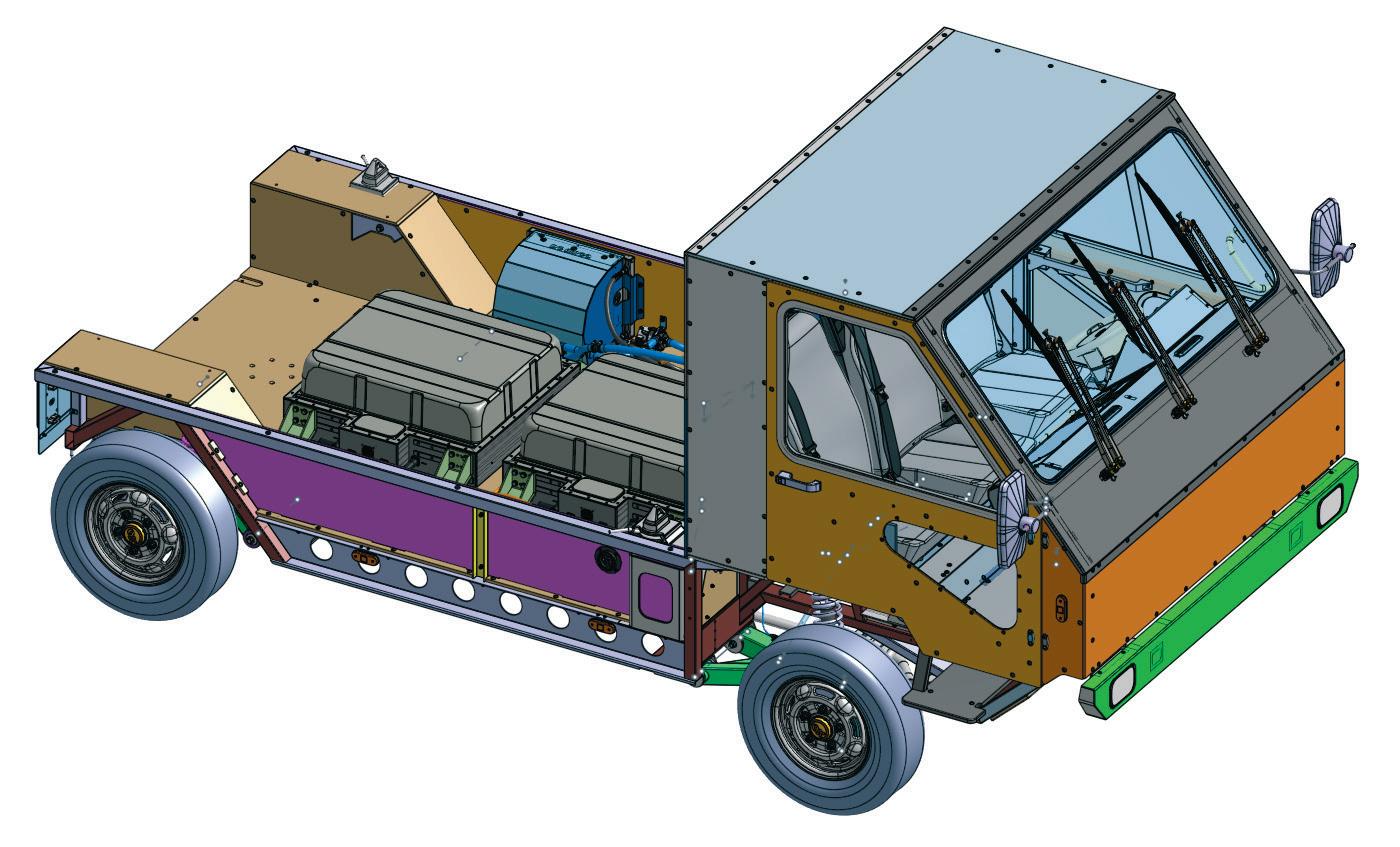
“That allows it to be modular and lets us do that individual testing, because it’s not like a traditional vehicle, where the whole chassis is integrated. You have these split sections that all connect to one another and allow you to do these individual tests on specific areas, rather than having to have a full truck design to be able to do that.”
The team outsources some simulation work to partners and specialists in specific scenarios such as crash testing, but by splitting up the design, it allows these trusted third parties to work quickly on the design.
ONLINE DELIVERY
Working using a cloud-based system means that team members in Rwanda can also access and update the latest data, remaining connected to the process
One of the UK team members is now based in Rwanda, where he is gathering a lot of design data from the field, from real-time feedback from testing different duty cycles to information on issues spotted during maintenance. He also has access to the full CAD model.
Another key member of the Rwanda team is a designer focused on the goods storage section at the back of the truck. Here, a lot of work is going into ensuring that the rear canopy is the right size and equipped with the right tools for the job, including scales to ensure customers don’t overload the truck.
Designers and engineers from the UK regularly head out to Rwanda in order to get a first-hand feel for the market, conditions and customers, while mechanics from the Rwandan team travel to the UK to undergo the necessary high voltage training needed to maintain EV systems. This back and forth greatly assists both digital and in-person knowledge-sharing.
Once the team has the production model ready, the plan is that regular shipments from the UK will form the basis for flat-pack delivery. So the trucks will be built in the UK and then assembled by the OX team in Rwanda, where thought is already going into sharing assembly training guides that leverage the existing CAD data.
Soon, it is hoped, an entire network of OX Trucks will be successfully transporting produce across the hills of Rwanda, before the company expands its reach across borders into neighbouring countries. At the same time, OX will be raising the prosperity of its users through a fit-for-purpose design that puts EV technology at the heart of improving economies. Not even Rwanda’s two rainy seasons can dampen the exciting promise of a better future for its farmers.
www.oxdelivers.com
» Welcome to The D3D 30, our round-up of 30 new technologies from around the world that we firmly believe could deliver a major boost to your product development work
THE D3D 30
24 AUGUST / SEPTEMBER 2023 DEVELOP3D.COM
The past 12 months have seen design and engineering teams around the globe working faster and harder than ever before. What better way to keep ahead of unseen challenges and competitive threats than implementing some of the latest technologies on the market?
Selected from companies around the world, the D3D 30 features everything from AI-powered sketching tools to software for manufacturing process observation. Our hope is that you find something here on our list for your own personal toolbox, making you more productive in 2023 and beyond. The products listed, we believe, have the potential to light up your development process, putting you in prime position for taking on even more ambitious projects in the months ahead.
Some of these technologies come from startups that we’re excited to see take their first steps out of stealth mode. Others come from more established companies, working hard to develop
new capabilities within their existing systems or launch brand-new tools to take customers in new and thrilling directions.
We’re delighted to showcase this illustrious group, selected entirely on merit. Our listing includes new takes on modelling, innovative ways to tackle big data challenges, fresh approaches to 3D printing, the very best of AI and more – all with the aim of helping our readers design and build the products and systems of the future.
Previous lists have highlighted new technologies that we’ve watched grow in terms of capability and adoption. Speaking with readers, we know that many of them have since been adopted in your businesses and become vital to your workflows.
We have faith that the Class of 2023 will offer you many more such candidates – and hopefully, you’ll have the chance to get hands-on with many of these products, including at DEVELOP3D LIVE (www.develop3dlive.com) , which returns to the UK on 20 September 2023.
1000 KELVIN AMAIZE Monitoring metals
For 3D printing in volume manufacturing, products like Amaize will be critical in boosting output quality and possible quantities.
Specifically designed for metal 3D-printed parts, Amaize predicts printing errors and defects by analysing material, machine, toolpath and scan strategies, to eliminate distortions and reduce overheating and support structures. AI is at play here, of course, helping to identify problematic regions in builds. It does this in the background, notifying you when it’s ready and offering ready-made optimisation strategies.
In this way, users ensure they have a 3D printing workflow as close as possible to guaranteed before exporting the file to their printer.
www.1000kelvin.com
ALTAIR SIMSOLID CLOUD Simulation without boundaries
Having acquired SimSolid back in 2018, Altair has continued to enhance the product. By enabling it as a cloud-based software, its nextgeneration simulation technology is now available from any web browser, anywhere and at any time.

Altair certainly seems confident in what it’s selling, with CEO James Scapa going as far as to suggest that “anyone using conventional finite element tools will be left behind if they do not embrace this technology soon.”
Being cloud-native, the software looks to eliminate the need for geometry simplification and meshing, the most time-consuming aspects of the process, ramping up the speed for real results and allowing more complex models to be solved in minutes rather than hours.
www.altair.com/simsolid
ARTEC RAY II
Big scan double act
Developed in collaboration with Leica Geosystems, part of Hexagon, the Artec Ray II has the ability to capture large products and systems ten times faster than the original Artec Ray.
Its 36 MP three-camera system supports a 3D point accuracy down to 1.9 mm from 10 metres.
The Ray II’s big onboard touchscreen and clear user interface add to the sense that this is a high-end 3D scanner that anyone can get to grips with. Yet the big trick up the Ray II’s sleeve is its data compatibility in Artec Studio software with data from other Artec 3D scanners, such as the wireless handheld Artec Leo. This lets users provide comprehensively detailed scans of selected areas of bigger objects and scenes being captured.
www.artec3d.com
AUTODESK ALIAS X VRED 2024 Smooth automotive
A decade on from its acquisition by Autodesk, VRED really feels part of an automotive design suite capable of taking on all comers.
While v.2024 has seen Alias add more control and time-saving surface modelling tools, it’s the major overhaul of the user experience that users will probably notice most.
VRED has shifted closer to the surfacing tool in both appearance and usability, with similarities including elements such as its icon sets and window management. By sharing a common design language, the aim has been to make transitioning between the two tools more seamless and fluid, and easier to start using for those still holding back from using VRED in preference of other renderers.
www.autodesk.com
DEVELOP3D.COM AUGUST / SEPTEMBER 2023 25
CADMIO CADMIO
The Apple iPad is already a staple among designers, so it was only a matter of time before quick and easy visualisation tools emerged.
Step forward Cadmio, a real-time renderer that quickly imports a .STEP, .STL or .OBJ model and lets you manually tweak and tune colours, materials and lighting. Optimised for a touchscreen interface, it’s as simple as picking up the device and creating some eye-catching variants whenever inspiration strikes.
With a catalogue of over 100 curated material presets and HDR backgrounds for all kinds of products, with new options added frequently based on user requirements, the gesture controls and sliders make for fast scaling and orientation.
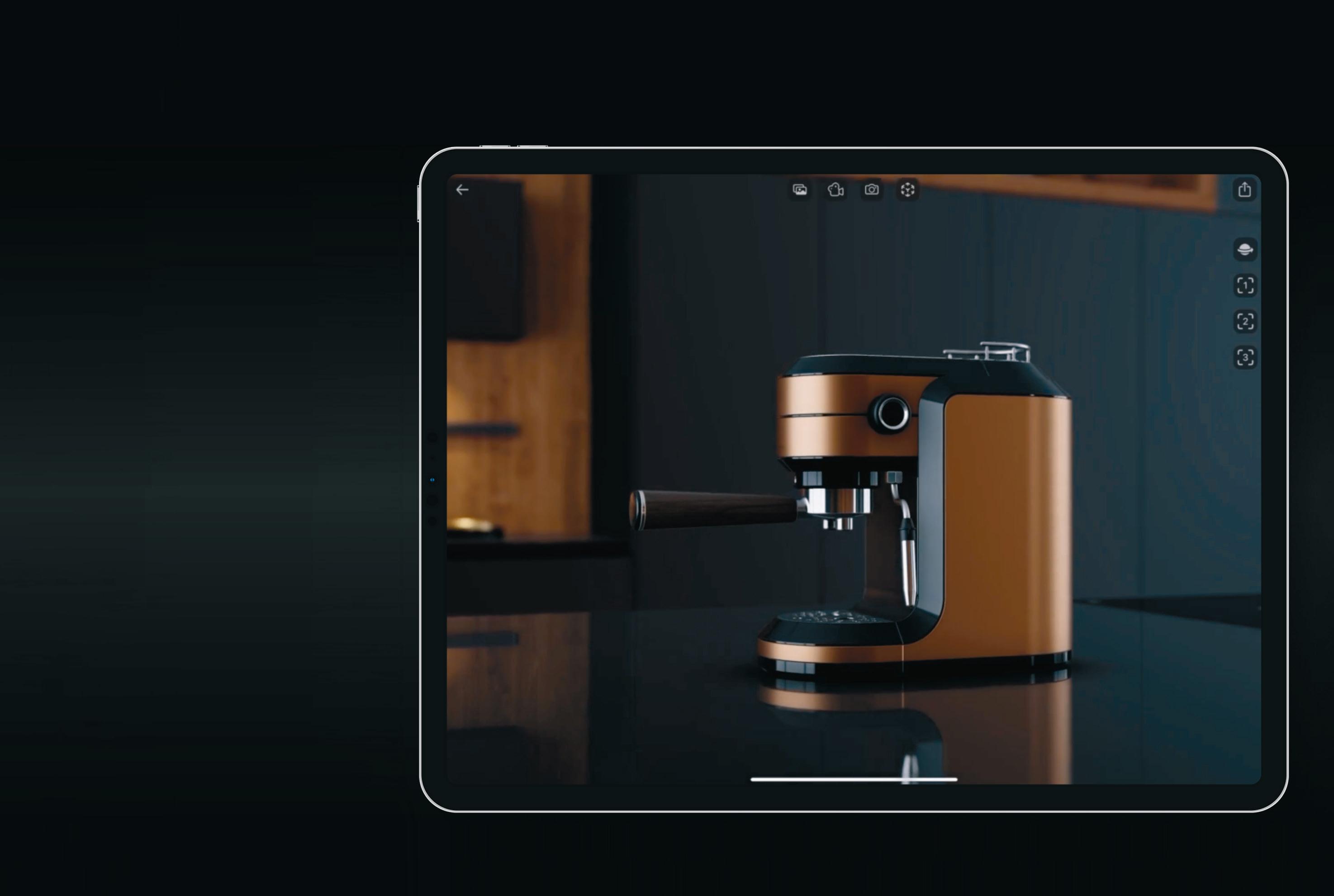
www.cadmio.io
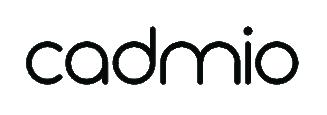
BASF FORWARD AM ULTRASIM TESTPAD Learning lattices
With an enviable reputation in the world of AM materials, BASF Forward AM has moved into promoting the design capabilities of 3D printing, launching its UltraSIM product line to open up the world to lattices.
UltraSIM 3D Lattice Engine, powered by 2022 D3D 30 entrant Hyperganic, enables users to quickly generate validated lattices at an extremely low price point. But if the software isn’t enough to help get your head around the physical properties of a lattice, the UltraSIM 3D Lattice Design Test Pad acts as a touch-and-feel sample chart for lattice parameters, with specific examples for footwear, protection and seating applications. The goal? Helping you find exactly the right lattice for the job.
www.forward-am.com
CLOUDNC CAM ASSIST
A CNC co-pilot
CAM Assist from CloudNC is billed as a CAM programming co-pilot, capable of generating machining strategies in seconds at the click of a button.
Currently available as a plug-in for Autodesk Fusion 360, it’s able to create machining strategies for 3-axis parts in short order, slashing lead times and freeing-up experienced programmers for more demanding jobs.
Using computational optimisation and AI inference to rapidly determine the right strategy and toolset to manufacture a part, along with the most appropriate cutting speeds and feeds from the user’s library, CAM Assist should be on the radar of anyone looking to tackle precision manufacturing while fending off rising costs.
www.cloudnc.com
COGNITIVE DESIGN SYSTEMS COGNITIVE ADDITIVE Generative
for real
Cognitive Design Systems’ (CDS) machine learning tools for 3D modelling have branched out in the direction of 3D printing and toolmaking feasibility. Tools for the former reduce the time needed to perform build prep and part studies through automation.
Designs can be analysed for performance, manufacturability and cost. Risks such as delamination, heat accumulation and surface roughness can be assessed. The most recent update adds a carbon footprint calculator, for a complete view of the cradle-to-gate pathway.
CDS Additive is already integrated with Stratasys’ GrabCAD software, so you might already have these tools at your disposal.
www.cognitive-design-systems.com
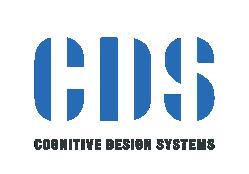
DELL PRECISION 5680 Performance meets portability
Dell has done it again with this sleek 16-inch mobile workstation that boasts the smallest footprint on the market. It’s a superb, well-built machine, which also stands out from the crowd with its stunning UHD+ OLED InfinityEdge panel and haptic trackpad.
While it can take up to an Intel Core i9-13900H CPU and Nvidia RTX 5000 Ada GPU, it’s arguably best configured with the CAD and entrylevel viz-focused Nvidia RTX A1000 or RTX 2000 Ada.
Even though EPR technology allows more power to be delivered through USB-C (165W versus 130W), such powerful processors always benefit from more, which is where the 240W Precision 7680 Workstation comes in.
www.dell.com
26 AUGUST / SEPTEMBER 2023 DEVELOP3D.COM THE D3D 30
iPad viz tool
DELTAHUB CARPIO 2.0 All in the wrist
Whipping your mouse around a desktop all day is a sure-fire route to long-term wrist problems, hence our interest in what DeltaHub is doing with its Carpio range.
Keeping the wrist elevated roughly a centimetre from the desk maintains it at as natural an angle as possible, and takes pressure away from the wrist and towards the palm. Most importantly, the entire support glides across a desk mat, letting you move your entire arm and reducing damaging rotational movements.
While the first iteration was built using dozens of prototypes and 3D scans of hand moulds, the second variant has been built on the feedback of some 20,000 users. It’s a slick way to reduce the risk of carpal tunnel syndrome.
www.deltahub.io
FORMLABS FR RESIN Keeping it cool
In the year in which Formlabs launched its automated 3D printer fleet technology and expanded its resins portfolio, it might have been easy to miss the arrival of the company’s new, certified flameretardant material, FR Resin.
FR Resin is UL94 V-0 and FAR 25.853 certified, both key requirements in many hazardous environments. In other words, parts built from it will have the necessary flame, smoke and toxicity (FST) ratings to go straight into operation.
Marry these capabilities with the level of detail that Formlabs printers deliver, and you’ve got a great combo for delivering electrical connectors, high-temp jigs and fixtures, underthe-bonnet automotive components, and interior plane and rail parts.
www.formlabs.com
HEXAGON NEXUS Building a network
While other vendors have focused on building tight-knit, brand-specific platforms, Hexagon has chosen a different approach, opening up its Nexus platform to third parties in its bid to connect data and machines.
With real-time collaboration and feedback between engineering and manufacturing, Hexagon says Nexus for Developers provides the tools necessary to enable anyone to connect equipment, data and processes and get insights in real time, in context and in one place, driving better informed decision-making.

After all, whether it’s data from the latest million-dollar 3D printer that you’re considering splurging on, or from a workshop full of kit you already own, you can only act on the data you can access.
www.hexagon.com
HP Z2 SFF G9 Remote control
This super-compact workstation made its way onto the D3D 30 last year, and while it has since had a significant 13th Gen Intel Core CPU upgrade, that’s not the reason for its reappearance on this year’s listing.
The fact is that this compact workstation is playing an increasingly important role in centralised workstation deployments.
For each HP Z2 Mini in a rack, IT Managers can now plug in the external HP Anyware Remote System Controller USB box to get a similar level of control over their workstation fleet as they already enjoy over their server estate. Combined with HP Anyware remote access and collaboration software, this gives HP a joined-up solution to support the growing shift towards hybrid working.
www.hp.com
INSTRUMENTAL INSTRUMENTAL Spotting errors
Instrumental delivers real-time, traceable manufacturing data for valuable insights across the product lifecycle, using AI to find faults that could cost you dearly in the long run.
Using images and videos from factory production lines, Instrumental’s AI is capable of spotting defects in manufactured products, to the point that you can recognise a design defect before that faulty product ever ships.
Examples show aerial orientations in electronics where, with fractional alterations, product quality and manufacturability could improve. Conversely, there’s the opportunity to reduce waste and the need for shipping replacements — all from faults being spotted on production lines and fed back to design teams. www.instrumental.com
LATTICEROBOT LATTICEROBOT Gyroids on steroids
Lattice infills may be the way to make your products lighter and stronger, and to use less materials, but much of the information on how they can be used best is still siloed away within organisations and research laboratories.
LatticeRobot aims to close the gap, bringing engineers together in a computationally enhanced working space to aggregate their knowledge of lattices, textures, and related mesoscale geometry and applications. In this way, everyone discovers functional lattices and gyroids that could boost their own product development work.
Information from vendor partners highlights referenced products and services, helping users discover new products for their applications.
www.latticerobot.com

MAYKU ENGINEERING MATERIALS Masterful moulds
Multiplier, Mayku’s peerless pressure former for the desktop, is already the most detailed mouldmaker for low-intensity projects, but with its new range of engineering materials, the company is also delivering some intriguing new options.
The Multiplier can apply four tonnes of pressure to a single material sheet, replicating grooves up to 0.0004mm, and users can now capitalise on the properties of ABS, PMMA (Acrylic), and UHMW materials in their workflows. ABS brings strength and durability; Acrylic is a clear glass alternative, perfect for prototypes; and UHMW is a low-friction choice for moulds.
With more materials in the pipeline, this easy-to-use piece of kit is generating a lot of interest.
www.mayku.com
NAYA CREATE Hands-on work
This customisable, modular keyboard is designed to adjust to your workflow, while remaining ergonomic, no matter what the task.
A touchpad, jog-wheel, threedimensional puck and trackball can all be hot-swapped into the keyboard docks, with each module holding its own battery, allowing Naya Create to support RF and Bluetooth 5 while remaining ultrathin and ultra-portable.
The entire keyboard can be mapped to a user’s preference, giving users the freedom to customise in exacting detail everything, from a double-tap on a key to a three-fingered swipe.
Integration for Autodesk Fusion 360, Adobe Creative Cloud and Blender are already available, with more options promised in future.
www.naya.tech
DEVELOP3D.COM AUGUST / SEPTEMBER 2023 27
LENOVO THINKPAD P16S GEN 2 Power efficient pro

When it comes to mobile workstations, buyers often place too much emphasis on performance and too little emphasis on other things that also matter, such as power efficiency.
Here, Lenovo’s new 16-inch ThinkPad P16s Gen 2 scores highly, thanks to its AMD processor.
The AMD Ryzen 7 7840U not only packs 8 cores and a substantial 5.1 GHz boost into a 28W package, but it also includes an integrated AMD Radeon 780M GPU. Now, this GPU may not be super powerful, but the upside is that it comes with a pro driver and is perfect for mainstream CAD.
Importantly, there’s no need here for a separate GPU, which brings down costs substantially and also extends battery life. www.lenovo.com
NTOP FIELD OPTIMIZATION

Simplifying the complex
NTop has always been the most intriguing generative design software on the market, but its most recent release, nTop 4, has seen the company behind it go even further to help engineers navigate the overwhelming number of design parameters.
The key benefit of Field Optimization is that the underlying material model used to compute the properties of a structure is now a function of any number of geometric design parameters, rather than a single value such as material density.
This allows engineers to focus on specifying the design intent and requirements of a part, while letting the software automatically determine complex geometric details such as lattice layouts, wall thicknesses, rib patterns and other spatially varying parameters.
www.ntop.com
NVIDIA RTX 4000 SFF ADA GEN Compact powerhouse
Nvidia boldly redefined the lowprofile graphics card back in 2021 with the Nvidia RTX A2000. Its double-slot board design blew other GPUs of the time out of the water, with its bucketloads of power for entry-level viz workflows.
The new Nvidia RTX 4000 SFF Ada Generation takes things to a whole new level, by doubling the performance and putting a whopping 20 GB of memory at the user’s disposal.
From GPU rendering to real-time 3D at 4K resolution, this 70W GPU takes everything in its stride.
In some ways, its arrival marks a true coming of age for the compact workstation, but bear in mind that, as always, stellar performance in a pint-sized package doesn’t come cheap.
www.nvidia.com
PLASTICITY PLASTICITY
Solid modelling
Even as big CAD vendors build out their products as all-singing, alldancing behemoths, we continue to see new solid modelling tools appear on the market, and Plasticity is one of the most exciting of these.
Parasolid NURBS modelling combined with the best workflow innovations from polygonal modelling software forms the basis for the software, for users who have grown up using software like Blender but are now looking to move into more complex solid modelling.
Similar to Blender, a community has already emerged offering YouTube tutorials galore, but Plasticity offers some serious pro-user features, including HOOPS Exchange file translation. All this comes in a slick, easy to navigate UI, all for a pro license fee of $299 for four seats. www. plasticity.xyz
PRINTFOAM 3D PRINTFOAM Forever blowing bubbles
The great advantages of 3D printing when it comes to lightweighting have been expanded by the team at Printfoam 3D. The product incorporates a controlled level of bubbles in 3D printing resin, drastically lightening parts, reducing material costs and improving compressive properties.
More air and less resin mean rapid printing, allowing high-viscosity resins to be used and opening up a whole new world of materials.
Materials filled with ceramic, metal, glass or polymer fibres and particles can be designed to deliver tuned EM/RF, thermal, acoustical and mechanical performance when post-processed, while the lightness means parts can be much larger than traditional 3D printed parts, requiring fewer support materials.
www. printfoam3d.com

28 AUGUST / SEPTEMBER 2023 DEVELOP3D.COM
30
THE D3D
3D scanner is the latest ‘swiss army knife’ handheld unit to be launched by Shining 3D.
Equipped with dual light sources –blue laser and infrared VCSEL – it has been developed for a wide number of applications. And it has the modes to match, including 26 laser lines suitable for large simple parts; 7 parallel laser lines for scanning fine details, and a single laser line option that can obtain 3D data from narrow channels or holes.
The infrared mode, meanwhile, allows the FreeScan Combo to quickly set up and scan without markers.
Compact, ergonomic and weighing a smidge over 600g, the Freescan Combo links to most inspection and design software simply for fast data sharing.
www.shining3d.com
Siemens is looking to assist everyone involved in the product development process to solve their challenges together with its new approach to Teamcenter, which adds Microsoft Teams features to the PLM system.
For example, service engineers or production workers can use mobile devices to document and report product design or quality concerns using natural speech, with Microsoft Azure OpenAI Service using their comments to automatically create a summarised report.
Workers can record observations in their first language, which are then translated into the official company language. Their feedback can then be routed within Teamcenter to the appropriate design, engineering or manufacturing expert.
plm.sw.siemens.com

Creo+, a cloud variant of PTC’s CAD system has finally launched. And it isn’t just a bulked-up version of sister product Onshape, but remains sufficiently tied to the existing Creo product to make the transition to software-as-a-service (SaaS) less stressful.

The key Creo modelling tools are all here, with Creo+ users able to collaborate on designs simultaneously with internal and external partners, accelerating product development and reducing redesign work. Its ‘fully upwards compatible’ from onpremise versions of Creo and built on the same core technology, no data translation is needed when heading into the cloud environment (although Creo+ to oldschool Creo still has challenges.) But with everything needed onboard, few will look backwards in any case.
www.ptc.com
DEVELOP3D.COM AUGUST / SEPTEMBER 2023 29
THE D3D 30
SHAPR3D HISTORY-BASED MODELLING Beyond concept
This plucky iPad 3D concepting tool has elbowed its way into workflows around the world. Along the way, the company behind it has added rendering tools, branched out across all mobile/desktop hardware, and is now adding history-based modelling.
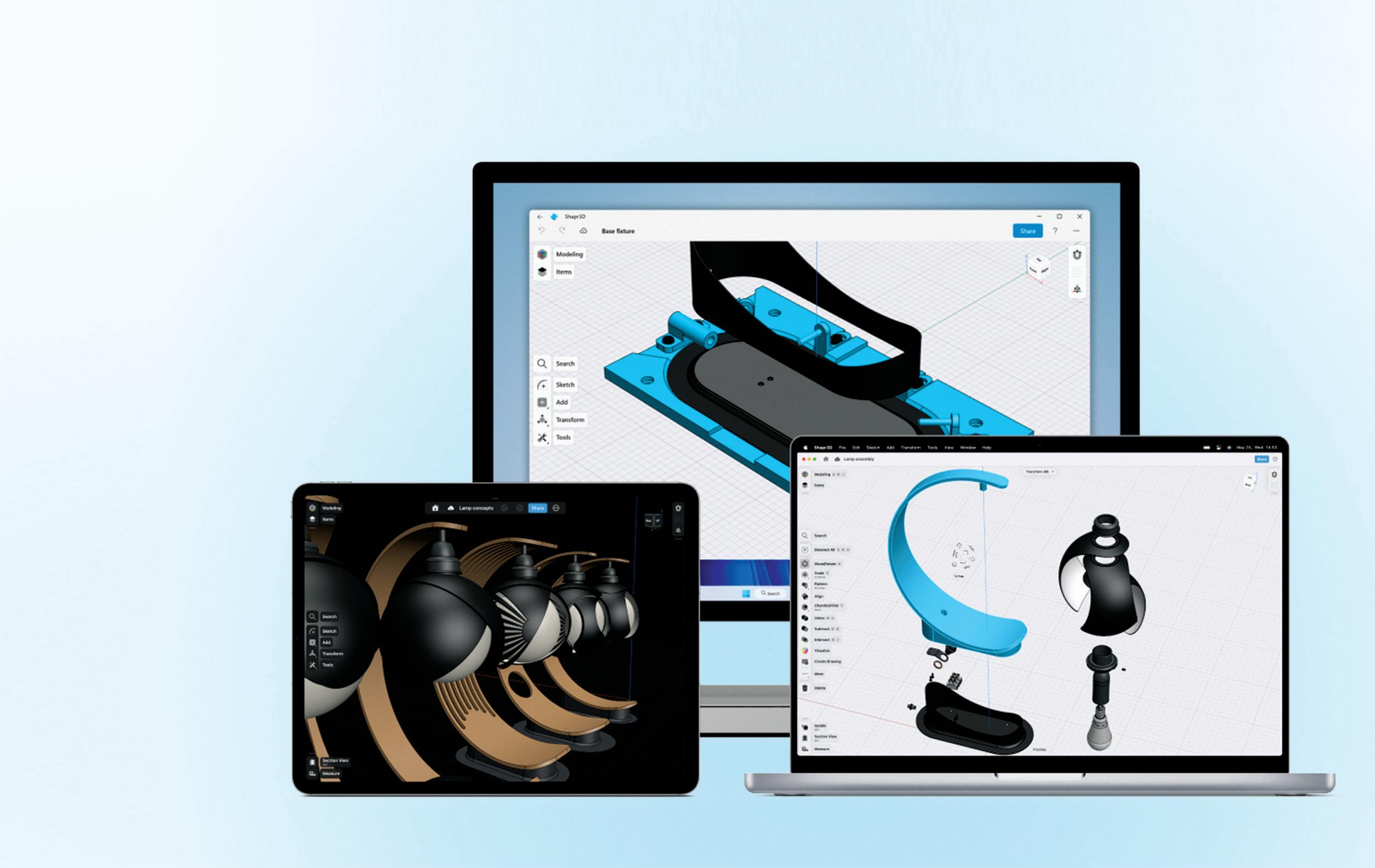
That will add to its appeal for companies with more complex workflows, yet the user experience remains as good as ever, with the ability to switch between tablets and desktops, pull up designs on a smartphone in the workshop, or iterate an idea while sat on a plane. More organisation is also being added, with a new Folders tool launching to provide an even more frictionless workflow and allowing users to share designs as necessary. www.shapr3d.com
VISIONMINER NANO POLYMER PRINTBED ADHESIVE
It’s a stick-up!
Sometimes, little things make all the difference, and when it comes to increasing throughput in 3D printing with FDM polymers, Visionminer has every aspect of the workflow covered.
Its nano polymer printbed adhesive is designed for hightemperature engineering materials, keeping parts locked to the plate to combat warping, lifted edges and shifted base layers.
Designed for PEEK, ULTEM, PPSU and other high-performance FDM polymers, a thin smear of this build plate glue works for nearly every filament, including Nylon, ABS, PLA, PETG, PEI and PSU. Capable of withstanding pull-force pressures over 20,000 PSI, the adhesive works on multiple build plate surfaces, too. www.visionminer.com
VIZCOM VIZCOM
AI for ideation
Not content with performing incredible transformations from sketches to renderings, Vizcom is also a tool that can also help designers ideate and then iterate those ideas in multiple ways.
Built-in sketch tools and layers –including 3D forms – are combined with a generative text prompt in order to build a concept quickly, while giving the user some valuable control over the infinite design variations that AI can throw up.
Erasing or sketching over an AIgenerated render produces further updates, helping to hone designs. The simple user interface lets users decide how much of their original sketch will influence the overall look, while a library of render styles can be selected, from soft pastels to colourpopping brights.
www.vizcom.ai
VIZOO 3D XTEX Texture capture
Outputting high-resolution, physically based (PBR) texture maps, Vizoo’s xTex solution marries workbenchsized proprietary scanning technology with its own software. The photorealistic material samples it generates will appeal to designers in many sectors, from footwear to automotive.
Working with technology partner Nikon, Vizoo offers two scanning sizes to capture any type of material. An A4 size material swatch at 600 dpi takes just a couple of minutes. The software automatically generates PBR texture maps from a material’s visual properties, while pattern recognition algorithms intuitively create seamless textures and generate realistic colour variations of yarn dyes and multicoloured materials on the fly.
www.vizoo3d.com
XENCELABS PEN DISPLAY 24 Screen time
Boasting a single surface sketching surface with glare reduction so good that you can use it in bright daylight, and with more customisation options than you can shake a stick at, the Pen Display 24 from Xencelabs is a joy to use.
The stats back it up: the display delivers 1.07 billion colours, for accurate colour reproduction on its 4K ultra-high-definition resolution (up to 3,840 x 2,160), and comes mounted on a stand that can be angled between 16 and 72 degrees. Moreover, everything that the user needs to get working quickly is included with the product: cables, two pens and the QuickKeys remote with its integrated OLED display. This remote offers up to 40 hotkeys that can be set up for every application that you use.
www.xencelabs.com
30 AUGUST / SEPTEMBER 2023 DEVELOP3D.COM
Automate SOLIDWORKS manufacturing processes & sell digitally using DriveWorks
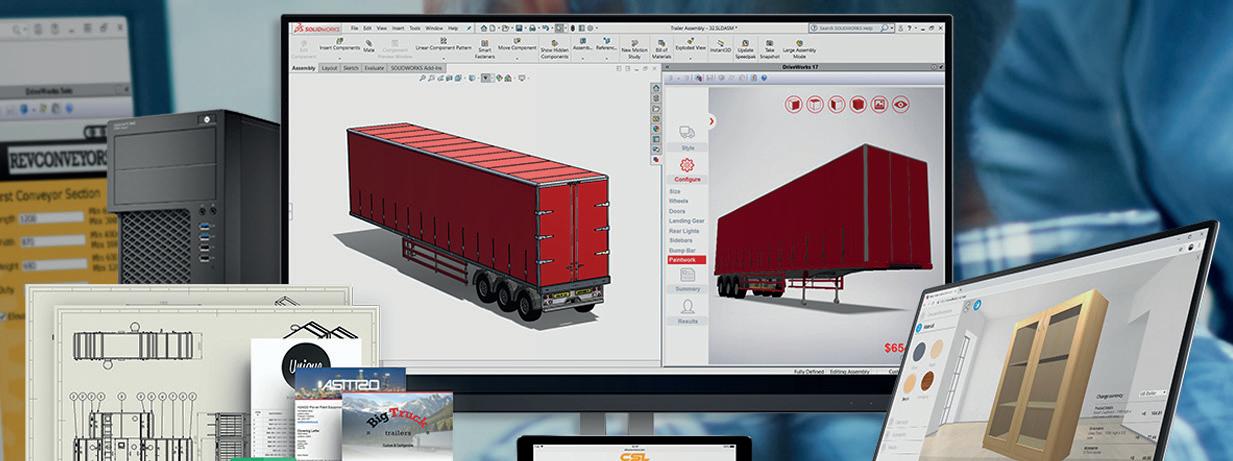
DriveWorks is flexible and scalable. Start for free, upgrade anytime. DriveWorksXpress is included free inside SOLIDWORKS or start your free 30 day trial of DriveWorks Solo.
Modular SOLIDWORKS® automation & online product configurator software




Complete SOLIDWORKS part, assembly and drawing automation
Automatically generate manufacturing and sales documents
Configure order specific designs in a browser on desktop, mobile or tablet





Show configurable design details with interactive 3D previews

Integrate with SOLIDWORKS PDM, CRM, ERP, CAM and other company systems




Scalable and flexible licensing options

One time setup
Set up once and run again and again. No need for complex SOLIDWORKS macros, design tables or configurations.

Save time & innovate more Automate repetitive SOLIDWORKS tasks and free up engineers to focus on product innovation and development.
Eliminate



DriveWorks rules based SOLIDWORKS automation eliminates errors and expensive, time-consuming design changes.

Connect sales & manufacturing
Validation ensures you only offer products that can be manufactured, eliminating errors and boosting quality.


Integrate with other systems
DriveWorks Pro can integrate with other company systems, helping you work more efficiently and effectively.
Intelligent guided selling
Ensure your sales teams / dealers configure the ideal solution every time with intelligent rules-based guided selling.
level design
included free inside SOLIDWORKS® Find under the SOLIDWORKS tools menu Entry level SOLIDWORKS part and assembly automation Create a drawing for each part and assembly
SOLIDWORKS® part, assembly and
automation add-in Sold and supported by your local SOLIDWORKS reseller Automate SOLIDWORKS parts, assemblies and drawings
automatically Enter
SOLIDWORKS Free
file
FREETRIAL
DriveWorksXpress Entry
automation software
DriveWorks Solo
drawing
Generate production ready drawings, BOMs & quote documents
product specifications and preview designs inside
online technical learning resources, sample projects and help
30DAY
DriveWorks Pro
Sold and supported by your local SOLIDWORKS reseller
errors
www.driveworks.co.uk Try examples online at www.driveworkslive.com
Sifer srl Bridges the Gap Between Part Cutting and Assembly With Fusion 360
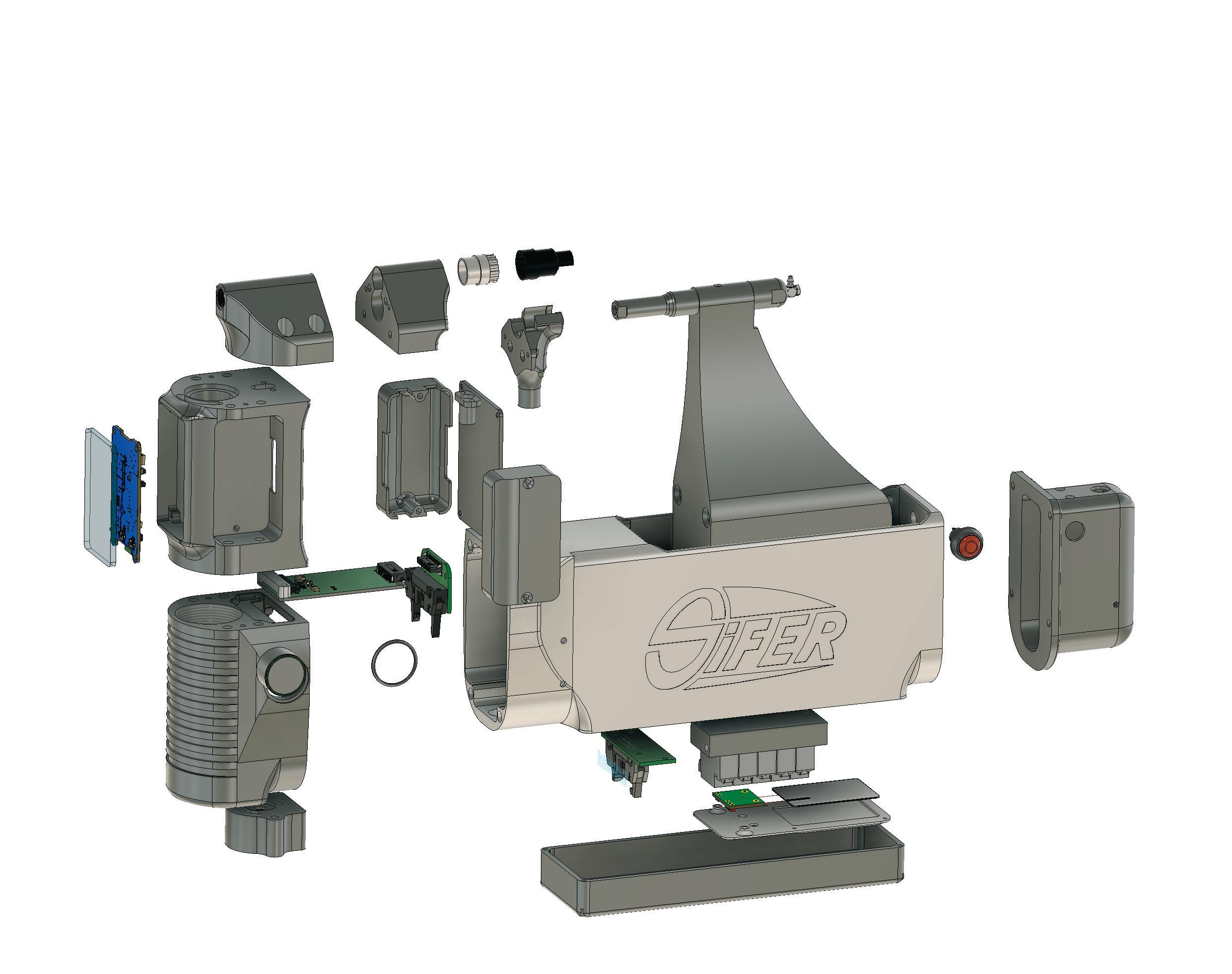
Sifer srl is a 25-person company based in Naples, Italy, known as a reseller for industrial components. The company also has a precision mechanics division that designs, makes, and certifies bespoke complex systems for clients.
Designing and manufacturing for the aerospace industry, in particular, means always staying ahead of the curve. Sifer srl is doing just that with its innovative new approaches and designs for incorporating robotics and subtractive manufacturing into its process — all powered by Autodesk Fusion 360.
Designing and building custom tooling
When Sifer srl landed a project for a major installation of rivets in panelling for a large aircraft, the company began thinking of a way to make its development process more efficient. CNC machines are meant for cutting
only — not cutting and assembly combined. To bridge this gap and speed up its workflow, the team decided to design and build a new machine tooling unit specifically for a 6-axis KUKA robot to perform this application.
The result? Sifer srl designed a new end-of-arm tooling unit for drilling, riveting, and fastening in Fusion 360. Thanks to the custom build, the KUKA robot can do everything it needs to do in one operation with precision, accuracy, and speed — and without having to disassemble the parts first. The end customer benefits by reducing the physical burden of a human performing this task, which in turn increases productivity, repeatability, and scalability.
The resulting tooling unit is extremely versatile for reaching awkward spots. Without digital commissioning, a team designing such a tool would typically have to assume the robot could reach or twist to a certain area during the design process. In Fusion 360, however, the Sifer srl team could see and solve issues with digital iterations to ensure the robot would perform as expected in the real application.
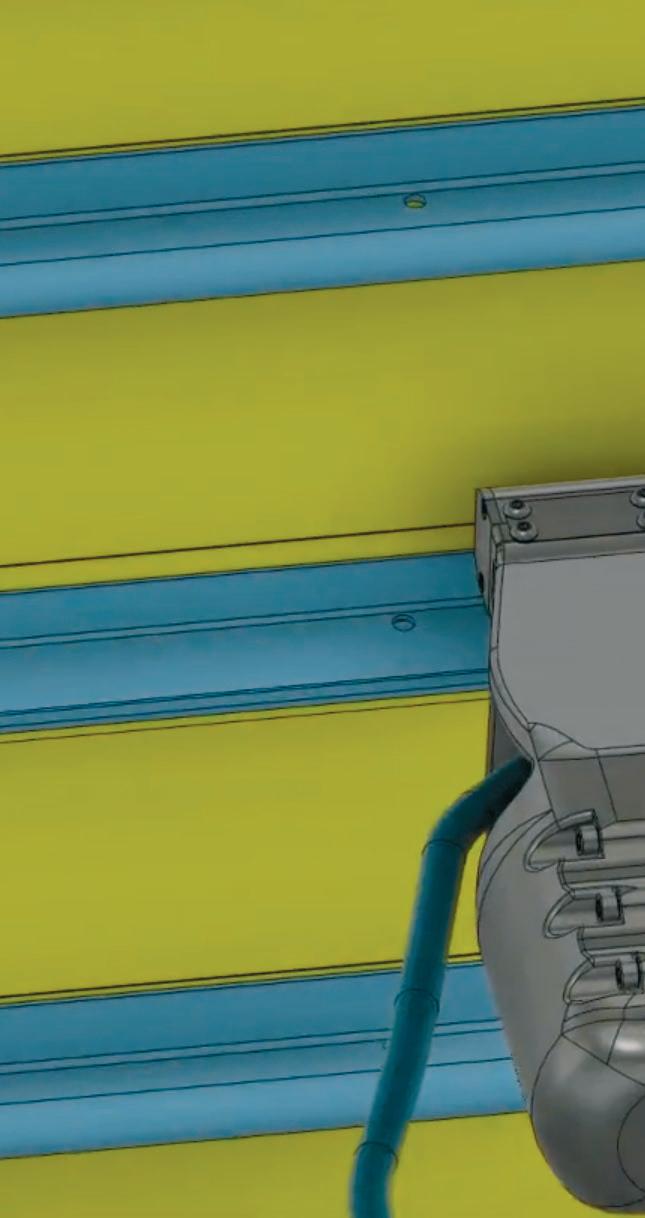
Fusion 360 enables collaboration for complex designs
The Sifer srl team is now increasingly designing and manufacturing application-specific machines for drilling and fastening. The KUKA robot tooling application was especially important to design with the aerospace industry’s challenges in mind. Thanks to the Autodesk Fusion 360 Insider Program, Sifer srl could leverage an early technology preview of the Robotics Add-in for Fusion 360 to support its development process.
“For the KUKA robot project, it was required to guarantee the repeatability of the process because the industry is trying to industrialize as many processes as possible,” says Francesco Luzzi, Chief Operating Officer, Sifer srl. “With the robot application we developed in Fusion 360 and the early access to the Fusion 360 Robotics Add-in, we can guarantee to the customer that the work and timing are qualified to increase production from the very beginning.
Collaboration was also key to the design of the robot. Sifer srl worked with Vasile Elettronica srls to design electronics in Fusion 360. “We could both easily see the same things at the same time, and it made the process much easier,” Luzzi says.
Sponsored content
See how Sifer srl leveraged various advanced tools in Fusion 360 to design custom tooling that enables scalability and increases productivity
Unlocking more with Fusion 360 extensions
Even though Sifer srl is a small business, many Fusion 360 features have helped them achieve the same complex parts and applications other larger companies might produce. They can also broaden their business reach with the use of the cloud.
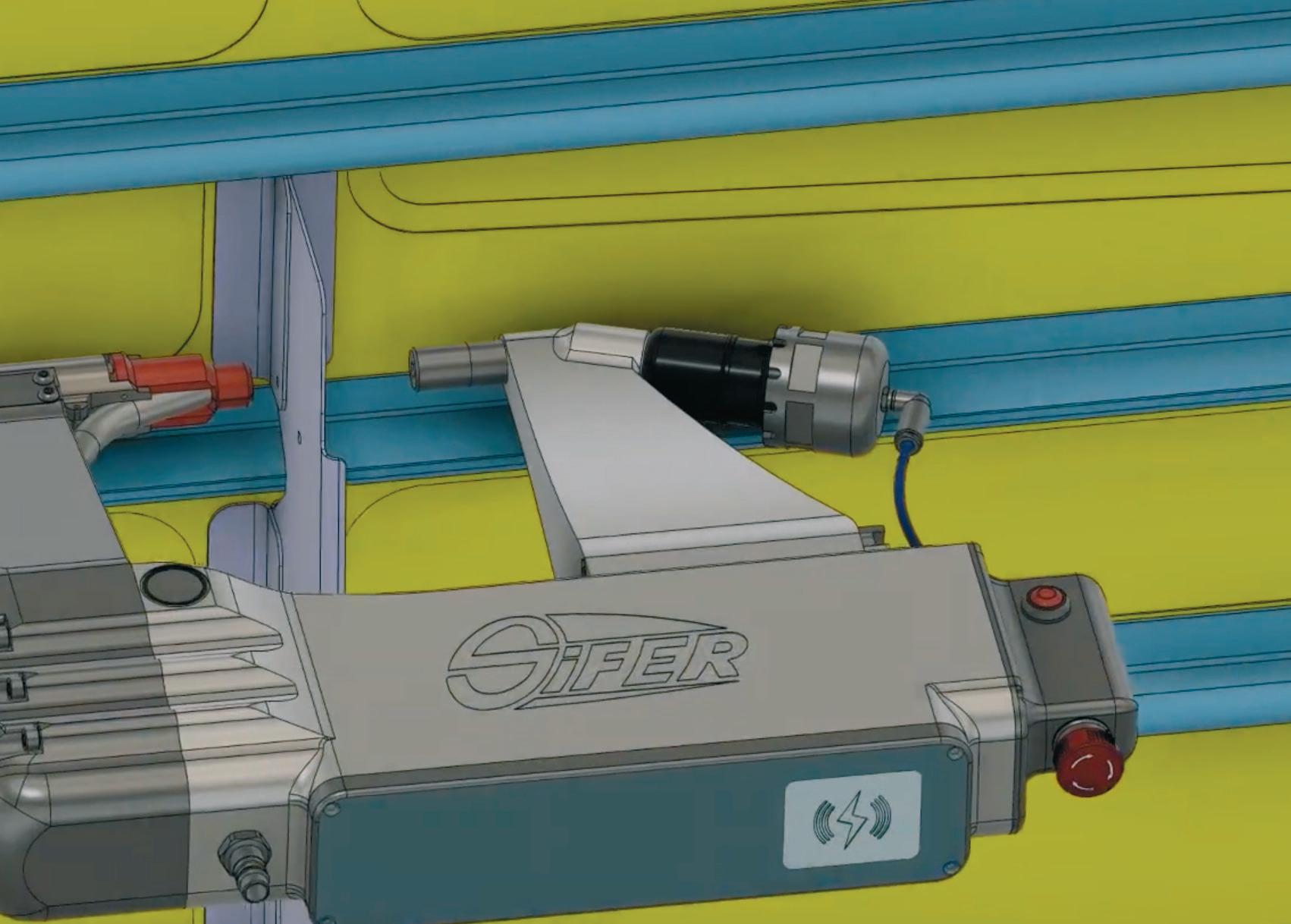
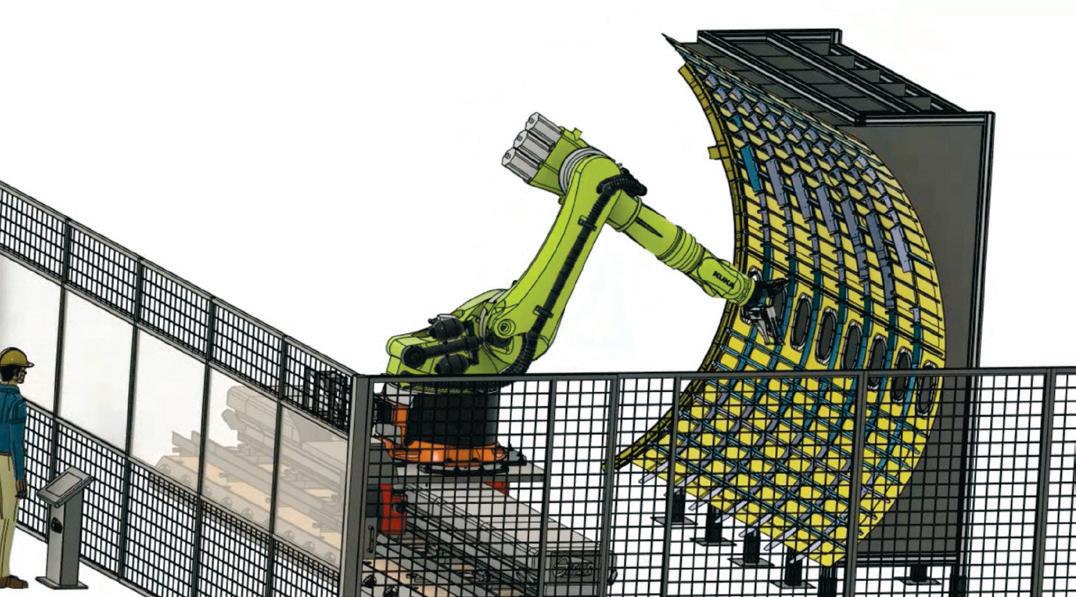
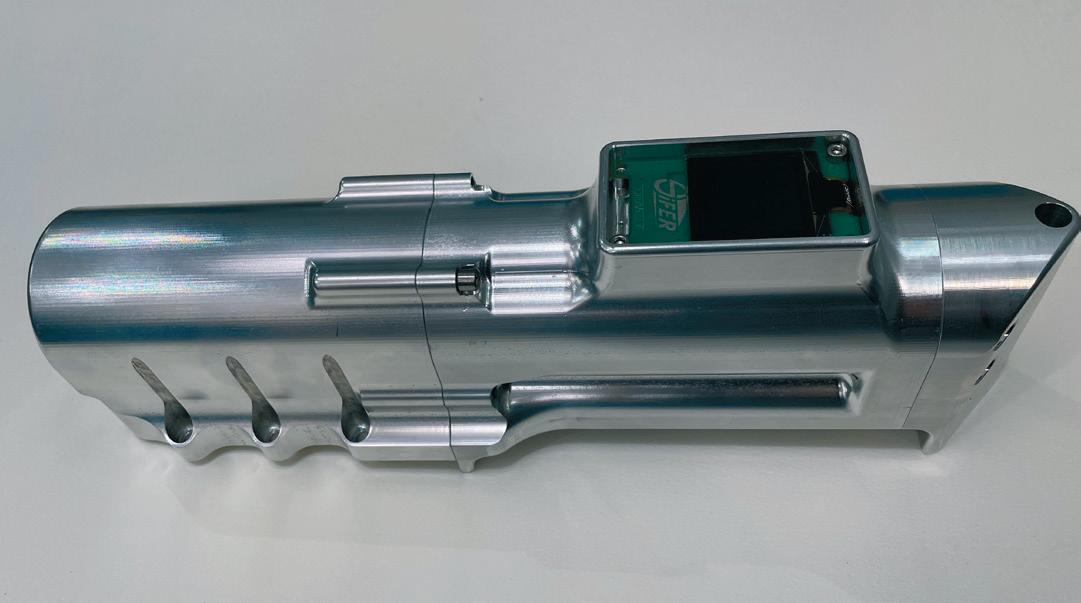
“We have to integrate a lot of different technology, powerful motor and electronic devices,” Luzzi says. “We need the most powerful software like Fusion 360 to create very accurate parts and integrate all the robotics technology,
motor, and electronic devices. We use all the functionality of the Fusion 360 Machining Extension to realize all our parts as well as the Nesting Extension to save time and materials during production.
“I also love how we can share a project with other people anywhere in the world,” he continues. “We can all work together wherever we are.”
Learn more about the technology preview for the Fusion 360 robotics add-in and how to gain early access by scanning the QR code.
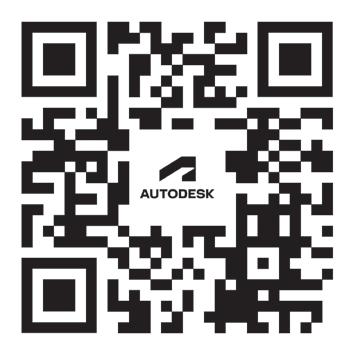
Sponsored content
DEVELOP3D LIVE 2023 PREVIEW
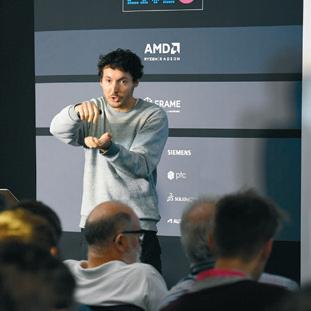

» As we gear up for DEVELOP3D LIVE at Warwick Arts Centre on 20 September, Stephen Holmes takes a look at some of the highlights planned for the bumper one-day event, packed with design and engineering technology and know-how



20 September 2023
Work smarter, not harder. It may be a wellworn phrase, but it’s at the heart of good product development. Uncovering new technologies or processes can shave time or cost off a project, or multiply the effectiveness of your team. These are necessities for any organisation aiming to stay ahead of the competition.
Thankfully, DEVELOP3D LIVE is here to make finding and exploring these gems as painless and as enjoyable as possible. Each year, we strive to bring you stories on stage that will inspire new outlooks on what you do, what you use, and the next place to look for innovations that will transform your workflow.
We spend months looking for the right presenters to captivate our audience, from companies not just creating new products, but also pushing back the boundaries of what's possible. And we love the fact that, over the years, thousands of attendees have taken some of these new products and technologies back to their own studios and workshops, in order to develop their own ideas.
We’re lucky to have some of the biggest software and hardware companies on stage, too, giving you insight
into their releases and roadmaps. At DEVELOP3D LIVE, you'll find multiple industry giants all under the same roof. It’s like no other event. It’s a place where attendees can begin to connect products and processes to fit their workflows – not just hear about what products a single brand would like to push at them.
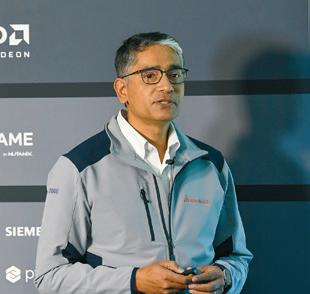
The new venue at Warwick Arts Centre has had a £25 million glow-up since we last held an event there, promising to make it easier to see even more during our single-day format. This comprises three conference streams and two exhibition zones, as well as workshops.

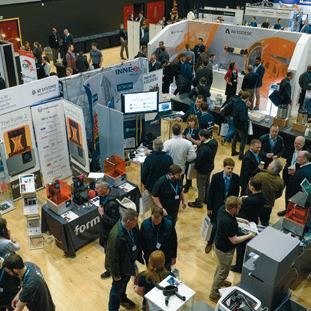
Most of all, we’re looking forward to welcoming you. It’s always a pleasure to meet readers in person, especially when everyone is rushing around trying to fit as much into their schedules as possible. So be sure to say hi and ask for introductions or recommendations – it’ll be great to play our part in getting you all working smarter, not harder.
Stephen Holmes Editor DEVELOP3D
34 AUGUST / SEPTEMBER 2023 DEVELOP3DLIVE.COM
www.develop3dlive.com DEVELOP3D LIVE 20 SEPTEMBER - WARWICK ARTS CENTRE, UK
2023 develop3dlive.com Accelerating product development to manufacture Save
date D3DLIVE returnstowhereitallstarted * *following£25mrenovations 02 23 Save the date.indd 1 09/02/2023 10:37 20 September 2023 www.develop3dlive.com 2023 Register FREE develop3dlive.com
Centre
DEVELOP3D LIVE
Warwick Arts Centre, UK
the
The main stage auditorium at Warwick Arts
for
Product Design Future Fabrication
FULL METAL JACKET JONAS NYVANG STILRIDE

The multi-award winning Stilride 1 is an electric-powered scooter, formed from recycled Swedish steel and formed using Stilride’s own ‘robotic origami’ technology. When it rolls off the production line, the Stilride 1 has a carbon footprint around three times smaller than competing products, according to the company.
Jonas Nyvang travels to DEVELOP3D LIVE to tell us about this design came to unfold, and what it has in store for applying Stilride’s technology capability to other industries.

DEVELOP3DLIVE.COM AUGUST / SEPTEMBER 2023 35
Caption
The recycled steel monocoque chassis of the Stilride 1 is produced using ‘robotic metal origami’
Jonas Nyvang of Stilride
DEVELOP3DLIVE.COM 2023
Prototyping
Generative Design
NEW TECH SHOWCASE MAYKU + LATTICEROBOT
This year, we bring to the main stage snapshots of exciting new tech that could impact your workflow.
Mayku’s Benjamin Redford will unveil the company’s latest materials for its desktop pressure former, as it brings its high-detail reproductive abilities to some exciting new engineering-grade materials that might change how you prototype or even batch produce parts.
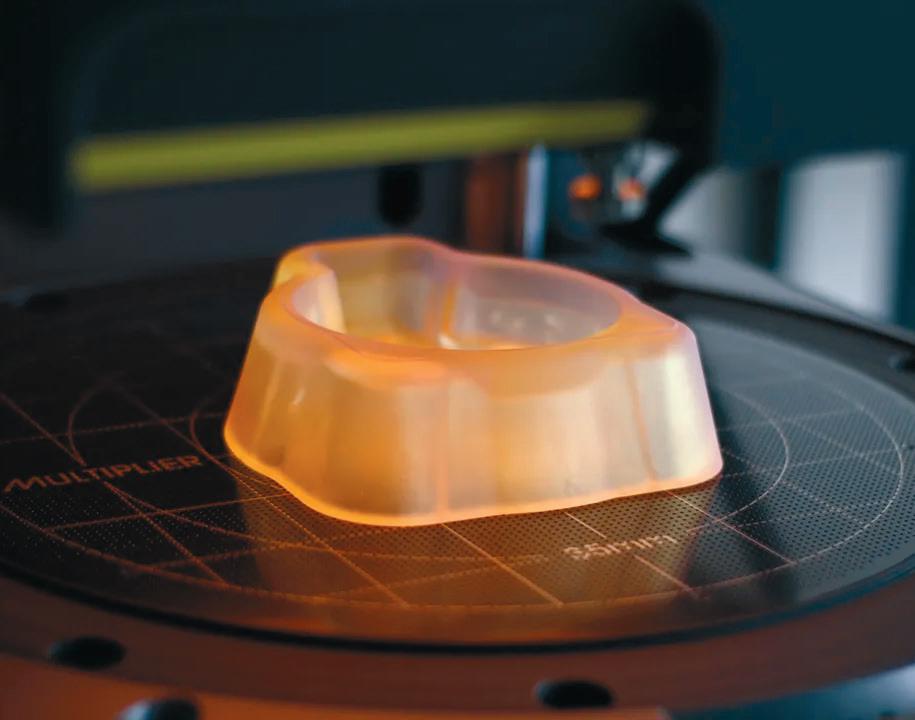
LatticeRobot will launch its new software to enhance the world’s knowledge of lattices, textures and related mesoscale geometry, bundling decades of hard-to-obtain knowledge into an easy-to-use product that finds the right form for the job at hand.
BEST FOOT FORWARD SOPHIA LINDNER ACT’BLE
Ballet is both a sport and an art form, requiring punishing training schedules, endurance and strength. Having the right footwear makes a big difference to dancers and Act’ble intends to play a starring role in making that happen, as it blends a mix of new technologies, footwear design and ballet experience to shine a spotlight on its new products.

WHAT’S NEXT FOR DESIGN SOFTWARE?
The software packages that we use each day are critical to our workflows, so keeping a deep-dive into what the latest developments are – and where the technologies are looking to improve and evolve next – is a firsthand experience not to be missed.

Following his first visit to DEVELOP3D LIVE last year, Solidworks CEO Manish Kumar (pictured above) returns to the stage, alongside other leading names from the biggest industry brands.

CONFERENCE HIGHLIGHTS 20 SEPTEMBER - WARWICK ARTS CENTRE, UK
IMAGE COURTESY OF MAYKU
3D Printing Footwear Design
SPEED OF LIGHTNING ALECK JONES CALLUM X NYOBOLT
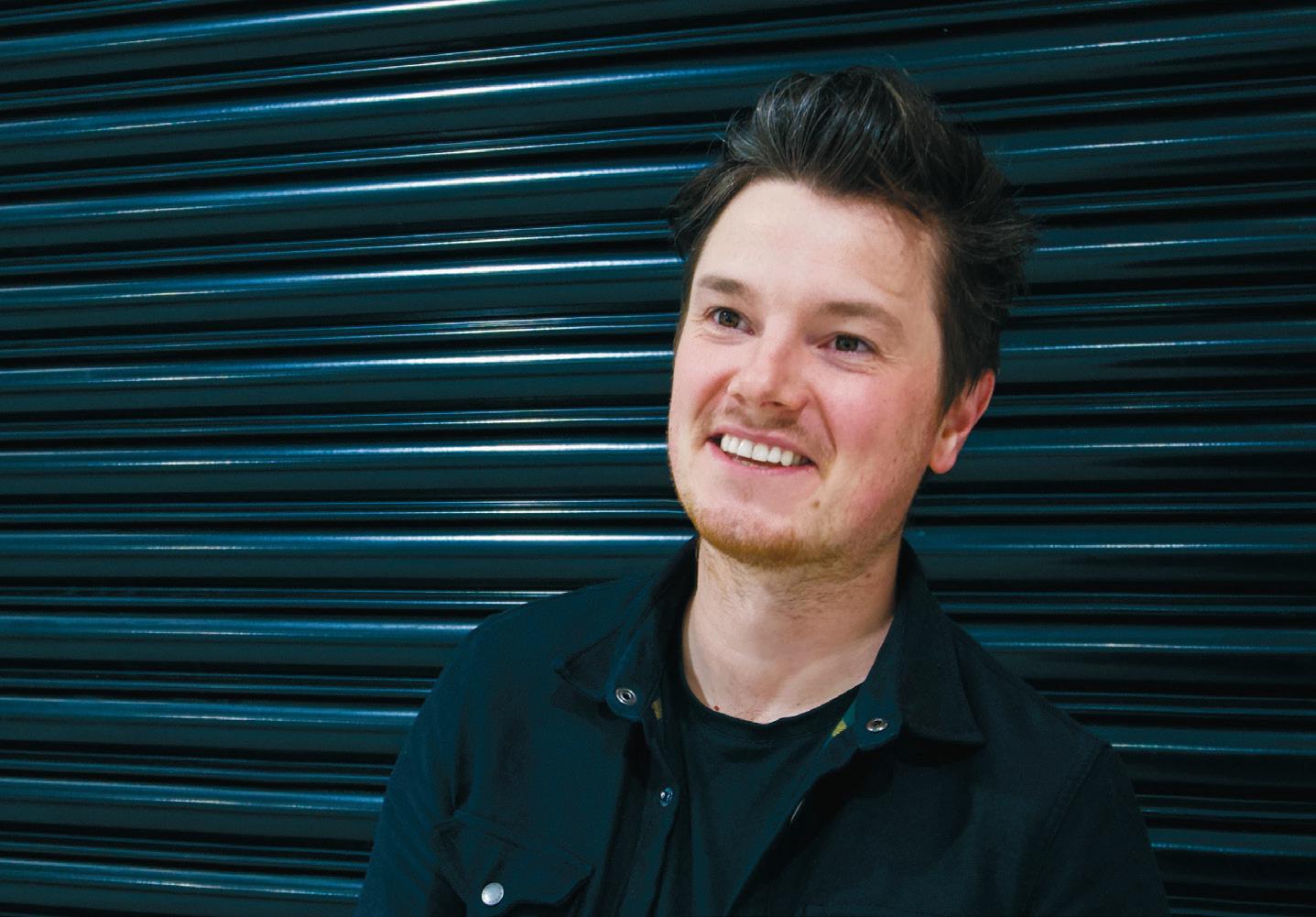
The Nyobolt concept has been designed to unlock the challenges faced by electric vehicle designers, partnering lightweight, fast-charge battery technology with sportscar speed and handling, all done without compromise. Billed as a benchmark for EV technology, the car is a collaboration between the Callum team and Julian Thomson, designer of the Lotus Elise, with greater presence and exaggerated proportions to suit the tastes of today's market audiences.

WHY COMPUTATIONAL DESIGN IS GENERATING MORE THAN JUST INTEREST?
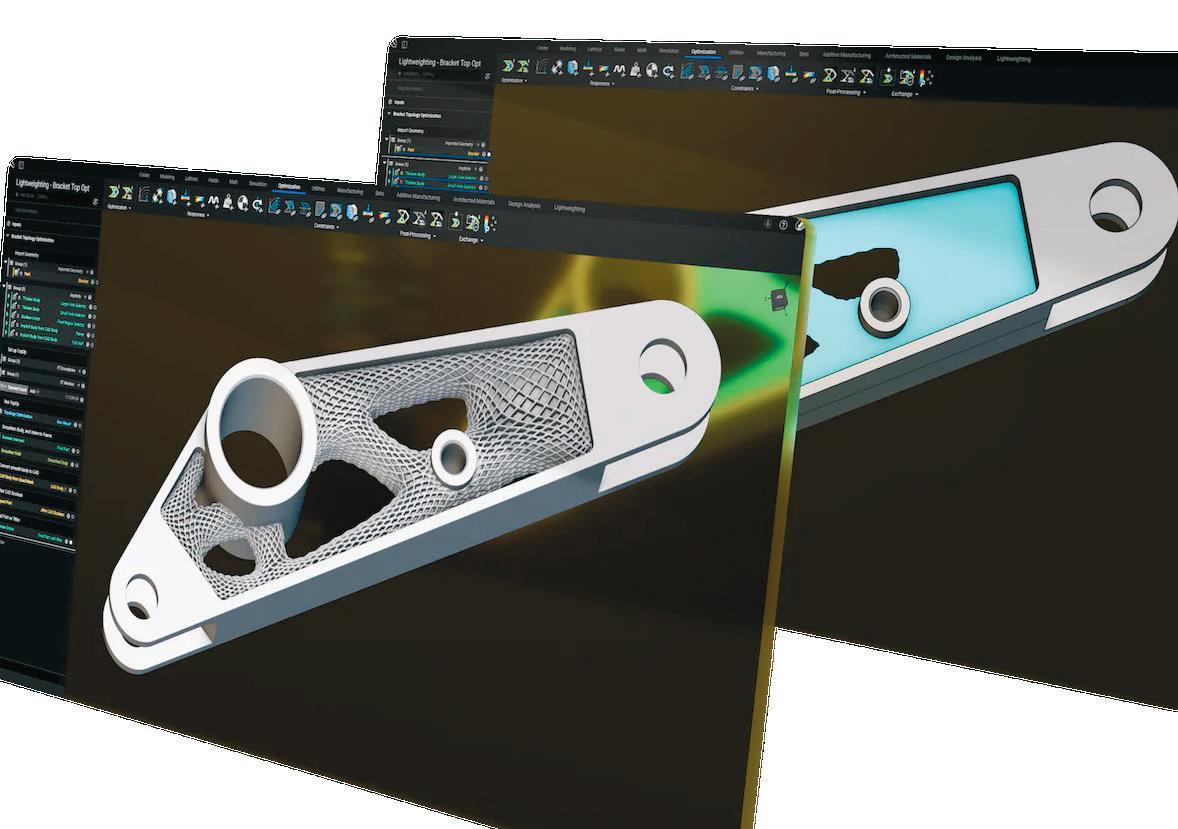
PANEL DISCUSSION
Love lattices? You should! The evolution of generative design software and maturing additive manufacturing technology means that products can be lighter, stronger and less wasteful with gyroid infills and lattices. We’ve assembled a panel of experts to get their views on computational design, how it will infiltrate our workflows and what they see in the future for design’s relationship with automation.
DEVELOP3DLIVE.COM AUGUST / SEPTEMBER 2023 37
DEVELOP3DLIVE.COM 2023 IMAGE COURTESY OF NTOP
Manufacturing
Design
The electric concept car from Nyobolt, a modern interpretation of the Lotus Elise
Additive
Computational
Visualisation Automotive Design
DO MORE WITH DATA PAT PARKER NUMATIC
Learn why Numatic International decided to focus on reusing its CAD data in order to become more efficient in the creation of the user manuals and support documentation that its customers need.
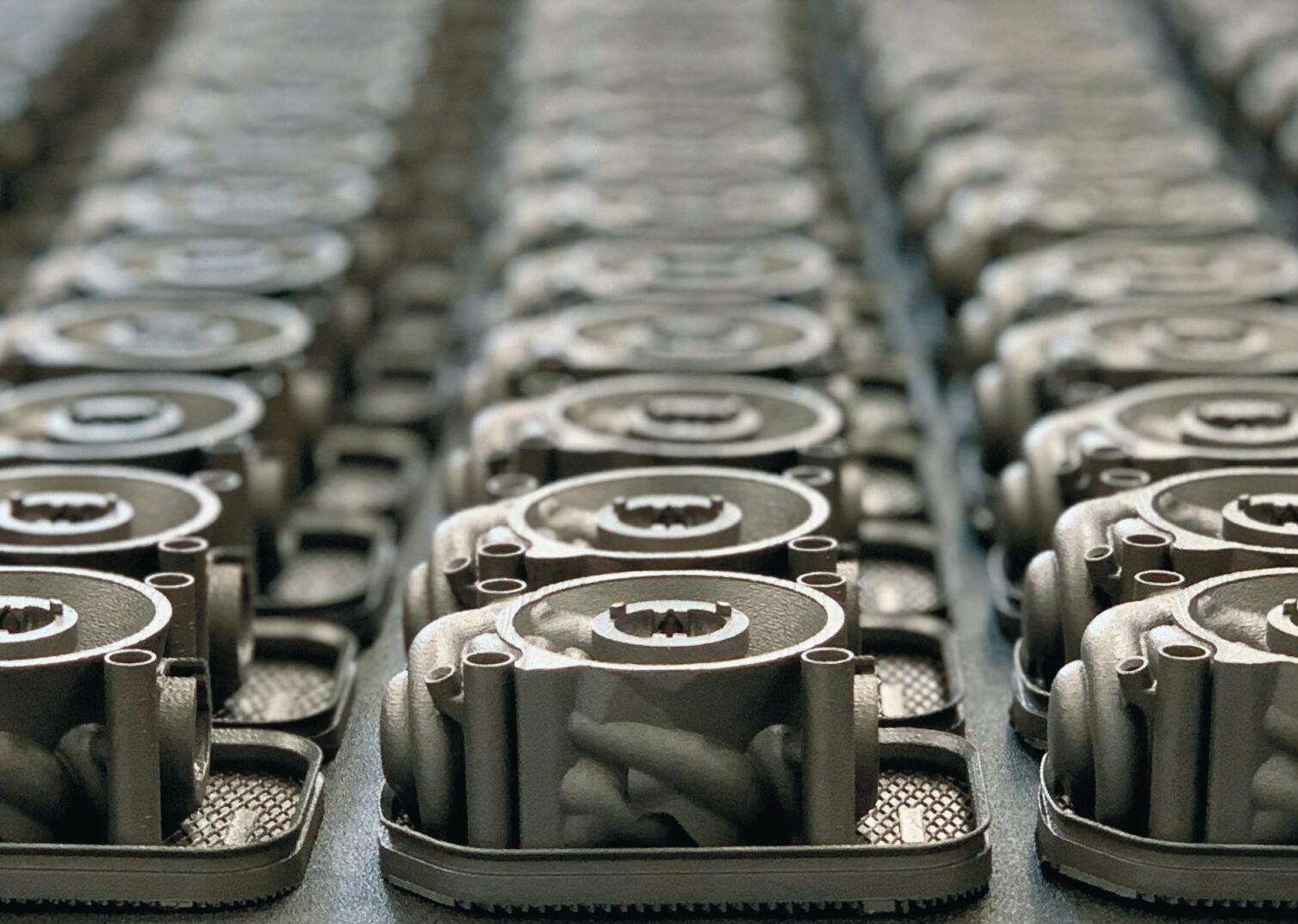
Using the latest 3D technology, Numatic, the maker of the iconic Henry Hoover vacuum cleaner among hundreds of other professional cleaning solutions, is now on a journey to modernise its entire offering, becoming greener and reducing costs along the way.
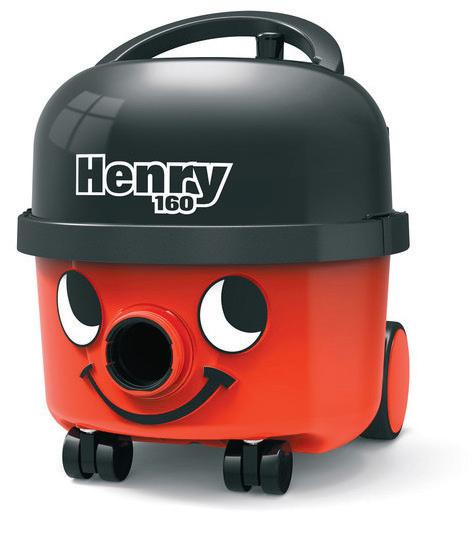
AM ENABLING REVOLUTIONARY NEW PRODUCTS MARCUS PONT DOMIN
Domin’s electro-hydraulic valves are the product of years of R&D into 3D printing, and are designed for the most demanding servo applications. Marcus Pont will discuss how Domin’s clean-sheet design took shape, using advanced additive manufacturing to create a product that’s smaller, lighter, more sustainable and which is changing the face of industries from automotive to aerospace.
Reusing
VISUALISING THE DIGITAL FASTER THAN EVER
Getting products to market faster is easier with convincing visuals, and at this year’s event, we have a whole range of software and hardware for bringing realism to screens. From the latest AI-enabled rendering software to the GPUs necessary to accelerate the process, we’ve also got amazing data capture technology like Vizoo that takes real-life materials and textures, and puts them into your material library.

38 AUGUST / SEPTEMBER 2023 DEVELOP3DLIVE.COM
KEYSHOT IMAGE COURTESY OF VIZOO
Metals 3D printing
Visualisation AI
Clean-sheet design
CONFERENCE HIGHLIGHTS 20 SEPTEMBER - WARWICK ARTS CENTRE, UK
CAD Data Sustainability


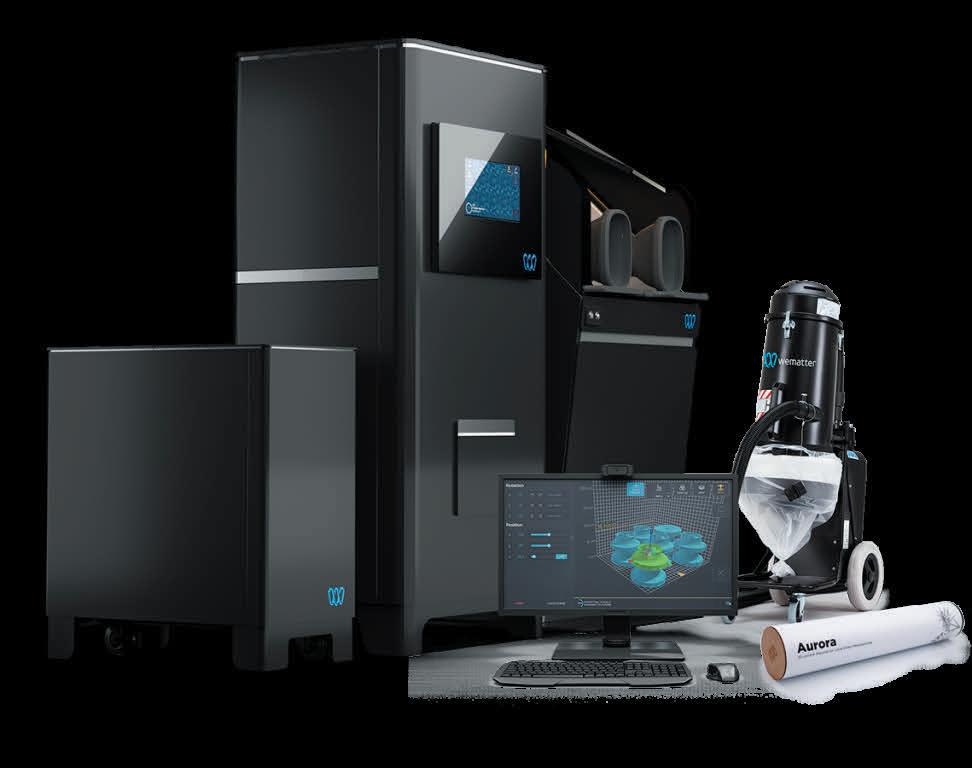

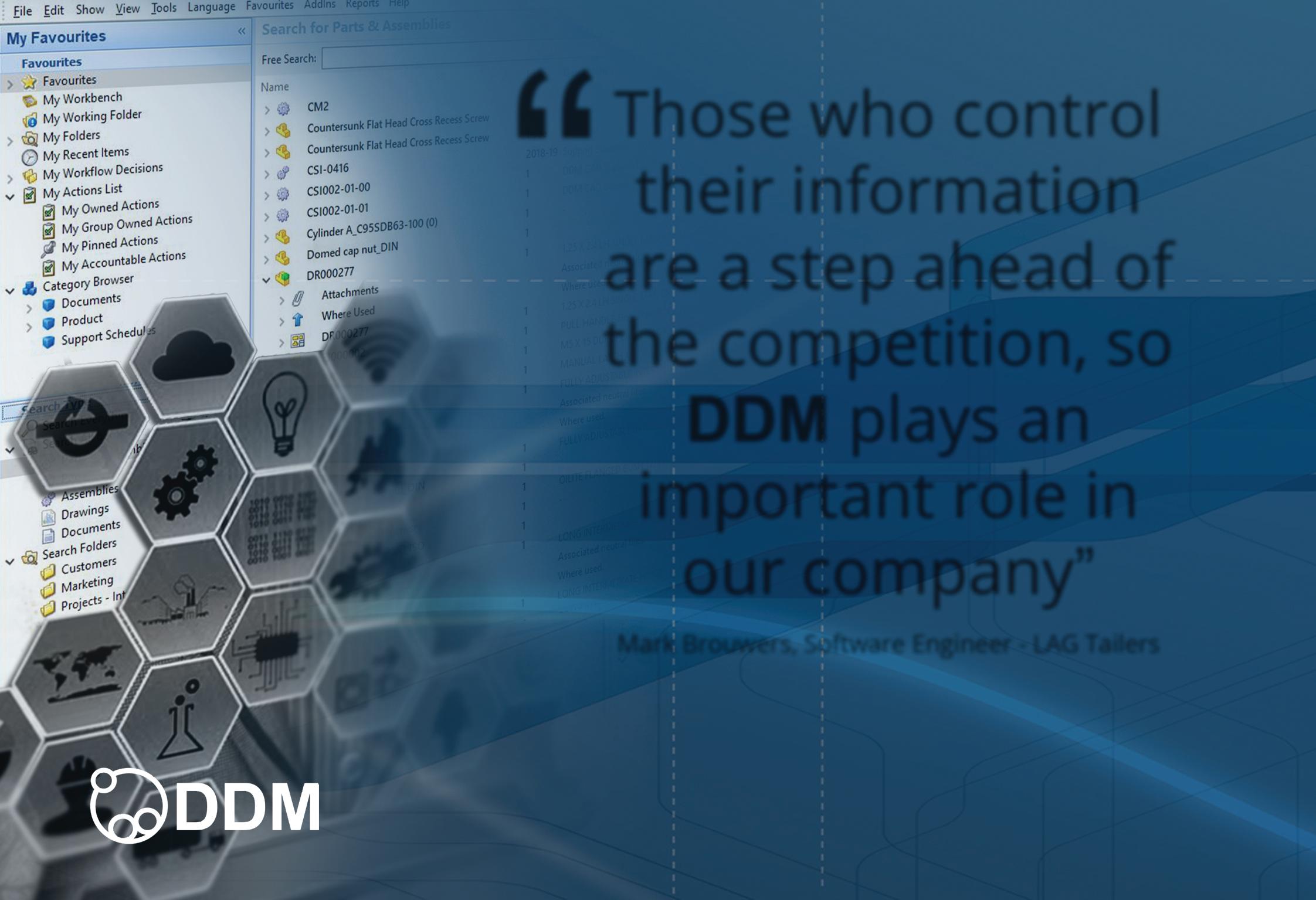

CDG: 3D TECHTM www.cdg.uk.com Tel: 01420 556755 Wematter Gravity SLS 3D-printing system Ground-breaking and easy to use SLS 3D-printing platform for Additive Manufacturing Clean process No gas required PA6, PA11, PA12, PP, TPU materials Black, Grey, Blue & White powder cartridges Production materials inc. GF, ESD, FR & Food Grade New UK demonstration facility “
3DCONNEXION STAND A12
3Dconnexion is a provider of awardwinning devices for 3D design and visualisation professionals. 3Dconnexion mice are designed to provide a more intuitive and natural way to interact with 3D content and support today's most popular and powerful mechanical engineering and other 3D applications.
From its SpaceMouse 3D mice to the CadMouse, 3Dconnexion products are said to provide a superior way for CAD professionals to interact with and experience the digital world.
With a SpaceMouse, users have the ability to simultaneously pan, zoom and rotate models while the regular mouse stays in its regular place.
www.3dconnexion.co.uk
3DGBIRE STAND B13
3DGBIRE, a professional 3D printing systems provider, helps customers adopt additive manufacturing with its 360 degree service, offering training, workflow development, consultancy, support and installation.

By offering high quality products, technical support, sales, service, consultations, live demonstrations and site scans, the company aims to ensure that all industries have the resources they need to unleash their creative potential and also successfully integrate additive manufacturing within their business cycle.
The company brings together the world of 3D FFF & DLP printers, scanners, resin, spare parts, jigs & fixtures, filaments and service plants.
www.3dgbire.com
3DPRINTUK STAND A26
Focused on production runs, 3DPRINTUK bridges the gap between additive manufacture and injection moulding for plastic items. According to the company, the viability of using SLS as an alternative to injection moulding kicks in with smaller items; there are no set-up fees only a unit cost, so for small parts with volumes of up to 10,000 units, it’s a 'no brainer'. The more complex the part the higher the viability as tooling costs increase.
3DPRINTUK focuses on low to mid volume batch production using in house SLS printers. CAD files can be uploaded for an immediate quote or the Pricing Estimator App used to get a cost for printing your part.
www.3dprint-uk.co.uk
ADDITIVE-X STAND A11
Additive-X has 30+ years of experience in building relationships and knowledge bases with the best manufacturers. The company doesn't just sell 3D printers, it provides ‘best-in-class' additive manufacturing solutions with full certified technical support, training, and brand specialists.
Additive-X offers impartial advice on the wide range of technology it offers and its technical support, sales and customer service teams have developed a wealth of experience in many industries.
The company is an authorised reseller and trusted partner of Formlabs, Lynxter, Markforged, 3DGence, Ultimaker, BCN3D, Builder, AMT & Mayku.
www.additive-x.com
ADVENT 3D STAND A22
Advent 3D supplies and supports the Formlabs’ range of 3D printers. According to the company, its background in engineering and design provides a deep understanding of the requirements of these industries and is uniquely positioned to help customers use Formlabs’ 3D printing technologies to reduce costs, improve efficiency and reduce times to market.
The Form 3+ SLA printer is an upgrade to the Form 3 with software and hardware improvements that provide superior quality parts up to 40% faster. Form 3L SLA printers offer the same parts in a build volume that is five times bigger. The Formlabs Fuse +30w SLS printer is for robust functional prototypes or end use nylon parts.
www.advent3d.co.uk
40 AUGUST / SEPTEMBER 2023 DEVELOP3DLIVE.COM EXHIBITORS 20 SEPTEMBER - WARWICK ARTS CENTRE, UK
BRONZE SPONSOR
AMD STAND A27-A30
For more than 50 years AMD has driven innovation in high-performance computing, graphics and visualisation technologies. Billions of people, leading Fortune 500 businesses and cutting-edge scientific research institutions around the world rely on AMD technology daily to improve how they live, work and play. AMD employees are focused on building leadership highperformance and adaptive products that push the boundaries of what is possible.
www.amd.com
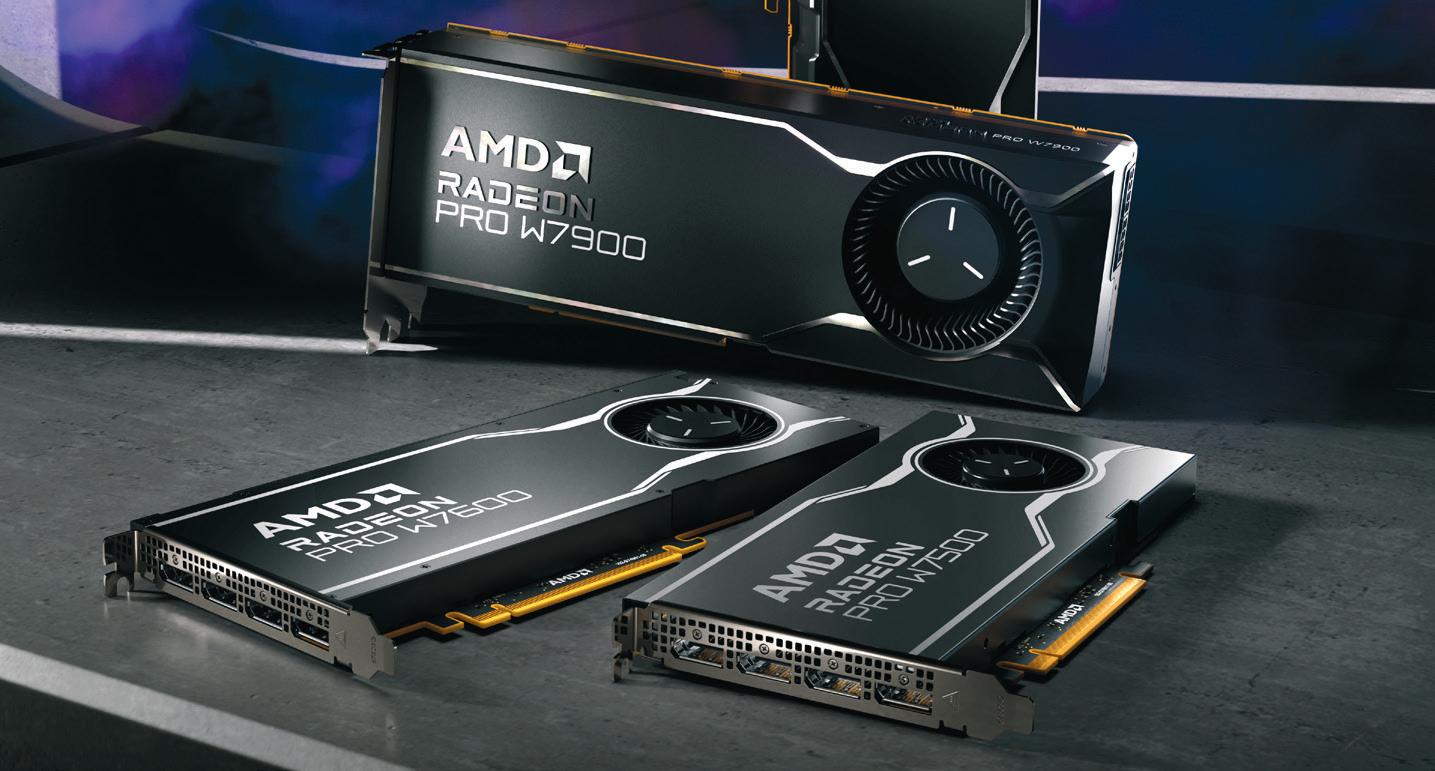
ARAS STAND A19/A20
Aras provides a powerful low-code platform with applications to design, build, and operate complex products. According to the company, its technology enables the rapid delivery of flexible, upgradeable solutions that build business resilience.
Aras’s platform and product lifecycle management applications connect users in all disciplines and functions to critical product data and processes across the lifecycle and throughout the extended supply chain.
The Aras Innovator Platform is designed for faster and more flexible deployments. As business requirements change, firms can quickly evolve outdated applications, develop new ones, and connect to other systems. www.aras.com
ARMARI STAND A6
Armari is a specialist manufacturer and integrator of high-performance computer systems, custom solutions and branded appliances. The company's workstations, servers and appliances have been winning awards in the UK press for over 29 years.
Armari's range of in-house designed Magnetar Professional workstations and servers cater for 3D visualisation, AI, CAD/CAM, animation, engineering, media & entertainment and scientific research. Included in this range is its Threadripper Pro workstations, which have won multiple awards.
Armari also offers a range of fully customisable PCs aimed at business, highend enthusiast and home users.
www.armari.com
CADASIO LTD STAND A24
Cadasio repurposes existing CAD data to create ‘eye catching, engaging 3D presentations' ideal for assembly instructions, service procedures, marketing assets and more.
With add-ins for the most popular CAD systems, including Solidworks, Fusion 360 and Onshape, and an intuitive, userfriendly interface, firms can quickly create presentations explaining how to assemble, maintain, and use their products.


According to the company, the accessible browser-based platform enables anyone, regardless of expertise level, to generate stunning 3D product communications that can be shared with anyone via a unique URL, QR code, or embedded in your website.
www.cadasio.com
PRINCIPAL SPONSOR
GOLD SPONSOR
DEVELOP3DLIVE.COM AUGUST / SEPTEMBER 2023 41 DEVELOP3DLIVE.COM 2023
BRONZE SPONSOR
CENTRAL SCANNING STAND A21
Central Scanning is an industry leading 3D printing, 3D scanning, reverse engineering and inspection specialist based in Bromsgrove, Worcestershire.
It is the only Artec 3D Ambassador & Gold Certified reseller in the UK, providing 3D scanning equipment and related software. The company is also part of the #HandsOnMetrology network and can provide pre-sales, training, and support.
Central Scanning also offers a comprehensive 3D printing service utilising in-house 3D printers from Stratasys, Markforged, Ultimaker and Prusa. The company can print in a wide variety of materials and has the full colour muti-material Stratasys J750 printer. www.central-scanning.co.uk
CONCURRENT DESIGN GROUP (CDG) STAND A35
CDG is a leading supplier of 3D printers, 3D scanners and 3D software.
From 3D Systems it offers the Figure-4 Standalone and Modular DLP printers and high resolution ProJet 2500 MJP and CJP 3D printers. It also supplies 3D printers from Intamsys, Omni3D, Sinterit, as well as the Fusion Edge and Zmorph i500.
CDG supplies the Einscan, Freescan UE Pro and Evatronix 3D scanners.
Software solutions include Geomagic Essentials, Wrap and Design X for reverse engineering and scan-to-CAD and Control X for inspection; Geomagic Freeform software with haptic arms for voxel-based digital clay modelling; and Cimatron for CAD/CAM, tool design and manufacture. www.cdg.uk.com/3d
CONSTRUCT 3D STAND A8
Construct 3D has developed what it describes as the UK’s fastest 3D printer, delivering ‘lightning-fast' print speeds without compromising on quality. With Construct 3D's advanced system, users can print larger and more complex models in less time.
According to the company, its printer is perfect for professionals, hobbyists, and anyone who wants to create high-quality 3D prints quickly and efficiently. www.construct-3d.com
DRIVEWORKS STAND A31
DriveWorks offers Design Automation and CPQ configurator software. It is used by manufacturing multi-nationals and SMEs across many different industries to:
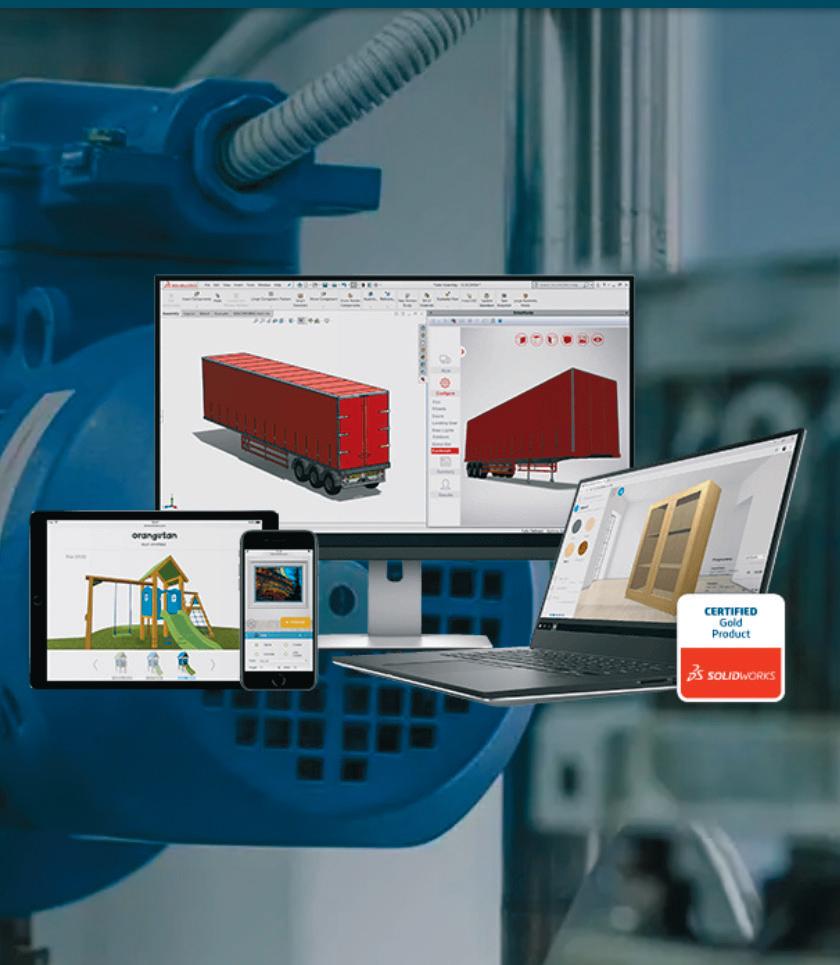
• Configure custom products on any device
• Respond quickly to sales enquiries
• Generate more custom orders
• Win more business
• Enhance product quality
• Reduce repetitive tasks
The software can be used for 3D printing or traditional manufacturing methods. It can automatically generate manufacturing drawings, 3D models, and sales documents (including quotes).
www.driveworks.co.uk
CONCURRENT SYSTEMS INC STAND A38
Founded in the late 1980s, CSI is a team of technical and business professionals dedicated to providing PDM & PLM solutions to small businesses right up to large enterprises. The company's solution, DDM, is designed to provide an alternative to organisations who want the versatility of a larger PLM system but not the high overheads of implementing and running such complex modular based products.
DDM is designed on four core principles: simplicity, speed, stability and scalability. According to the company, this means its customers have a solution that is straightforward to implement, intuitive to use and easily configured to suit individual business needs.
www.designdatamanager.com
DEPIX STAND B16
Depix Technologies has introduced the DepixDesignLab, with a view to revolutionising the early conceptual design process.
Tailored for product and automotive designers, the platform enables users to ‘seamlessly customise' pre-trained AI image models with just 1-30 of their own images, allowing for ‘unparalleled' design influences. Capabilities can be extended further by training with up to a corporatescale image dataset.
This approach is said to offer the sophisticated curation of AI-generated results, placing advanced generative AI directly in the hands of designers. www.depix.ai
SILVER SPONSOR
42 AUGUST / SEPTEMBER 2023 DEVELOP3DLIVE.COM
EXHIBITORS 20 SEPTEMBER - WARWICK ARTS CENTRE, UK
EPLAN STAND A14
EPLAN design software for electrical engineering helps machine, plant and control panel engineers work more efficiently thanks to 3D modelling, the elimination of repetitive manual tasks and streamlined engineering processes.

According to the company, the intuitive 3D environment makes it easy to design cabling and wire harnesses; you define the routing paths and the automated routing of wires and cables.
EPLAN Harness proD for cabling in machine building allows users to design and document electrical cabling on 3D mechanical models. Users can also enhance digital twins with the relevant electrical engineering information early in the engineering process. www.eplan.co.uk
HP
STAND A27-A30
Z by HP creates high-performance laptops, desktops, displays and solutions designed to equip technical and creative pros in their journey to keep evolving.

www.hp.com/productdesign
BRONZE SPONSOR F3DM STAND B12
F3DM is a 3D printing materials manufacturer and supplier of ‘top-tier' 3D printers, situated in London. The company partners with several brands, enabling it to offer a wide range of high-tolerance filaments that meet the stringent demands of the industry, including polymers, composites, and other bespoke materials. F3DM provides 3D printers from AnkerMake, Artillery, and Elegoo.
The company provides personalised consultations, technical support, and guidance to assist clients in selecting the ‘perfect combination' of materials and printers. It can help customers at every step of their journey, from initial enquiries to post-purchase assistance.
www.f3dm.com
PRINCIPAL SPONSOR
ITI, WIPRO ENGINEERING STAND A18
ITI, a wholly owned subsidiary of Wipro Limited, specialises in conversion, integration, validation, and migration solutions for product data and related systems. The company's solutions include CADfix, Proficiency, and CADIQ.
CADfix is for 3D CAD model translation, repair, healing, defeaturing, and simplification.
Proficiency is a feature-based CAD conversion solution that enables the accurate transfer of complete design intelligence between major CAD systems.
CADIQ identifies model-based design data quality issues that impact downstream re-use for manufacturing, simulation, data exchange and collaboration.
www.iti-global.com/CADfix
KENESTO STAND B6
Kenesto is a secure cloud-based document management and workflow platform designed for teams and technology providers. Designed with project management applications in mind, the developers explain that Kenesto requires no setup, provides unlimited storage, mobile access and reliability with real-time access to field data. Users collaborate directly on master files with suppliers using virtual local drives.
www.kenesto.com
DEVELOP3DLIVE.COM AUGUST / SEPTEMBER 2023 43 DEVELOP3DLIVE.COM 2023
Register FREE now develop3dlive.com
KEYSHOT | LUXION INC STAND A33
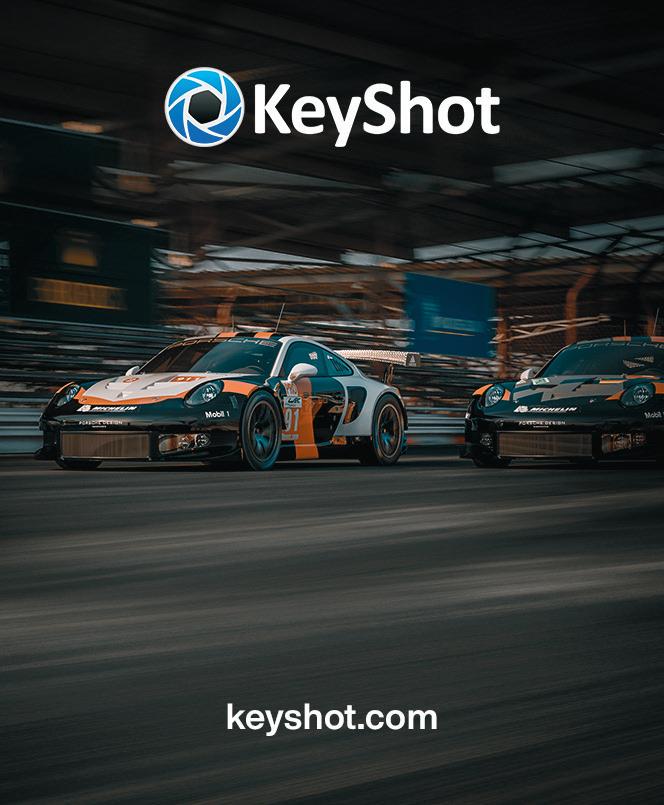
KeyShot is a real-time ray tracing application that uses a physically correct render engine based on research in the areas of scientifically accurate material representation and global illumination. Addressing the needs of designers, engineers, and CG specialists, KeyShot is designed to break down the complexity of creating photographic images and animations from 3D digital data. www.keyshot.com
LENOVO STAND A36/A37

Lenovo, which prides itself on its product innovation, performance and reliability, offers a complete portfolio of mobile and desktop workstations, with its ThinkPad and ThinkStation solutions. These highperformance workstations are designed to not just meet, but exceed expectations; combining maximum performance with platform reliability. Pushing beyond the hardware, Lenovo strives to support the people behind the systems, to foster relationships and improve the industry overall. This includes supporting creative thinkers and enabling them with the latest technology to explore the possibilities. www.lenovo.com/workstations
BRONZE SPONSOR
LATTICEROBOT STAND B2
LatticeRobot is a community of engineers working together to integrate the diverse knowledge of metamaterials into a consistent, normalised, and reusable engineering database that anyone can browse, filter, and drill into, learning about what choices might be best for a given material or manufacturing process.
The interactive experience is designed to be both engaging for those new to lattice engineering and a rich resource for research and engineering professionals.
The LatticeRobot journey ends when the engineer is delivered to the best fit design software, manufacturing partner, or material landing page, matching users with the exact solutions for their challenges.
www.latticerobot.com
GOLD SPONSOR
MALCOLM NICHOLLS LIMITED STAND A5
Since 1971 Malcolm Nicholls Limited has been an expert within rapid prototyping, 3D printing and low volume manufacturing, and now serves the UK across three sites. Home to two of the largest 3D printers with an impressive build platforms of 800x800x600mm, the company works within motorsport, automotive, retail & fashion, defence and many other industries. It offers large format SLA, small intricate SLA, superior finish SLS, FDM, 3D colour printing and traditional model making and vacuum casting for low volume production and can manufacture from one to thousands of parts, bridging the gap from prototype to mass production.
www.mnl.co.uk
MEASUREMENT SOLUTIONS LIMITED (MSL) STAND A7
MSL is a UK partner for end-to-end design, manufacture and inspection solutions and provides products and services to some of the UK’s leading automotive, aerospace, manufacturing and educational organisations.
MSL offers nTop software with generative capabilities to overcome the complexities of advanced additive manufacturing; a range of metrology systems and services consisting of traditional CMM’s, versatile metrology software (with connectivity to all OEM portable arms, CMMs and Laser Trackers); Creaform industrial 3D scanners; Virtek Vision laser projection and quality inspection systems and more.
www.measurement-solutions.co.uk
44 AUGUST / SEPTEMBER 2023 DEVELOP3DLIVE.COM EXHIBITORS 20 SEPTEMBER - WARWICK ARTS CENTRE, UK
NTOP VIRTUAL SPONSOR
nTop was founded to enable engineers and designers to create any geometry — no matter how complex — and meet the requirements of high-performance products.
nTop is used from research through production to create breakthrough processes and products for the aerospace, automotive, medical, and consumer industries.
www.ntop.com
OR3D STAND A17
WELCOME DRINKS SPONSOR
PNY STAND A1
PNY provides engineers, researchers, and visualisation customers with Nvidia workstation, data centre, and Nvidia DGX solutions and meets the needs of its customers by providing professional technical support.
PNY offers a full range of GPUs and SSDs, as well as complete servers for compute, storage and networking, certified for all VDI, HPC and AI environments.
PNY is headquartered in New Jersey (USA), Bordeaux (FR) and Dubai (UAE) and has facilities in North America, EMEA, India and Asia. www.pny.com/en-eu
OR3D specialises in providing 3D solutions. As the UK’s largest Geomagic partner for hardware and software, the company states that it is well placed to offer the right solution.
OR3D offers a range of laser scanning equipment that covers long range scanning to non-destructive testing with CT machines. For high precision manufacturing and engineering, the company highlights the capabilities of sub millimetre accurate scanners and laser trackers from API.
Using Geomagic Design X, OR3D can demonstrate complete scan-to-CAD workflows, including the creation of native parametric CAD models in Solidworks, Inventor, NX, Creo and Catia.

www.or3d.co.uk
OVERCLOCKERS UK STAND A2
Overclockers UK is a leading online retailer of PC Systems & Components, selling a wide range of high performance computer components, hardware and gaming systems. From the latest graphics cards through to custom built overclocked water cooled gaming systems.
The company offers a selection of gaming PCs, including custom computers via their configurator & semiconfigured Gaming PCs. Each system is tested by experts, in line with rigorous inhouse standards and comes with a three year warranty, covering parts and labour, as standard.
www.overclockers.co.uk
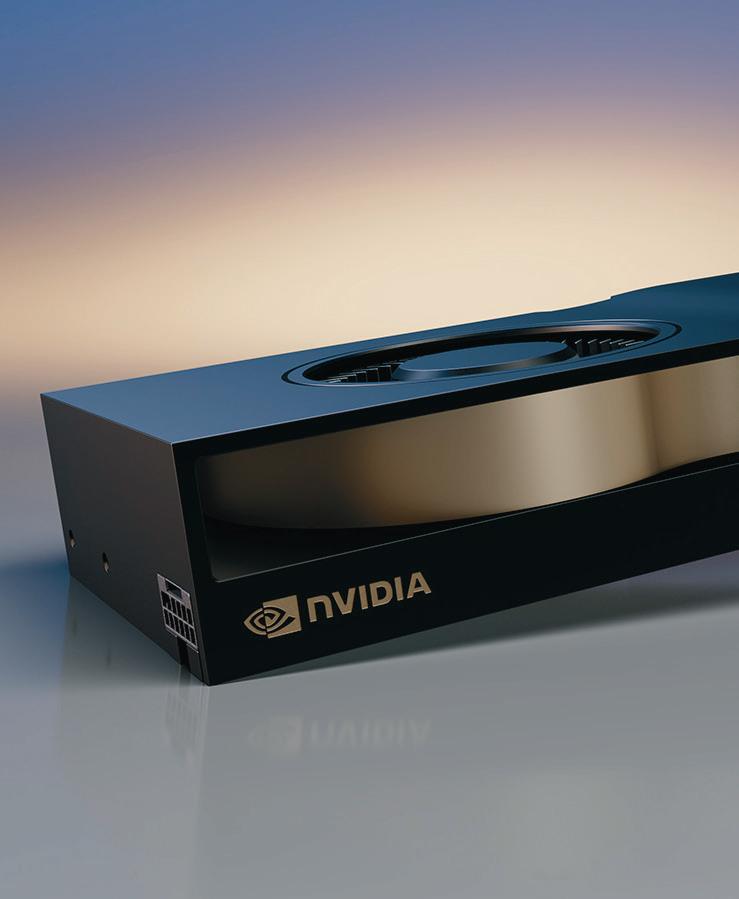
BRONZE SPONSOR
DEVELOP3DLIVE.COM AUGUST / SEPTEMBER 2023 45 DEVELOP3DLIVE.COM 2023
PROTOLABS STAND B18 / NGRID ROOM
Protolabs is a digital manufacturing source for rapid prototypes and ondemand production parts. The company's automated quoting and manufacturing systems allow it to produce commercialgrade plastic, metal and liquid silicone rubber parts within days.


According to Protolabs, the company is all about innovation, constantly challenging and improving its existing offerings, seeking unmet needs and developing products or services to meet those needs. Protolabs helps companies from many industries reduce development time, lower production costs and get to market faster using the most innovative technologies, strategies and materials.
www.protolabs.com/en-gb
R A SMART STAND A4
Mimaki authorised partner, R A Smart is presenting applications created on Mimaki’s full colour 3D printers at DEVELOP3D Live.
Utilising UV-curing inkjet technology, the high-definition colour reproduction made possible with Mimaki’s 3D full colour printers is said to provide new opportunities across a range of industries. Mimaki offers two models: the compact 3DUJ-2207 and industrial specification 3DUJ-553. According to R A Smartboth are adept at producing highly detailed output in up to 10 million colours. Examples on display will include product prototypes, architectural designs and gaming figurines.
www.rasmartmachinery.co.uk
RENDA STAND A3
RENDA is a solution, not just a computer. According to the company, its experience in performance computing enables hardware to be optimised to the unique requirements of individual users and the software they use, resulting in RENDA systems 'conclusively outperforming the competition', whilst users gain the maximum performance.
With reliability and performance
RENDA helps reduce the time it takes to run applications, meaning that users get results faster and can do more with the resources available.
www.overclockers.co.uk
RICOH 3D STAND B7
BRONZE SPONSOR
Ricoh 3D has harnessed over 80 years of manufacturing experience to provide a full range of innovative end-to-end solutions, including industry-leading metal, polymer and composite additive manufacturing (AM) services.
https://rapidfab.ricoh-europe.com
46 AUGUST / SEPTEMBER 2023 DEVELOP3DLIVE.COM EXHIBITORS 20 SEPTEMBER - WARWICK ARTS CENTRE, UK Register FREE now develop3dlive.com
SCAN STAND A39
Scan Pro Graphics is a specialist division within the Scan Computers Ltd. business portfolio that provides workstations, servers and bespoke GPU solutions for graphics intensive workloads.

The company's award winning 3XS workstations are optimised for a wide variety of applications and workflows within media and entertainment, gaming, architecture, engineering, construction and manufacturing.
Powered by the latest Nvidia RTX GPU accelerators, Scan workstations and servers are custom built to meet requirements. Scan also has expertise to deliver and support virtual solutions via its 3XS Cloud platform. www.scan.co.uk
SHAPR3D STAND A9/A10
Shapr3D offers a 3D design tool that is designed to help manufacturing teams remove friction from their workflows. The software is said to combine the power of the Siemens Parasolid engine with the flexibility of multiple devices across Windows, macOS, and iPad OS platforms to allow professionals of all backgrounds to work better, together. This includes engineers looking for part design, project managers trying to communicate more effectively, or technicians designing fixtures faster.
According to the developers, with a short learning curve and clutter-free user interface, any team member can get armed with pro CAD skills, wherever their work takes them. www.shapr3d.com
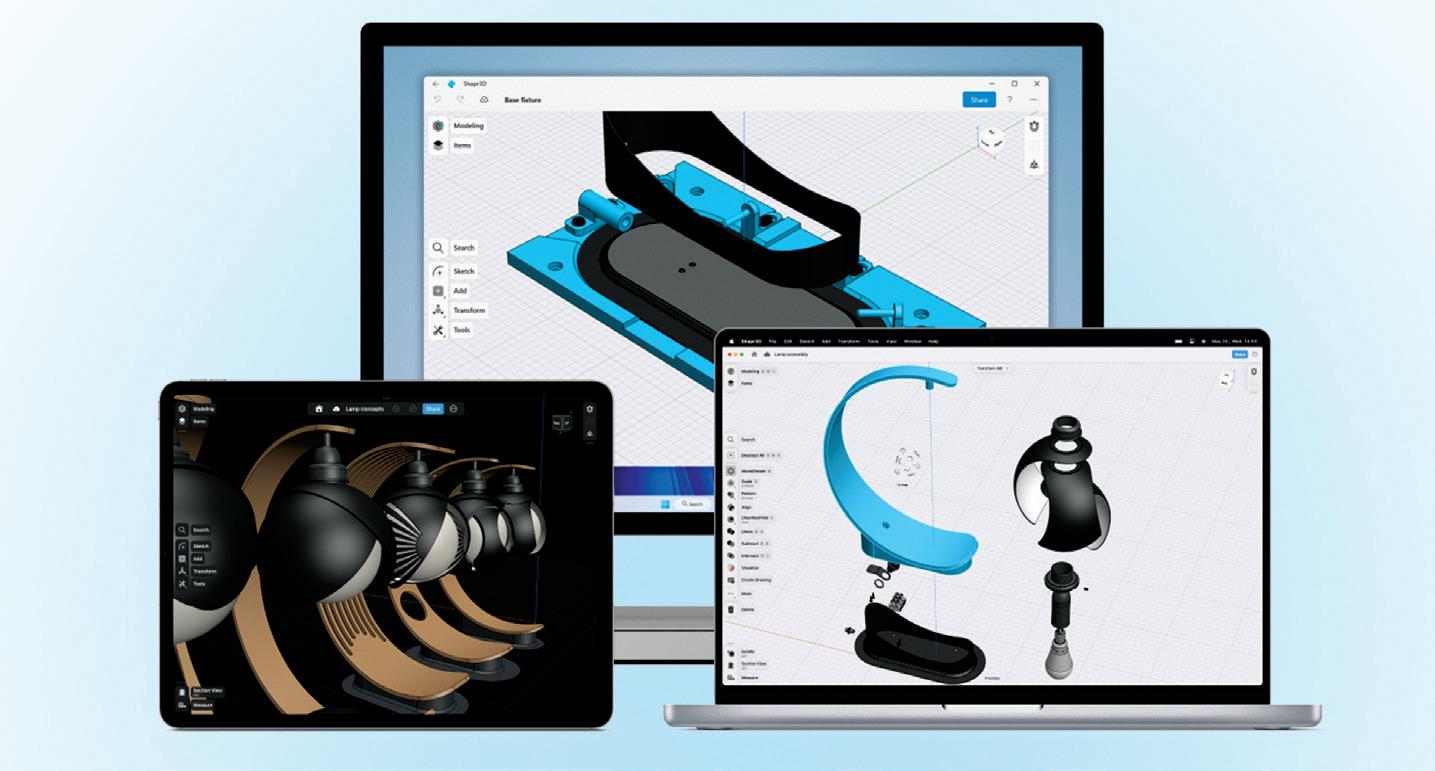
SIEMENS STAND B10/B11
Siemens Digital Industries Software and Siemens Xcelerator are seeking to transform the everyday by giving companies the agility, flexibility and adaptability to turn ideas into innovation with greater efficiency and speed.

Discover why companies of all sizes are embracing digital transformation. www.siemens.com
BRONZE SPONSOR
SPONSOR
DEVELOP3DLIVE.COM AUGUST / SEPTEMBER 2023 47 DEVELOP3DLIVE.COM 2023
GOLD SPONSOR
GOLD
SOLIDWORKS VIRTUAL SPONSOR
Solidworks, a Dassault Systèmes brand, offers complete 3D software tools that let you create, simulate, publish, and manage your data. The company states that its products are easy to learn and use, and work together to help you design products better, faster, and more cost-effectively. It adds that the Solidworks focus on ease-of-use allows more engineers, designers and other technology professionals than ever before to take advantage of 3D in bringing their designs to life.
www.solidworks.com
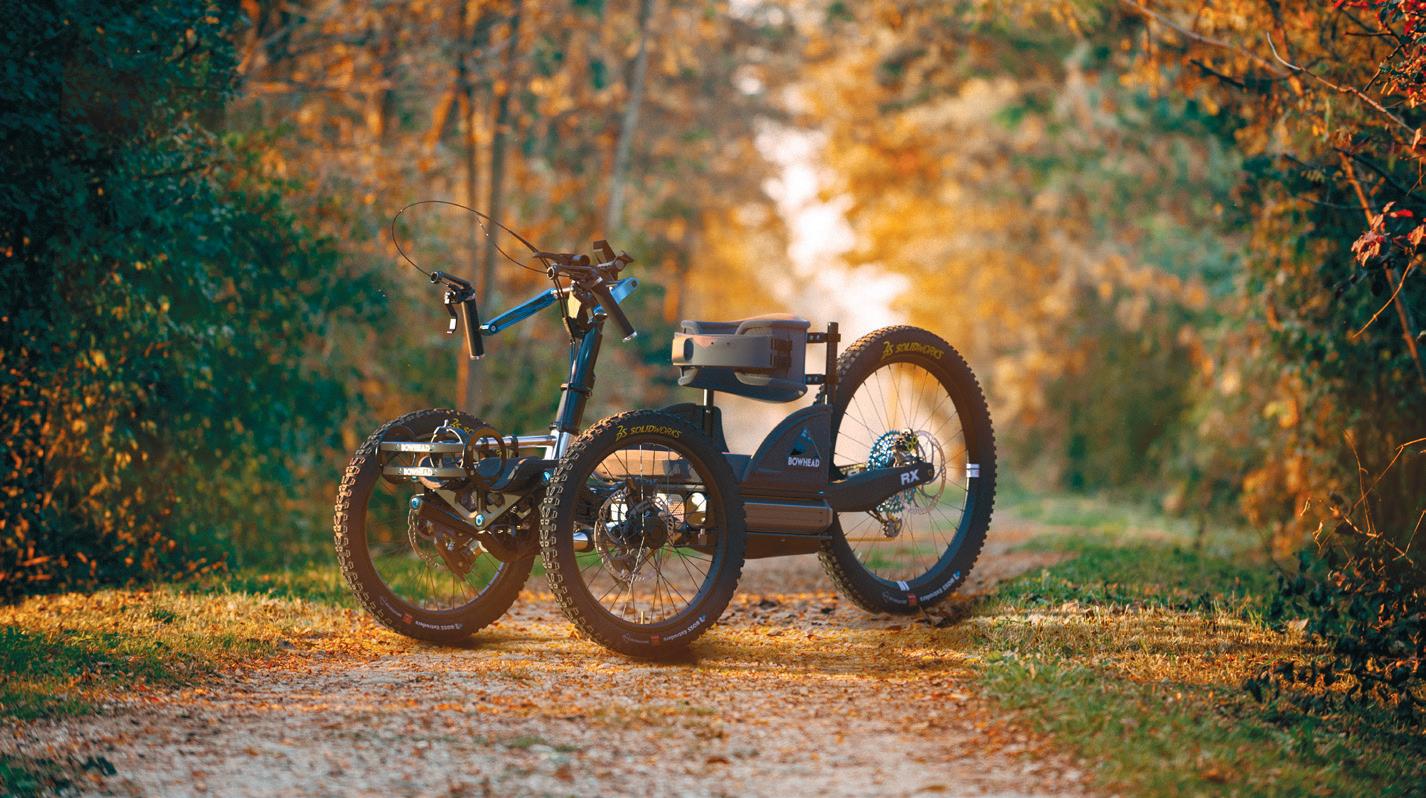
TECHNIA STAND A25
Technia is committed to making technology and innovation work in a practical world. According to the PLM company, this is demonstrated by the resources that it applies to developing exceptional capability in the latest software and process developments.

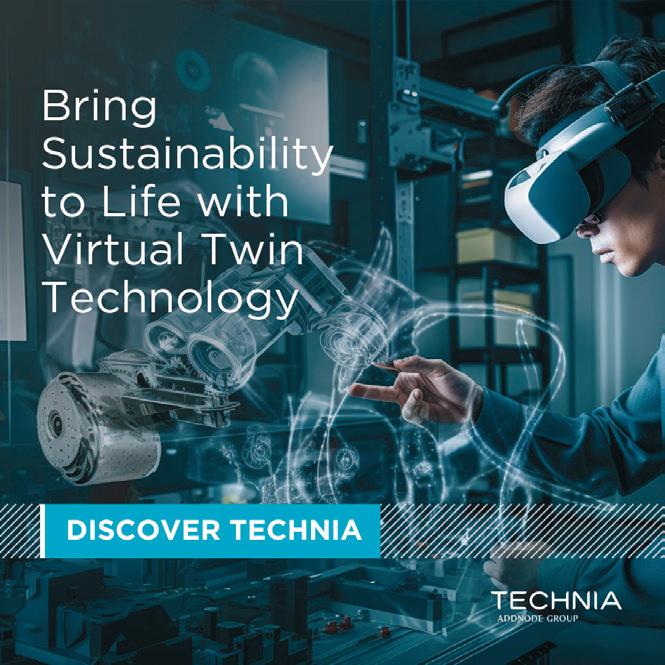
www.technia.co.uk
SYMETRI STAND A13
Symetri creates and provides technology solutions and services for the product design and manufacturing industries. With more than 750 employees and 250,000 daily users in northern Europe and United States of America, Symetri can offer effective guidance in everything from 3D modelling simulation to Product Data Management and Product Lifecycle Management, and how to maximise the potential of your project. The company's services include the provision of software, consulting, training and support, and a comprehensive range of IT and Document Management solutions. www.symetri.co.uk
BRONZE SPONSOR
GOLD
SPONSOR
BRONZE SPONSOR
48 AUGUST / SEPTEMBER 2023 DEVELOP3DLIVE.COM EXHIBITORS 20 SEPTEMBER - WARWICK ARTS CENTRE, UK
THEOREM SOLUTIONS STAND A15/A16
Theorem Solutions’ range of use-case focused solutions are based off many years of experience in optimising 3D CAD data. This includes TheoremXR, which enables some of the world’s largest engineering and manufacturing organisations to utilise their existing 3D assets with Augmented (AR), Mixed (MR), or Virtual Reality (VR).
The TheoremXR suite allows engineers and designers to visualise their 3D data in context and collaborate, both remotely and locally, to work together in a single session.
Along with XR, Theorem Solutions also helps businesses get the most out of their CAD data with CADTranslate for robust data translation and CADPublish for 3D PDFs.
www.theorem.com
THE 3D MEASUREMENT COMPANY (T3DMC) STAND A32
The 3D Measurement Company is an expert in 3D scanning services and a provider of the latest innovations in handheld 3D scanning and portable CMM equipment. The company will be exhibiting a range of portable, lightweight 3D scanners incorporating features such as dual scanning mode (red and blue laser) in the Prince scanner and red laser with incorporated photogrammetry in the AXE scanner. T3DMC will also be showing portable CMM 3D scanning equipment that uses camera positioning to enable wireless functionality over large areas. The systems operate without reference markers or spray and have touch probe options to add to the capability of the range.
www.t3dmc.com
VIZOO STAND A34
German-based Vizoo is a supplier of solutions for the ‘accurate digitisation' of material surfaces in the fashion, automotive and furniture industry.
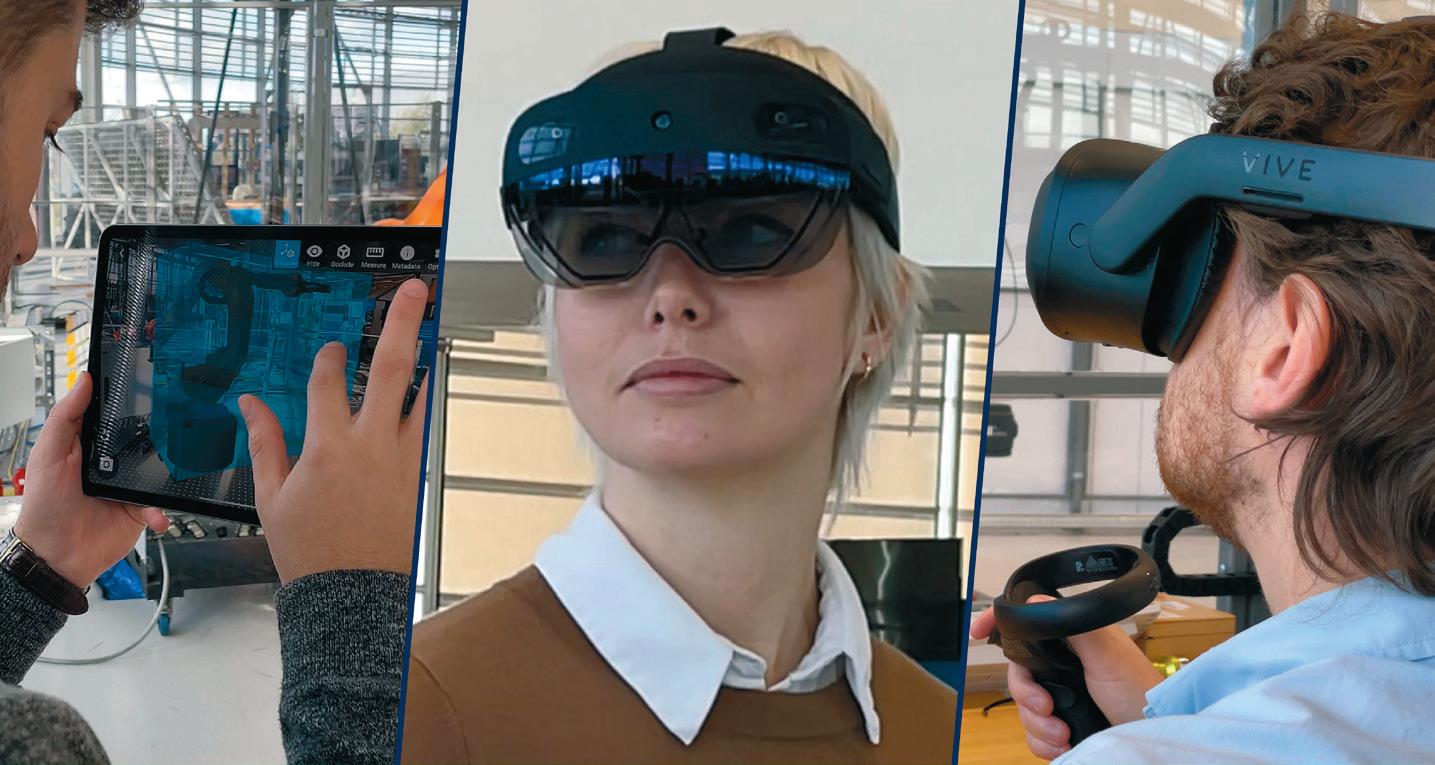
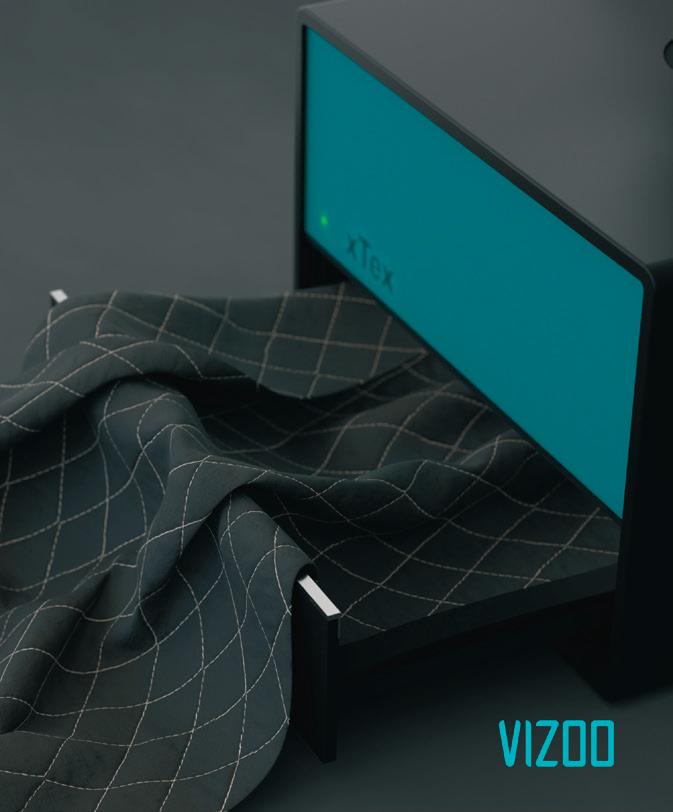
Since 2013, Vizoo has helped fashion brands, manufacturers, and fabric mills to digitise their material processes and create digital twins of their physical samples.
In more than 45 countries globally clients are using Vizoo technologies like the xTex scanner and software as well as the physX platform to streamline their materials pipeline from 3D design to eCommerce.
www.vizoo3d.com
VIRTUAL INTERCONNECT STAND A23
Virtual Interconnect is an engineering consultancy and PTC Gold Technology Partner specialising in the design of complex routed systems encompassing wire harnesses and hydraulic/piping installations.

The company aims to significantly reduce your risks and improve the time to market of your products. It can do this with one of three provided services: Project - where its engineers work as a remote design team to aid the development of your solution; Process - where its team aims to enhance your current wire harness design process; and Product - where its software design team can provide you with general-purpose solutions for wire harness and electrical design. www.virtual-interconnect.co.uk
GOLD
SPONSOR
BRONZE SPONSOR
DEVELOP3DLIVE.COM AUGUST / SEPTEMBER 2023 49
DEVELOP3DLIVE.COM 2023
BRONZE SPONSOR
PERFORMANCE
From fashion runways to hotel lounges, today’s DJs can be found playing in a wide range of venues. That’s created a market for beautiful equipment that allows professional DJs to step out from behind the traditional booth in a nightclub and explore new performance opportunities
Headphones cocked at an angle, hands flying over an array of knobs and faders, the DJ is a mainstay of parties of all kinds, from Luton to Las Vegas. But chances are that the last time you saw a DJ, it wasn’t even in a nightclub.
In recent years, DJs have performed in all types of venues and at all kinds of events, from clubs and hotel lounges to fashion parties, product launches and on live streams. The role has become increasingly diverse, with the performer needing to adapt to different situations and having the equipment to match.
The traditional set-up of two turntables, a mixer, a weighty record bag and a glut of wires and connectors
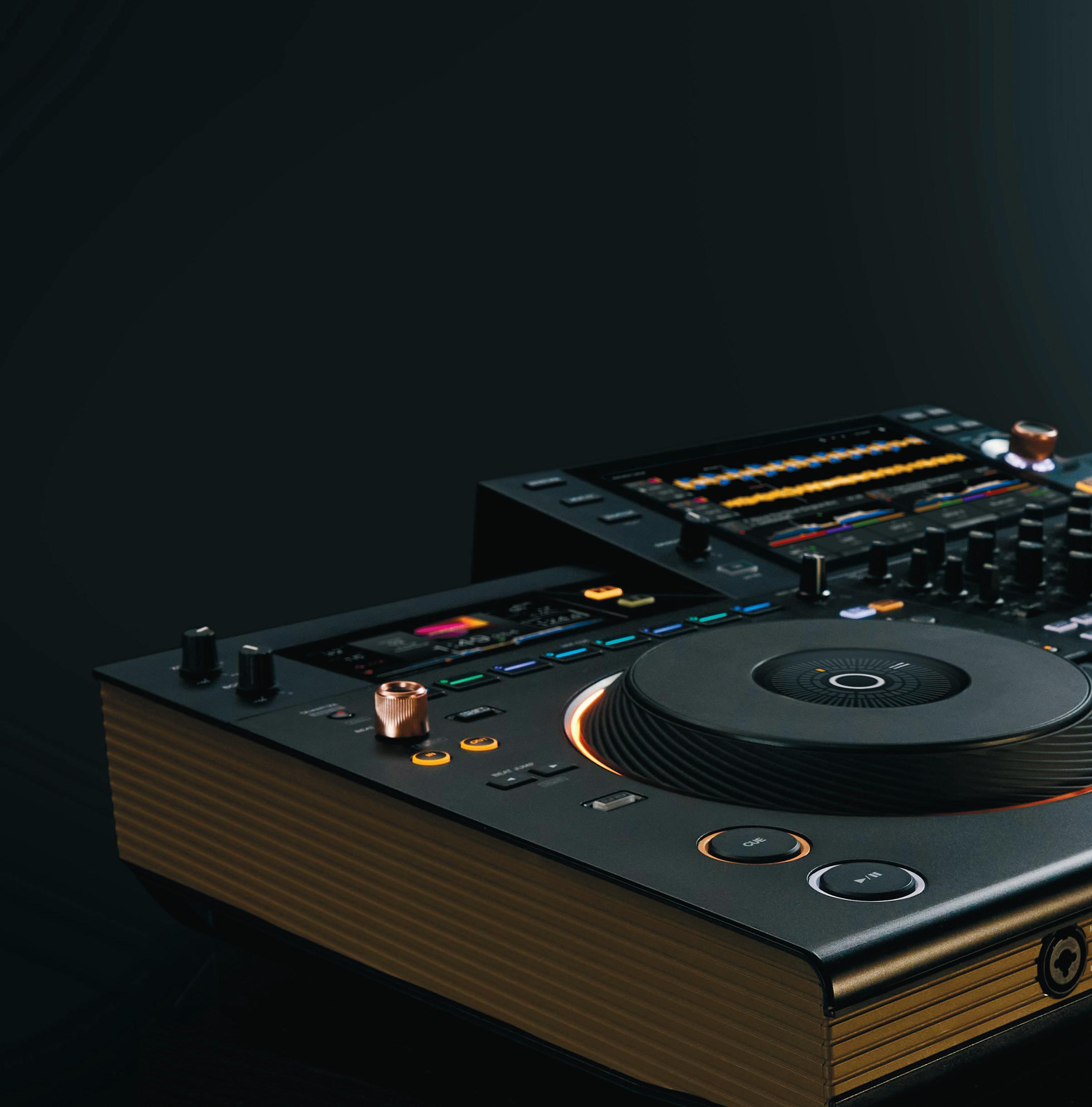
50 AUGUST / SEPTEMBER 2023 DEVELOP3D.COM PROFILE
PERFORMANCE ART
naturally brings challenges when it comes to transportation. The alternative is for venues to offer performers access to an industry standard set-up, but that means they must keep the equipment up to date and stored securely when not in use.
“Lots of our products are designed with a strong focus on nightclubs, so we’re seeing more and more cases where the equipment doesn’t quite fit the bill,” says Pioneer DJ designer Muneki Sugita.

The black, angular metal cases of most nightclub audio equipment is based around their truly functional purpose, with a set formula of switches, dials, turntables and displays.
But Sugita and the team saw the need for more versatile products that can work in any venue or space, and began development of the Pioneer Opus-Quad.
ALL IN ONE
The black body of the all-in-one unit of the Pioneer Opus-Quad is curved and angled quite differently from any other DJ unit, with a textured bronze-coloured wrap around the case and function knobs similarly highlighted in a rich metallics.
There are three displays (one for each turntable controller and one for the mixer) and textured jog wheel surrounds. Its visual appearance, when compared to that of its predecessors, is nothing short of opulent.
Looks aside, the functionality delivered by the OpusQuad is a DJ’s dream. The unit is Pioneer DJ’s first allin-one device to have four decks in one standalone unit. The display user interface allows the DJ to access their music with fewer physical moves and effects can be freely changed with a single finger touch.
The Pioneer OpusQuad has the good looks to stand out even in the most glamorous environments
DEVELOP3D.COM AUGUST / SEPTEMBER 2023 51
‘‘ We focused on giving the product playability as if it’s a musical instrument ’’
“The Opus-Quad offers a harmony of evolved playability and beautiful design that matches any environment,” says Sugita. “We focused on giving the product playability as if it’s a musical instrument.”
The word Opus is used today to refer to a work of art, but it originally comes from the Latin term Opus Dei, or ‘work of god’ — the singular form of Opera. The shape of a theatre’s orchestra pit was clearly an inspiration, and the Pioneer DJ design team approached the concept with the user standing behind it, performing on the stage to a crowd fanned out in front of the music.
The initial design sketch adopted this fan shape, and was created in a collaboration between different departments, including the housing design team and product designers. From the concepting work, you can see how the rich decor of theatres – all gilded ceilings and draped fabrics – also impacted the CMF of the design.
From here, it took a lot of time and effort to decide on a shape and method that would allow mass production without compromising the initial image concept sketches.
The process moved into 3D, using Rhino 3D 7 to conduct the geometry study, which gave Sugita and the team a high degree of freedom for modelling.
The CMF studies were produced using Luxion KeyShot 11, helping speed up the decision-making process with models that could be assessed from all angles and quickly modified, says Sugita. “In particular, KeyShot 11’s rich and customisable material libraries allowed us to quickly go from rough study to detailed adjustment. Thanks to the thorough study we conducted in the early stages, we were able to bring the sketches to life in the prototypes without any major problems.”
With the use of multicoloured LED illumination in several areas of the product, adding further functional purpose, the team relied on optical simulation to determine the most efficient ways of emitting the light.
SURFACE EXPRESSION
The main surface of the Opus-Quad is formed from aluminium plates that connect from the top to the front
of the unit. Each plate had to be divided into three parts — the mixer section and the left and right deck sections. That proved difficult to manage so that the round bends of all three parts of the front section would neatly align. Physical prototyping proved essential for solving this design challenge, as well as tackling other issues to ensure the right fit and finish.
The streamlined shape on the outer ring of the jog wheel, which looks like a blend of a whirlpool and the folds of a theatre curtain, give the Opus-Quad more textures and the jog wheels a smooth, unique look, but also makes it more precise to operate.

“We created more than a dozen prototypes using a 3D printer and determined the shape by actually seeing and touching the prototypes,” says Nozaki Hideaki, a member of the Pioneer DJ engineer team.

“Each prototype was made so it could be attached to our existing jog model, so we could actually use it and get a feel for how it worked.”
Similarly, the width and pitch of the grooves on the front and side panels of the cabinet were determined through repeated iterations, explains Hideaki, stating that they deliberately chose specifications that were both beautiful and functional.
The product was developed by a 35-person, multidisciplinary team with three designers responsible for the visual aspects of the design, including product and displays, and packaging and marketing, with around 15 design and hardware engineers involved.
“At first, we were concerned about whether we’d be able to achieve our vision, but the design was well received both internally and externally, so we were relieved!” laughs Sugita. “By providing products that can work in any venue or space, we hope to expand the range of places where DJs can play an active role and allow more people to enjoy an amazing experience.”
Whether it’s a performance at 4pm or 4am, the Opus-Quad has the looks and ability to take to any stage, anytime.
www.pioneerdj.com
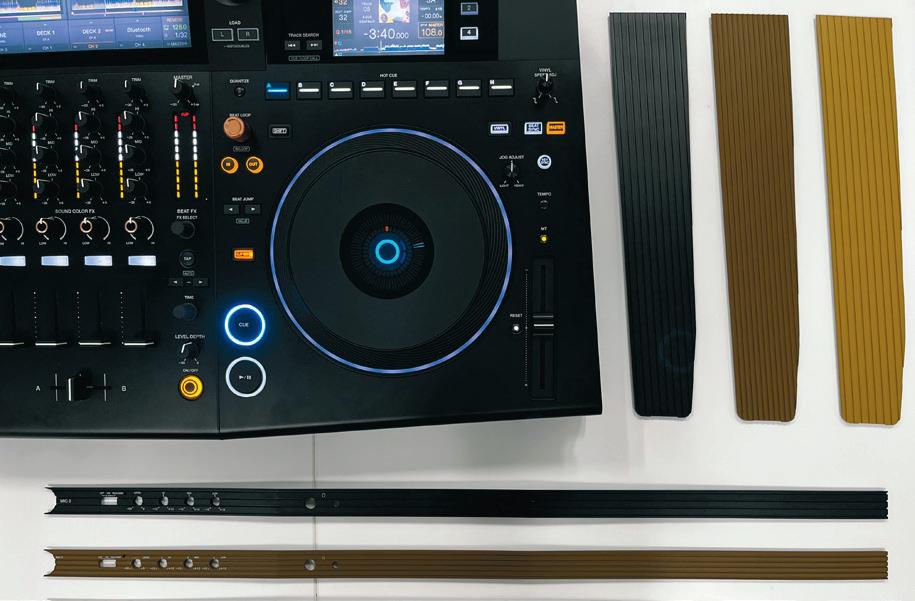

● 1 Theatrical colours and textures are a hallmark of the OpusQuad design
● 2 3D printing was used to experiment with textures for the jog wheel surrounds
● 3 Texture not only gives the jog wheels a unique look, but also makes operating them more precise
● 4 Each prototype was built to be attached to the jog wheels, to see how well it worked
able
52 AUGUST / SEPTEMBER 2023 DEVELOP3D.COM PROFILE
‘‘
1 2 3 4
Thanks to the thorough study we conducted in the early stages, we were
to bring the sketches to life in the prototypes without any major problems ’’
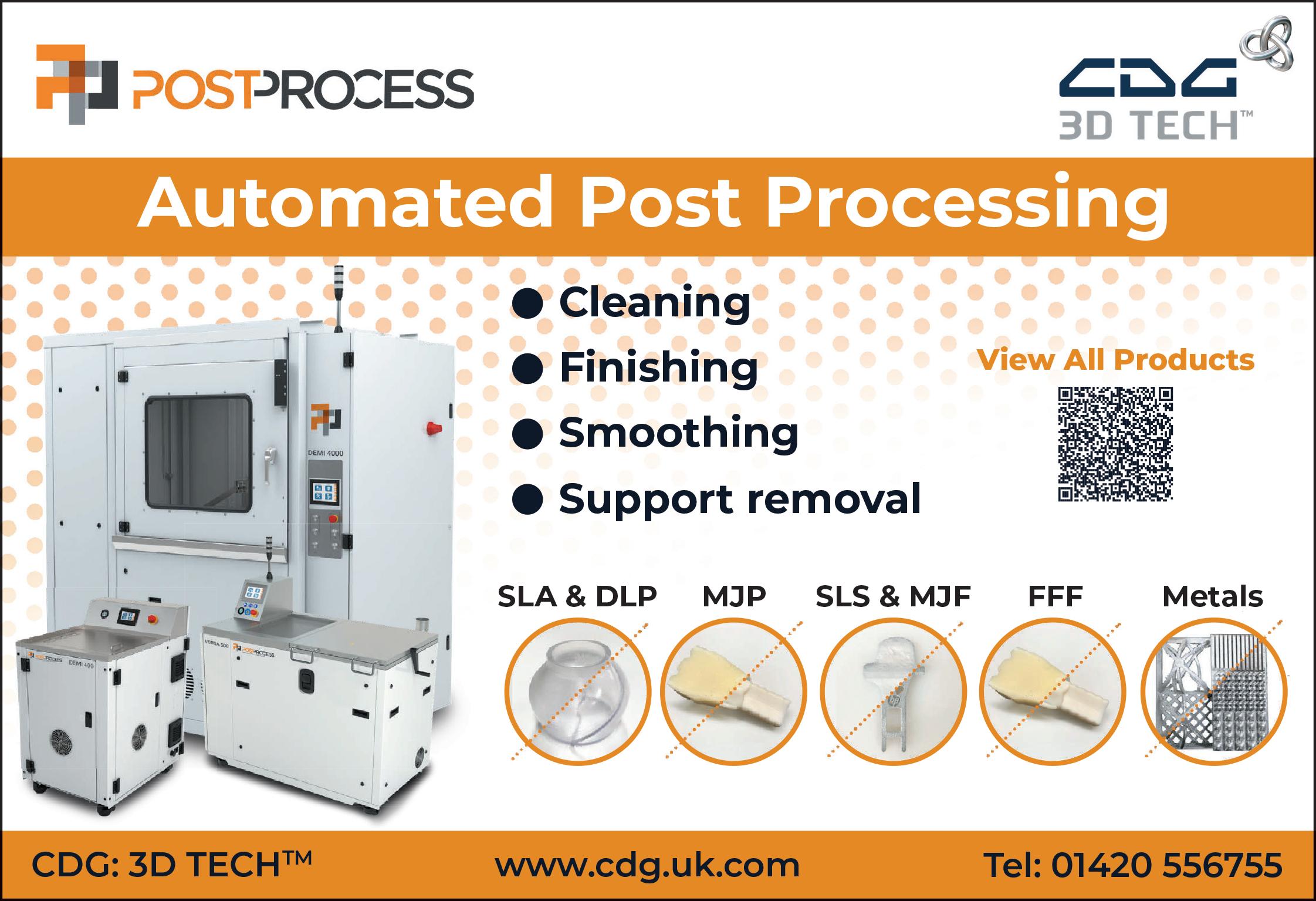

SOMETHING TO
Mirror is one of the hottest home fitness brands on the market, so finding a suitable design aesthetic for its accessories line really put Leadoff Studio through its paces, as Stephen Holmes reports
When athletic apparel brand Lululemon branched out into hardware, its goal was to create a product that, when switched on, transforms a living space into a fitness studio, and when switched off, simply looks like a stylish, full-length mirror.
A big hit during the pandemic, when gym memberships were jettisoned and fitness became an athome operation, the next, post-pandemic step for Mirror was an extension of the scope of workouts offered, as well as the launch of an accessories range.
“Before we began this design project, Mirror’s only physical product to date was the Mirror itself,” says Jordan Diatlo, CEO of Leadoff Studio, which was brought in to develop the product range.
“The whole purpose of the product is to blend in with your home when it is not in use as a fitness device, and simply function as a mirror. The conceptual thinking behind the Smart Weights and Ankle Weights was to take Mirror’s brand off of the wall and into the room, or onto the user’s body.”

However, with new competitors flocking to the fastgrowing home workout equipment market, Leadoff knew it would be critical to the product’s success that it could stand out from the competition in terms of functionality and visual identity.
The technology and user experience of these products is unique, explains Diatlo from Leadoff’s West Manhattan headquarters, home to its team of four designers. The devices sync with the Mirror, enabling users to count exact reps and easily track their progress
54 AUGUST /
2023 DEVELOP3D.COM PROFILE
SEPTEMBER
Leadoff Studio was brought in to design the accessories range for the Lululemon Mirror
‘‘ Details are hyper-critical, since they add up to give one a subconscious feeling of what the product is and what the brand stands for ’’
TO REFLECT ON

over time. By pairing devices with the Mirror, the app provides advanced performance metrics beyond anything else on the market.
Mirror’s Smart Weights are designed specifically to function with the breadth of Lululemon’s workout programmes. A square end cap face was implemented, to allow users to switch between ground exercises or standing exercises while using the same weights, while differentiating the product from other hexagonal or circular dumbbells.
The Ankle Weights take this thinking even further, with the ability to flex in any direction. Even the weights within the product are flexible.
DIFFERENT DIRECTIONS
Design work began with sketching, but quickly moved into Solidworks. “In our conceptual stage, we showed Mirror a range of concepts that fit the Lululemon brand, but began to pull it in different directions. Since this is the company’s first off-the-wall product, it would begin to define the physical brand language of this service,” says Diatlo.
“We showed Mirror varying concepts in the beginning, and they liked one which became the design direction for the project. Through collaboration with their engineers, we eventually got to a solution that made the aesthetic functional, but it was a difficult task.”
With a direction selected, the design team honed every last detail to ensure the products would feel like premium technology without being intimidating. Through prototyping and rendering, the designs evolved, while close collaboration with Mirror’s engineers ensured the right proportions stayed intact as the team focused on the external design and user interaction.
“Mirror was hyper-aware of the aesthetics from the start, so we spent a ton of time in Keyshot, rendering out options for every minute detail and showing a variety of CMF options,” says Diatlo.
“These details are hyper-critical since they add up to give one a subconscious feeling of what the product is and what the brand stands for. Mirror provides users with the highest quality and the details have to speak to that. There was a lot of Keyshot rendering to visualise this along the way.”
UNIVERSAL DESIGN
As the project progressed, the team had to figure out how to make the design universal, where one size fits all wrists and ankles, within one product. To do this, it created a product that intentionally overlaps as you wrap it. The clasp that holds it in place, along with the correct spacing of the weights and rigidity of the material took extra patience and fine-tuning to get right.
An early prototype used rigid metal bars for the weights, yet proved uncomfortable for users. A completely flexible weight was invented, prototyped
and manufactured, in order to give the ankle weight full flexibility and conformity to the user’s body.
“Even with all of the embedded tech, I think this is one of the most innovative functions of the device,” says Diatlo. “It’s a true testament to the collaboration between design, engineering and manufacturing on this project.”
For the handheld Smart Weights, quick prototypes made of dowel rods and foam were used to mock up the shapes. While carrying no weight, they allowed the team to understand the proportions of weights and how they sat together as a line of products.
Eventually, FDM 3D printing was used to produce prototypes – including segments of the ankle weights and some smaller UX details, like battery access on the different weights.

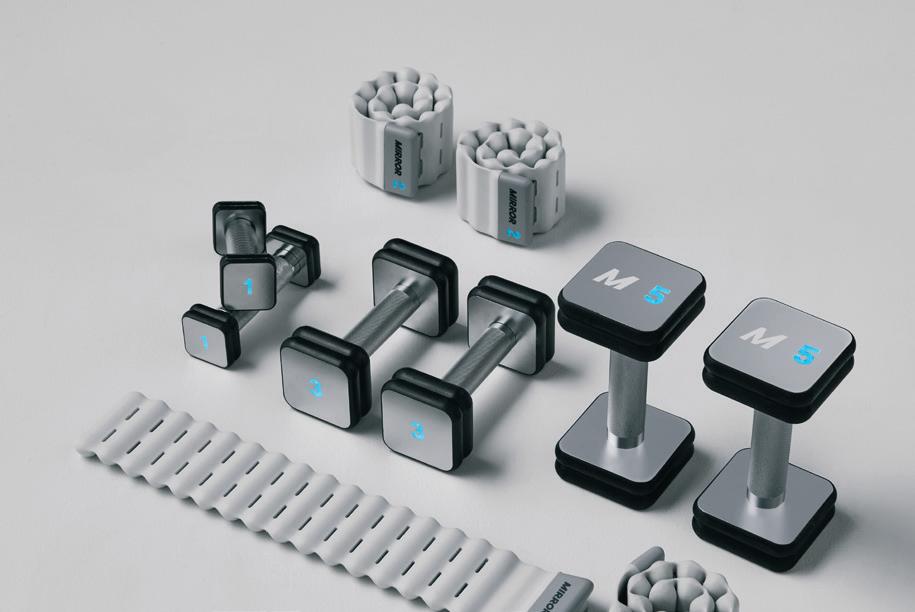
From there, higher fidelity prototypes were outsourced, in order to test the weight and the materiality of the products, allowing the team and client to get a feel for the function and identify where to fine-tune the products.
Numerous studies were done to get the colours of the Ankle Weights the perfect shade of cool grey, helped by Keyshot to not only get the right look, but to simulate elements like the backlit numbers on the smart weights when both on and off, and how that changed the feel of the product. The result: a cool, stylish accessories range, to match the original Mirror. www.mirror.co | www.leadoffstudio.com
● 1 The ankle weights are designed to flex and conform to the user’s body
● 2 Square end caps on the Smart Weights allow users to switch between floor and standing exercises 1
● 3 The design process began with sketches before moving into Solidworks and then Keyshot

56 AUGUST / SEPTEMBER 2023 DEVELOP3D.COM PROFILE
1 2 3
‘‘ Mirror provides users with the highest quality and the details have to speak to that ’’
SMALLBIGEFFICIENCIES, GAINS
From animatronics to aerospace, Domin Valves’s hydraulic servos power precise, controlled movements across fast-moving, highperformance sectors. In order to keep pace with the level of design and engineering required, the Bristol, UK-based company is aiming to take its products to the next level while simultaneously satisfying rigorous demands and quality assurances.
Globally, hydraulic systems produce twice the CO2 emissions produced by the aerospace industry, and Domin is on a mission to tackle that issue. With better designs, it hopes to save the industry one gigatonne of CO2 by 2030.
“Most hydraulic systems today only operate at 23% efficiency, resulting in the wastage of billions of kilowatthours every year,” says Domin CEO Marcus Pont.
“Over its lifetime, each of these game-changing valves has the potential to save multiple tonnes of CO2e, and with them, we can spearhead the advance of the fluid power industry towards a sustainable future.”
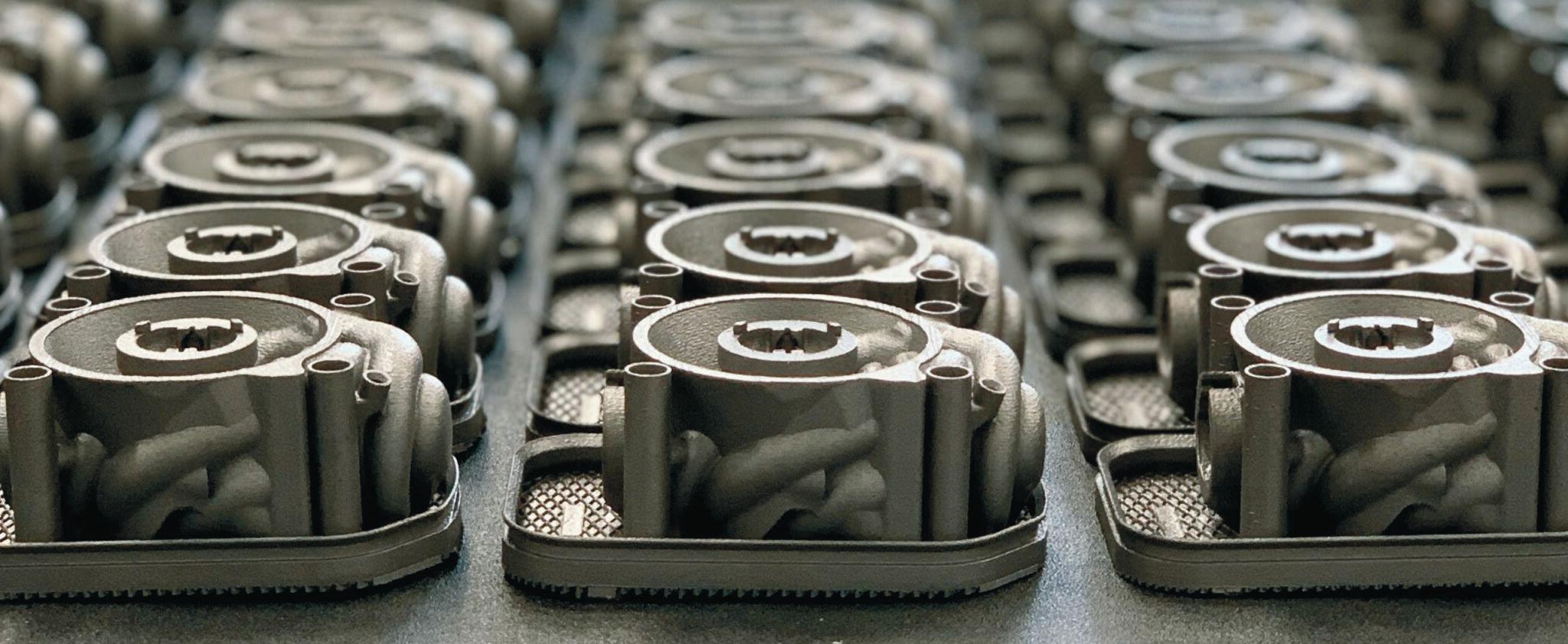
Domin’s latest ‘direct drive’ servos have benefited from the use of 3D printing, enabling the company to remove and combine components, use clever hydraulic connections to minimise mass and volume and enjoy the design freedom required to identify a new, stable design.
“It is a product that performs all the required customer functions better than the current state-of-the-art [product] and costs less to produce,” says Pont.
Offering a versatility that means they can be used across a broad range of applications, demand for these new valves looked set to outpace supply.
The first step in tackling any potential shortfall was the setting-up of a new production facility, which will consolidate Domin’s manufacturing capabilities, taking it from three facilities (one in Poland and two in the UK) to a new technology centre in Pucklechurch, near Bristol.
The second step has been to expand on its use of cutting-
With metal AM technology, Domin is achieving faster build times, lower cost per part and reduced waste
edge design and manufacturing technologies, combining additive manufacturing with other innovations such as high-speed motor control, modern electronics, big data and connected technology, in order to create a range of four new servo proportional hydraulic valves.
METAL MOVES
With metal additive manufacturing, Domin is designing complex geometries with internal features such as highly efficient, stiff structures that would not be possible to build using conventional manufacturing methods.
The installation of Renishaw’s RenAM 500Q 3D printing system at the new Pucklechurch technology centre is handling the bulk of production, enabling the company to scale productivity while maintaining the high quality of the end product that its customers require.
“We expect that the increased capacity that the new AM system provides will allow us to maintain low-production turnaround times and deliver consistently high quality to our growing customer base,” explains Pont.
Domin was drawn to the RenAM 500Q system due to its four high-power 500W lasers, which can access the whole powder bed surface simultaneously, for significantly faster build rates than previous systems.
While this alone vastly improves productivity and lowers cost per part, it also reduces the amount of waste powder output.
The RenAM 500Q system also features an intelligent gas flow system that removes detrimental emissions from the laser’s path, resulting in a more stable processing environment that has driven up quality standards of enduse parts.
With more efficient additive systems, the knock-on effect is that Domin is set to build even more energysaving products, all capable of delivering a precise and controlled positive impact on CO2 emissions.
wwww.domin.co
DEVELOP3D.COM AUGUST / SEPTEMBER 2023 57
Aiming to save one gigatonne of CO2 by 2030, Domin Valves has turned to more efficient additive manufacturing technology to build out its designs for ultra-efficient hydraulic valves
START WITH THE PROBLEM
Whether we like to admit it or not, additive manufacturing (AM) is still a young, upstart industry when compared to the broader, more established manufacturing world. While that means we still have a lot to learn about scale, reliability and the applicability of our respective technologies, it also means that this is an incredibly dynamic and inventive space. It’s populated by many 3D printing start-ups, academic institutions and tinkerers who, together, are trying to break through the hurdles that companies in this industry face, from fierce competition for a potentially small overall user base to
manufacturing economics that favour other approaches.
However, there is a downside to this dynamism. Sometimes, it can fuel a blind passion for developing technological solutions, rather than fostering a steady focus on what the world actually needs.
Starting with a solution is the easy way. It’s deciding, ‘I think this could work’, and then putting an experiment to the test and discovering you were right. It works!
A successful proof of concept is quickly followed by a flurry of other activities: filing a patent, starting a business, aiming to go viral on social media, and so on.
That may sound like success – but it’s not, because it’s how you end up with a solution in search of a problem.
● 1 Holo’s technology combines metals with DLP stereolithography
● 2 This combination is capable of delivering accurate, finely detailed parts faster and more costeffectively than more traditional processes

58 AUGUST / SEPTEMBER 2023 DEVELOP3D.COM PROFILE
Instead of a solution in search of a problem, additive manufacturing needs to become a technology that product development experts can depend on to deliver true mass manufacturing, writes Holo co-founder Arian Aghababaie
OPINION
1
You go from, ‘I think this could work’ to, ‘I wonder what this could work for?’, which in reality is more of a thought experiment than a business plan.
WHERE TO START?
Start with the problem. Start with the user base, with the people who might actually be in need of a solution and, more importantly, actively looking for one.
Here’s where true brilliance lies and where a company might just build itself a foundation poised for success: Listen. Listen to existing problems instead of creating hypothetical solutions; address real-world issues and listen to what they actually entail and require.
When we started Holo, we took a technology familiar in 3D printing – digital light processing (DLP) stereolithography, known for being a high-throughput, high-resolution yet cost-effective process – to a sector mired with problems: metals.

DLP and metals hadn’t really intersected before, as users requiring finely detailed metal parts already knew of and had invested heavily in proven technologies that hit the specs, hit the parameters and hit the quality control that they need. In most cases, that points to precision processes, such as metal injection moulding (MIM), Swiss machining and 5-axis CNC.
And thus, in most cases, this has also meant accepting the limitations associated with these processes. These include identifying the few Swiss or precision 5-axis machine shops with available capacity, for example, and bearing with long lead times for parts. Or dealing with long wait times for MIM, while moulds are created, iterated and finalised, and weeks if not months are spent getting production lines ready.
In situations where you’re needing batches made up of millions of fine parts, these compromises might be worthwhile, as mass production would ultimately prove out its ROI. But when you’re dealing with limited or short-run production runs, batches comprising one or a few items, or you urgently require production-on-demand capabilities, then using these more traditional processes makes no sense, if it’s even possible.
Enter metal additive manufacturing as a new avenue. One or a few parts could be made relatively cost- and time-effectively. If those parts required substantial post-processing to hit tolerances, so be it: the ROI is still superior to traditional processes. Scaling that beyond one or few parts might be impossible, but how about combining the on-demand capabilities of 3D printing with the resolution of DLP and the necessary metal materials? That’s unheard of – or at least it was, until
that particular intersection of needs was recognised as an issue in need of a solution.
WHAT DOES AND DOESN’T HELP
The first step is identification. For us, what end users needed was a precise, true-to-CAD, scalable production technology available on demand.
The next step is solving that problem. Excited inventors may not want to hear this, but it typically means focusing on the boring stuff, like accuracy and results.
From there, we move to refining – note that we’re not saying reinventing – the technology, taking it into high gear by moving beyond the boring stuff into creating realisable processes. In effect, the new technology should aspire to replicate the success of more traditional manufacturing processes.
Along the way, there are some important ‘Do Not Do This’ steps to observe:
• Do not push a 3D printer onto someone who doesn’t need it
• Do not ignore existing trusted supplier relationships
• Do not pretend that ‘traditional manufacturing’ means ‘out of date’, or worse, ‘obsolete’
It can be easy for those invested in AM to drink the industry Kool-Aid and throw out lattices as a solution for every problem. They help lightweight parts, right? Sure. But do they hit the necessary specs? Only sometimes. At the end of the day, AM is a business. Business is about unique value propositions, sure, and it definitely helps when those are predicated upon patented offerings. But if everyone in, say, automotive reinvented the tyre for each new generation, we’d never get on the road. Let’s not reinvent the wheel. Let’s approach AM logically. www.holoam.com
ABOUT THE AUTHOR
Arian Aghababaie, PhD, is chief strategy officer, president and co-founder of Holo. With over 10 years in the AM industry, he has an extensive background in leading teams bringing new 3D printing technologies to market. At Holo, he sets the vision for applying the company’s metal AM technology to production applications, creating value through the design freedom that Holo’s 3D printing enables.

2
‘‘ Listen to existing problems, instead of creating hypothetical solutions. Address real-world issues and listen to what they actually entail and require ’’
BLUE SKY THINKING
Maeve Aerospace is accelerating the development of Maeve 01, its nextgeneration, zero-emission, all-electric passenger aircraft — and digital twin technology is proving key to extending its range and introducing new economies.
Unveiled at the 2023 Paris Air Show, Maeve 01 can convey 40 passengers over distances up to 250 nautical miles (nmi) and produce zero emissions in the process. Once on the ground, a recharge takes only 35 minutes.
With a team of just 32 employees, the company is based at the YesDelft Incubator on the TU Delft Campus, an important hub of aviation technology in the Netherlands.
Maeve CTO Martin Nuesseler has overseen a redesign of the initial concept, optimising an earlier aircraft using a wide range of tools from the Siemens Xcelerator software portfolio. A former head of engineering for the Airbus A350XWB fuselage and CTO at Deutsche Aircraft, Nuesseler takes an holistic approach to making Maeve 01 the best all-electric aircraft possible.
The company has been able to significantly reduce the overall weight of the aircraft, by creating a digital twin
At Maeve Aerospace, Siemens Xcelerator is
of its all-electric powertrain and executing full thermal and safety simulations on its in-house designed aircraftdedicated battery system.
In doing so, it has been able to reduce aircraft structures and deliver an increase in propulsion and battery capacity. Compared to existing turboprop aircraft, the design of the Maeve 01 reduces operating costs by around 30%.
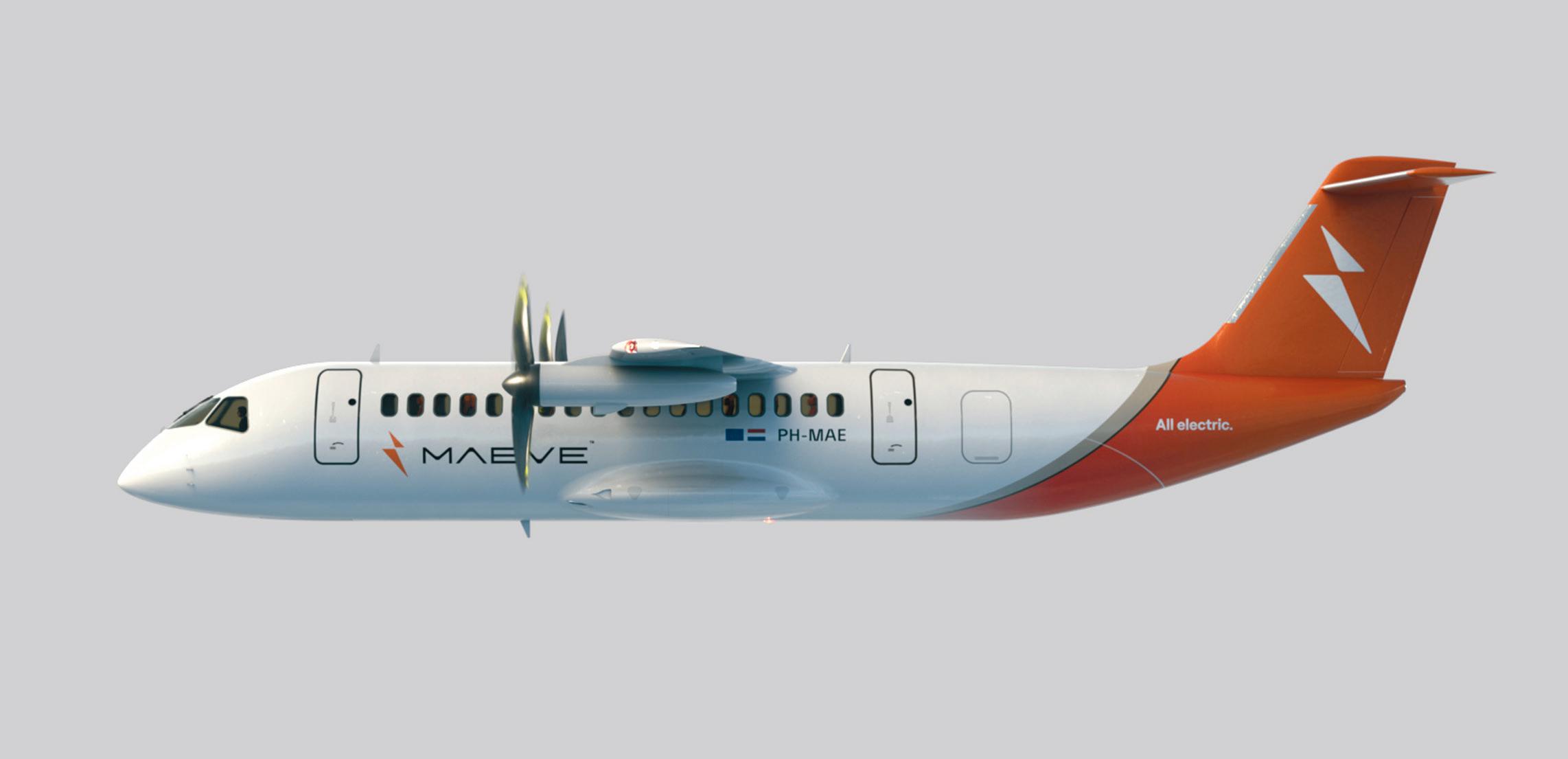
“Maeve, like many aerospace industry innovators, is adopting Siemens Xcelerator as the platform of choice for the development of next-generation vehicles,” says Todd Tuthill, vice president for aerospace and defence at Siemens Digital Industries Software.
“To meet market demands, sustainability requirements and remain competitive, aerospace companies need new ways to deliver products faster and Siemens’ goal is to help our customers push the boundaries of innovation while making digital transformation easy, fast and at scale.”
Sustainable regional airline brand Lucy has already placed an order for 10 Maeve 01 aircraft, setting an example for other operators looking to forge a new path for more environmentally sound modes of travel.
www.maeve.aero
60 AUGUST / SEPTEMBER 2023 DEVELOP3D.COM
» Digital twin technology is flying high at Maeve Aerospace, helping to refine the design and extend the range of its innovative zero-emission commuter aircraft
the chosen platform for enabling digital twin technology
MAKING AERO PROTOTYPING MORE DYNAMIC
The Aircraft Research Association (ARA) is accustomed to pushing the design envelope for technical advantage, and wanted to achieve the benefits of metals 3D printing for prototyping, the dimensional accuracy of traditional machining, along with greater speed and lower costs.
Having previously investigated the potential production of a steel plane wing with the founders of WAAM3D, ARA’s team of aerospace specialists based in Cranfield, UK, already knew that WAAM had the expertise required to help reduce wind tunnel model lead times and costs.

To test the theory, ARA selected a 190mm diameter and 350mm length aluminium nose cone to be produced using the WAAM process, which could then be integrated in a wind tunnel model and scrutinised in its transonic wind tunnel.
Working closely with ARA, the WAAM3D team considered the geometry and made sure that the majority of the starting aluminium 2319 feedstock was built up around a vibration damper integrated within the nose cone. This minimised deposited material, saving time, money and materials. The near-net shape was produced in RoboWAAM, WAAM3D’s large-format 3D metal additive printing platform, with careful monitoring conducted throughout the deposition process.
As ARA principal aerodynamics engineer Dr James Alderman explains: “We wanted a low-risk way to investigate the WAAM technique. A nose cone is a relatively unstressed part, with a safety factor of around 200. The aim was to see how the process performed in terms of timings, cost and material savings and to subsequently decide if higher-stress components might also benefit from this production process.”
LESS WASTE, MORE SPEED
WAAM is an environmentally sympathetic manufacturing process that helps to resolve many macro and micro aerospace engineering issues, explains WAAM3D CEO Dr Filomeno Martina.
For example, when it comes to reducing manufacturing waste, the buy-to-fly (BTF) ratio for aero engine components can be as high as 25. By using WAAM, the BTF is reduced to <2.
Also, WAAM can deliver cost savings of up to 70%, compared to machining from solid. An example 3D-printed outboard landing gear made from titanium (Ti-6Al-4V) achieved 70% cost savings. A printed satellite propellant tank for space exploration delivered 50% cost savings.
When designing prototype parts for testing, lead times can cause significant issues. Martina says that WAAM can reduce the time for a large, forged component from one year to a matter of weeks. When the satellite propellant tank was printed, for example, WAAM3D was able to achieve a 65% reduction in the overall lead time compared to a forged equivalent. Alongside lead time issues, saving raw materials can have an impact on a component’s final cost.
The ARA aluminium nose cone project saw material usage reduced by 74% over traditional machining.
“Once printed, the critical surfaces of the nose cone –those that would be windswept or interfacing – underwent post-machining and inspection at ARA,” says Alderman. “We set surface profile and finish tolerances of < +- 0.1mm and Ra < 0.8 microns respectively, and these were achieved with ease. Importantly, there were no issues with any distortion during the machining process.”
As well as reducing material waste, ARA believes that WAAM would deliver around 5% to 10% cost savings compared to machining from aluminium billet. And with the learning curve of the project applied, the team would be able to deliver the finished item faster, and apply itself to other medium to large aircraft components, such as cruciform, flanges, stiffened panels and wing ribs.
As more companies begin to explore ways to improve the manufacturing efficiency of their medium to largescale engineering components, it would be no surprise to see WAAM taking off in aerospace design.
wwww.ara.co.uk
The WAAM process was used to produce this aluminium nose cone and demonstrate the viability of metals AM for producing wind tunnel models
DEVELOP3D.COM AUGUST / SEPTEMBER 2023 61
Cradle-to-gate costs make all the difference in aerospace contract profitability. As more companies look to increase the efficiency of their medium to large-scale components, Wire Arc Additive Manufacturing (WAAM) places a different option on the table
PROFILE
| www.waam3d.com
CUTTING THROUGH ERRORS
As an aerospace supplier, RO-RA Aviation Systems is an expert in the production of complex, high-precision and difficult-tomachine components.
With around 190 employees, RORA has been developing and producing functional assemblies and precision parts primarily for the aviation industry since 2006, including both OEMs and their main suppliers, as well as providing contract CNC manufacturing. Its products include rods, high-precision components and mechanisms used in civil aircraft, business jets, helicopters and their engines.
Based in Schörfling am Attersee, Austria, its customers demand maximum reliability for these key components, so the company’s machining set-up needs to offer the best possible performance.
“Pre-development, calculation, design and qualification, as well as prototype production are essential components of our business model,” emphasises RO-RA managing director Helmut Wiesenberger.
One success factor has been its digitalisation of development and manufacturing processes, optimising its years of machining know-how for the light and often heat-resistant materials key to aviation product development.
“In addition to machining high-alloy steel, titanium and aluminium, we specialise in high-strength nickelbased alloys,” says RO-RA head of engineering Patrick Fellinger. “With our manufacturing technologies, we are able to produce highly complex geometries as well as gears very economically by means of skiving or hobbing.”
With more than 30 state-of-the-art machine tools and around 90% automation at its disposal, including seven robot stations, it can machine workpieces up to a maximum diameter of 300 mm or 850 x 700 x 500 mm (X/Y/Z) almost around the clock.
Around 3,000 different designs, often with highly complex geometries, have been produced, all sharing the need to be highly accurate and with the best possible surfaces – a combination that makes cost-effective manufacturing extremely challenging.
An example of this is the complex connectors made of aluminium for aircraft fuel lines, in which the machining rate is around 95%. The component must also be nonconductive with perfectly processed surfaces.
In the past, RO-RA experienced machine crashes despite its use of CAM simulation, resulting in costly downtimes and service calls.
In order to avoid this and ultimately increase process reliability, it introduced CGTech’s Vericut simulation and optimisation software in 2018 after a selection process.
As Felling points out, CAM simulation only simulates the toolpaths, not the actual NC code. “With Vericut, we get a virtual machine and a machining digital twin. This means every travel path that we programme is checked for 100% process reliability,” he says, explaining the decision.
According to Fellinger, the software is also very easy to use, with RO-RA checking every milling programme using Vericut for any errors before it is sent to the machine. “After all, only a production simulation of the NC data – that is, the machine code – offers us sufficient security for all machining processes. The topic of crashes is definitely a thing of the past for us.”
CUTTING DOWN ON ERRORS
For a year now, RO-RA has used the Force module in addition to Vericut, to further optimise machining processes. Vericut Force is a physics-based software module for optimising NC programmes, analysing cutting conditions during NC programme operation.
In particular, the maximum reliable feed rate for a given cutting condition is determined based on the load
62 AUGUST / SEPTEMBER 2023 DEVELOP3D.COM PROFILE
Producing key components from tricky specialist alloys that won’t fail has become the mainstay of RO-RA Aviation Systems, which is using Vericut’s new automated software to keep cutting conditions fully optimised
‘‘ Only a production simulation of the NC data offers us sufficient security for all machining processes. The topic of crashes is definitely a thing of the past for us ’’
● 1 Vericut is critical to RO-RA for maintaining optimal parts and throughput
● 2 RO-RA specialises in machining highprecision aviation parts
● 3 Thirty state-ofthe-art machine tools work around the clock at RO-RA
● 4 For Forceoptimised parts, machining time can be reduced by up to 25%
on the cutting edge, spindle power and the maximum chip thickness.
“So far, we’ve optimised 35 different components with Force and, depending on material and complexity, have been able to reduce machining time by up to 25%,” says Fellinger, summarising the results.
“We try to make the most of the production of our components in terms of programme and tool technology – especially in the case of recurring parts. With Force, we now have another very simple lever with which we can further improve our competitiveness.”
Force is not about changing the milling strategies of existing programmes or toolpaths. Rather, everything is regulated by the feed in order to bring about additional advances. The geometries themselves remain unchanged.
Force enables astonishing improvements, especially in the machining of materials that are difficult to machine and or complex multi-axis operations.


The head of engineering offers some insight into what it means to the team when it is focusing on difficult-to-machine materials. CGTech, on analysing an engine component for RO-RA, was able to reduce the machining time by 18%, taking the time necessary from 12 hours to under 10 hours.
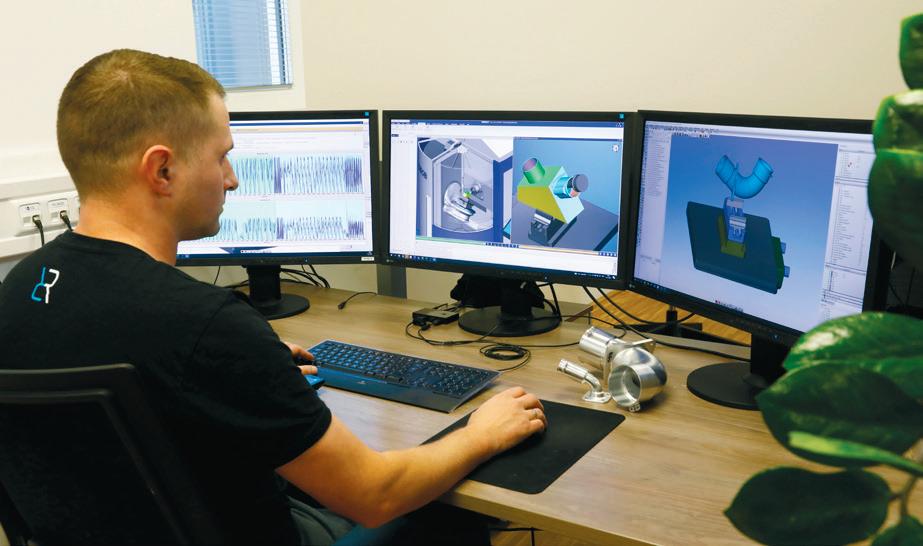
RO-RA only had to provide CGTech with the Vericut project, as well as additional information such as the material (in this case, Inconel 718), as well as certain limits, such as the maximum mean span thickness. While the optimisation process, including simulation, takes around two hours for a similar component –utilising a knowledge database with corresponding empirical values in the background – it also benefits from improved cutting tool life, claiming up to 40% longer life for Inconel or titanium.

DEVELOP3D.COM AUGUST / SEPTEMBER 2023 63
1 2 3 4
www.ro-ra.com
Nvidia RTX 4000 SFF Ada Generation
GPU
Low profile workstation GPUs — those with a half-height bracket and moderate power demands — are big business these days.
You’ll find them in more types of desktop workstation chassis — not just SFFs / Small Form Factors (think, two 12-inch pizza boxes stacked) but ultracompacts as well (the 7-inch personal pizza equivalent).
These compact machines don’t just bring order to space-constrained offices; they play an increasingly important role in centralised workstation solutions, offering impressive density in racks. It is no surprise that they are among the biggest selling workstations from Dell, HP, and Lenovo.
SMALL SIZE, BIG POWER
For years, low profile graphics cards only really had enough power for entry-level 2D/3D tools including CAD and BIM. However, some GPU models have now caught up with more demanding 3D workflows, and offer a more rounded solution for design and engineering professionals.
Dassault Systèmes Solidworks, Autodesk Inventor, Siemens Solid Edge, PTC Creo and Onshape are a given, but some low-
profile cards can now put in a good shift with companion viz tools like Chaos V-Ray, Solidworks Visualize and Luxion KeyShot.
THE NEW CONTENDER
The Nvidia RTX 4000 SFF Ada Generation (20 GB) is the second workstation GPU to be based on Nvidia’s Ada Lovelace architecture. It follows the phenomenally powerful, but phenomenally expensive (£6,750 + VAT), Nvidia RTX 6000 Ada Generation (48 GB), which we reviewed in our recent summer 2023 Workstation Special Report.
The Nvidia RTX 4000 SFF Ada picks up where the Ampere-based Nvidia RTX A2000 left off. It has the same dual slot, low profile form factor, radial fan, four mini DisplayPort 1.4a connectors and 70W max board power, so it doesn’t need an external 6-pin connector.
It comes with both a half-height and full-height ATX bracket, so it can be used in full sized towers as well.
Nvidia’s new Ada Lovelace architecture gives it a significant boost in performance over the Nvidia RTX A2000, which we will explore in more detail later. It also has significantly more memory (20 GB vs 12 GB), which makes it capable of handling some rather substantial viz datasets, now
and well into the future.
If the Nvidia RTX 4000 SFF Ada Generation is the natural successor to the Nvidia RTX A2000 why not call it the Nvidia RTX 2000 SFF Ada Generation?
A cynic might suggest it’s to elevate the GPU’s standing so Nvidia can charge more money. At £1,199 + VAT, the Nvidia RTX 4000 SFF Ada certainly isn’t cheap and costs considerably more than the Nvidia RTX A2000 (12 GB) — currently available for £470 (Ex VAT), although this price is a little cheaper than it has been over the last 12 months.
Alternatively, it could be that Nvidia wants to align it with the recently announced full height, single slot 130W Nvidia RTX 4000 Ada GPU which uses the exact same silicon, but is clocked higher (see news page 8). Or, simply to differentiate it more from the Nvidia RTX A2000, which will continue to sit in Nvidia’s low-profile product stack, alongside the CAD-focused Nvidia T1000 and T400.
Whatever the reason, the Nvidia RTX 4000 SFF Ada will bring a substantial price increase to SFFs and ultracompacts, which have traditionally been entry-level workstations. So, what exactly do you get for your money?
64 AUGUST / SEPTEMBER 2023 DEVELOP3D.COM
» Nvidia’s new compact workstation
delivers in all types of AEC workflows, but you’ll pay a premium for this level of performance in such a small package, writes Greg Corke
» Nvidia RTX 4000 SFF Ada Generation £1,199 + VAT www.nvidia.com www.pny.com Chaos Group V-Ray 5.0 benchmark V-Ray GPU RTX 0 1000 2000 3000 4000 5000 6000 Nvidia RTX A2000 1 Nvidia RTX A4000 2 Nvidia RTX 4000 SFF Ada Generation 2 Nvidia RTX 6000 Ada Generation 3 1,007 1,743 1,920 5,277 vrays (calculations per minute) (bigger is better) 1.23 1 527.27 driver / Core i9-13900K 2 536.25 driver / Ryzen 7950X3D 3 528.24 driver / Threadripper Pro 5995WX Luxion KeyShot 11.3.1 benchmark (GPU) 0 50 100 150 200 Nvidia RTX A2000 1 Nvidia RTX A4000 2 Nvidia RTX 4000 SFF Ada Generation 2 Nvidia RTX 6000 Ada Generation 3 33.87 54.89 69.42 187.45 Relative performance to reference system (bigger is better) 1.23 527.27 driver / Core i9-13900K 536.25 driver / Ryzen 7950X3D 528.24 driver / Threadripper Pro 5995WX SPECapc for Solidworks 2022 benchmark GPU shaded with edges 0.0 0.5 1.0 1.5 2.0 2.5 3.0 3.5 Nvidia RTX A2000 1 Nvidia RTX A4000 2 Nvidia RTX 4000 SFF Ada Generation 2 Nvidia RTX 6000 Ada Generation 3 FHD 4K FHD 4K FHD 4K Data unavailable 4K Benchmark score (bigger is better) 1.23 527.27 driver / Core i9-13900K 536.25 driver / Ryzen 7950X3D 528.24 driver / Threadripper Pro 5995WX 3.15 1.20 3.05 2.36 3.10 1.96 2.59 SPECapc for Solidworks 2022 benchmark GPU Shaded RealView With Edges 0 1 2 3 4 5 Nvidia RTX A2000 1 Nvidia RTX A4000 2 Nvidia RTX 4000 SFF Ada Generation 2 Nvidia RTX 6000 Ada Generation 3 FHD 4K FHD 4K FHD 4K Data unavailable 4K Benchmark score (bigger is better) 1.23 1 527.27 driver / Core i9-13900K 536.25 driver / Ryzen 7950X3D 3 528.24 driver / Threadripper Pro 5995WX 3.96 1.31 5.7 2.58 5.73 2.26 4.50 Solidworks Visualize 2022 1969 Camaro scene - 4K / 1,000 passes / accurate quality 0 50 100 150 200 250 300 350 400 Nvidia RTX A2000 1 Nvidia RTX A4000 2 Nvidia RTX 4000 SFF Ada Generation 2 Nvidia RTX 6000 Ada Generation 3 386 208 219 81 Render time (secs) (smaller is better) 1.23 527.27 driver / Core i9-13900K 536.25 driver / Ryzen 7950X3D 528.24 driver / Threadripper Pro 5995WX Lumion 2023 ‘Streetscape’ render set (4K resolution) 0 100 200 300 400 500 Nvidia RTX A2000 1 Nvidia RTX A4000 2 Nvidia RTX 4000 SFF Ada Generation 2 Nvidia RTX 6000 Ada Generation 3 Data unavailable 444 443 151 Render time (secs) (smaller is better) 1.23 527.27 driver / Core i9-13900K 2 536.25 driver / Ryzen 7950X3D 528.24 driver / Threadripper Pro 5995WX
ON TEST
For testing, we compared the Nvidia RTX 4000 SFF Ada generation (20 GB) with the Nvidia RTX 6000 Ada (48 GB) and two Ampere generation GPUs — the lowprofile, dual slot Nvidia RTX A2000 (12 GB) and full height, single slot Nvidia RTX A4000 (16 GB).
Here, it’s important to state that our benchmark comparisons aren’t perfect, as not all GPUs were tested in the same machine. For the Nvidia RTX 4000 SFF Ada generation and Nvidia RTX A4000 we used the latest 536.25 driver inside an AMD Ryzen 7950X3Dbased workstation from Armari. For the other two GPUs data was taken from previous articles. The Nvidia RTX A2000 with 527.27 driver was tested inside an overclocked Intel Core i9-13900K-based BOXX Apexx S4 workstation. The Nvidia RTX 6000 Ada with 528.24 driver was tested inside an AMD Threadripper Pro 5995WX-based workstation.
We would expect Nvidia RTX A2000 benchmark scores to be elevated a little in 3D CAD, as the Intel Core i9-13900K is faster than the AMD Ryzen 7950X3D in single threaded and lightly threaded workflows and CAD is typically very CPU limited with 3D graphics. However,
With a half-height bracket, The Nvidia RTX 4000 SFF Ada Generation is designed specifically for Small Form Factor and ultracompact workstations

Unreal Engine 4.26 (DirectX 12 - rasterisation) Audi car
model (ray tracing disabled)
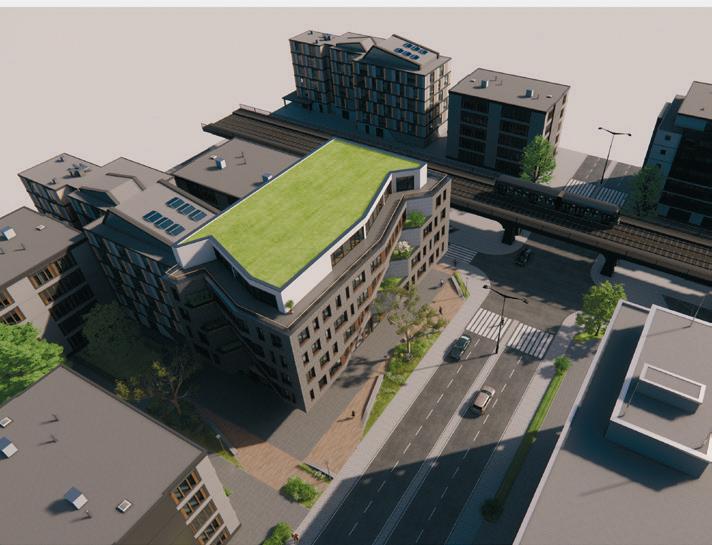
DEVELOP3D.COM AUGUST / SEPTEMBER 2023 65 HARDWARE REVIEW
Enscape 3.1 (Vulkan) Enscape 3.1 sample project 0 30 60 90 120 150 Nvidia RTX A2000 Nvidia RTX A4000 2 Nvidia RTX 4000 SFF Ada Generation 2 Nvidia RTX 6000 Ada Generation 3 FHD 4K FHD 4K FHD 4K Data unavailable 4K Frames Per Second (FPS) (bigger is better) 1.23 527.27 driver / Core i9-13900K 536.25 driver / Ryzen 7950X3D 528.24 driver / Threadripper Pro 5995WX 74.20 27.00 128.27 45.10 129.53 40.50 124.95
configurator
0 20 40 60 80 100 Nvidia RTX A2000 1 Nvidia RTX A4000 2 Nvidia RTX 4000 SFF Ada Generation 2 Nvidia RTX 6000 Ada Generation 3 FHD 4K FHD 4K FHD 4K Data unavailable 4K Frames Per Second (FPS) (bigger is better) 1.23 527.27 driver / Core i9-13900K 536.25 driver / Ryzen 7950X3D 528.24 driver / Threadripper Pro 5995WX 47.29 13.14 83.04 25.06 77.09 21.10 61.86 Unreal Engine 4.26 (DirectX 12 - DXR) Audi car configurator model (ray tracing enabled) 0 10 20 30 40 50 Nvidia RTX A2000 1 Nvidia RTX A4000 2 Nvidia RTX 4000 SFF Ada Generation 2 Nvidia RTX 6000 Ada Generation 3 FHD 4K FHD 4K FHD 4K Data unavailable 4K Frames Per Second (FPS) (bigger is better) 1.23 1 527.27 driver / Core i9-13900K 2 536.25 driver / Ryzen 7950X3D 528.24 driver / Threadripper Pro 5995WX 26.56 6.99 48.76 13.49 49.70 12.97 37.16 Autodesk VRED Professional 2023 (OpenGL) Automotive model (No Anti Aliasing) 0 50 100 150 200 Nvidia RTX A2000 1 Nvidia RTX A4000 2 Nvidia RTX 4000 SFF Ada Generation 2 Nvidia RTX 6000 Ada Generation 3 FHD 4K FHD 4K FHD 4K Data unavailable 4K Frames Per Second (FPS) (bigger is better) 1.23 527.27 driver / Core i9-13900K 536.25 driver / Ryzen 7950X3D 528.24 driver / Threadripper Pro 5995WX 71.48 25.55 125.05 50.18 134.20 49.84 177.12 Autodesk VRED Professional 2023 (OpenGL) Automotive model (Anti Aliasing - Ultra-high) 0 5 10 15 20 25 30 35 Nvidia RTX A2000 1 Nvidia RTX A4000 2 Nvidia RTX 4000 SFF Ada Generation 2 Nvidia RTX 6000 Ada Generation 3 FHD 4K FHD 4K FHD 4K Data unavailable 4K Frames Per Second (FPS) (bigger is better) 1.23 527.27 driver / Core i9-13900K 2 536.25 driver / Ryzen 7950X3D 3 528.24 driver / Threadripper Pro 5995WX 18.18 6.35 35.35 12.45 38.20 12.40 38.80
In some ways the Nvidia RTX 4000 SFF Ada Generation marks a true coming of age for the compact workstation
It looks like Nvidia is placing a premium on the space saving design. For the same price you will soon be able to get the more powerful full height RTX 4000 Ada Generation GPU
in graphics intensive real-time viz tools processors shouldn’t make much difference and, in GPU rendering, virtually none at all.
Now we’ve got the disclaimers out of the way, let’s dive into the results.
For CAD, the RTX 4000 Ada more than delivered. In the SPECapc for Solidworks 2022 benchmark, it maintained high performance at all resolutions, while the Nvidia RTX A2000 dropped off a little at 4K. Of course, benchmark figures only tell one part of the story, and the Nvidia RTX A2000 should still give you everything you need and more in most 3D CAD workflows.
The RTX 4000 SFF Ada brings real benefits to real-time viz. Whereas the RTX A2000 falters a little in some 4K workflows, the RTX 4000 SFF Ada just keeps going. It’s only when anti-aliasing is set to ultra-high in VRED Professional 2023, or real time ray tracing is enabled in Unreal Engine 4.26, that it starts to struggle, staying well below the desirable 20+ Frames Per Second (FPS).
For ray trace rendering, it’s a significant
step up from the RTX A2000. Compared to the RTX A4000, it was 1.26 times faster in KeyShot, 1.1 times faster in V-Ray, but was a touch slower in Solidworks Visualize 2022.
In summary, you can expect around twice the performance of an Nvidia RTX A2000 and similar performance to a full height, single slot Nvidia RTX A4000, although the RTX 4000 SFF Ada uses half the power (70W vs 140W).
THE VERDICT
Typically, when Nvidia launches a new GPU architecture it starts at the high-end with a 6000 Series model, then works its way down the stack, adding a dual slot 5000 and single-slot 4000. With Ada Lovelace, it has taken a different approach and prioritised the low-profile form factor, so it has a premium offering in both full-size tower and compact workstation market segments. And considering how well small workstations continue to sell, this is hardly surprising.
The Nvidia RTX 4000 SFF Ada Generation is a very impressive GPU. It
packs an incredible amount of processing power into a small 70W package, delivering excellent performance for many different product development workflows. This even happens at 4K resolution where it overcomes some of the limitations of the Nvidia RTX A2000. In some ways it marks a true coming of age for the compact workstation.
But, at £1,199 it certainly isn’t cheap. It represents a big step up in price from the Nvidia RTX A2000 and will significantly increase the cost of a top-end compact workstation.
It looks like Nvidia is placing a premium on the space saving design. Indeed, for the same price you will soon be able to get the more powerful full height RTX 4000 Ada Generation GPU. The RTX 4000 SFF Ada also offers similar performance to the older RTX A4000, which currently sells for under £900.
Of course, it’s still early days for the Nvidia RTX 4000 SFF Ada and the Ada Lovelace architecture in general, and prices may well come down.
THE NVIDIA ADA LOVELACE ARCHITECTURE
processing cores, as and when required, and depending on software compatibility.
computer programmer, launched last year.
The Nvidia RTX 6000 Ada Generation was the first workstation GPU, which has now been joined by the Nvidia RTX 4000 SFF Ada Generation (and soon the RTX 4000, 4500 & 5000 Ada Generation GPUs).

All Ada generation GPUs can call on three different types of
There are CUDA cores for general purpose graphics, RT Cores for ray tracing, and Tensor Cores for AI operations.
Tensor cores can be applied in many different ways. In viz they are primarily used to decrease render times or boost real-time performance. This can done through ‘denoising’, the removal of grainy spots and discoloration
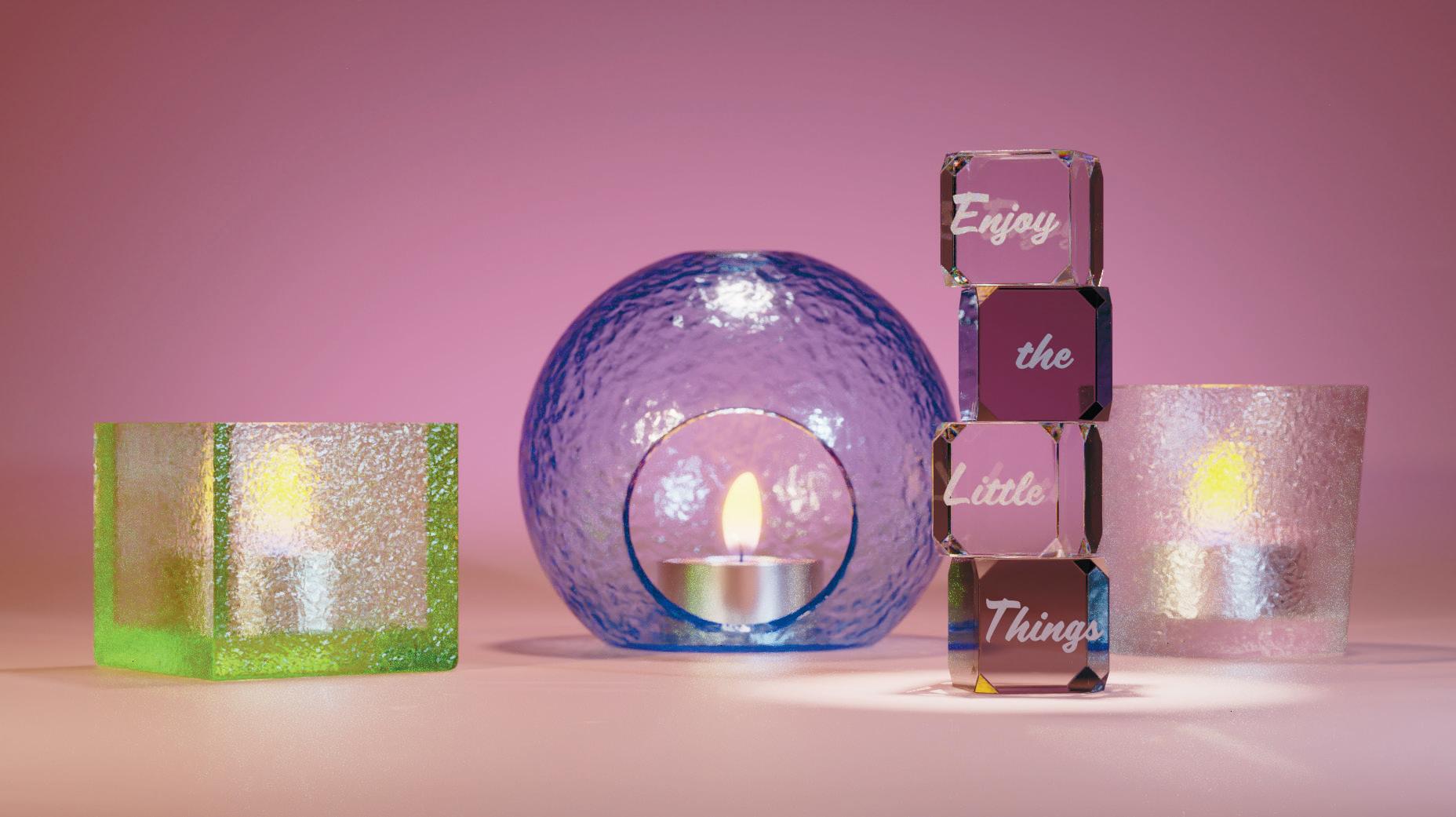
from renders, ‘upscaling’, a process that turns lower resolution frames into higher resolution frames (DLSS 2), or for creating brand-new frames without having to process the graphics pipeline (DLSS 3).
DLSS 3 is unique to the Ada Lovelace architecture and so far we’ve only seen it implemented in Nvidia Omniverse, but we expect others to follow. Enscape and Autodesk VRED, for example, both support DLSS 2.
66 AUGUST / SEPTEMBER 2023 DEVELOP3D.COM
The Nvidia Ada Lovelace GPU architecture, named after the English Mathematician credited with being the first
HARDWARE REVIEW Nvidia RTX 6000 Ada Generation
The Nvidia RTX 4000 SFF Ada Generation is ideal for viz tools like Luxion KeyShot
Honorary sponsor
Reconfigure manufacturing!
Demand for increasingly complex and customized parts is rising, product cycles are becoming shorter, established supply chains are being called into question and sustainability is playing an ever greater role.

In short: Industrial production is becoming more demanding. Additive Manufacturing offers solutions to meet these challenges and inspire your customers.
Be ahead of your competition: Visit Formnext, the international expo and convention for Additive Manufacturing in Frankfurt am Main, Germany.
Where ideas take shape
Early bird discount until 10 October 2023
Secure tickets! formnext.com/tickets
7 – 10.11.2023 FRANKFURT / GERMANY
Messe Frankfurt Group
AMD Radeon Pro W7900 / W7800
» AMD’s new high-end workstation GPUs might lack the horsepower to truly rival the Nvidia RTX 6000 Ada, but they can compete on price/performance, writes Greg Corke
When Nvidia launched the RTX 6000 Ada Generation in 2022, it massively raised the bar in professional graphics. The dual-slot 48 GB workstation graphics card absolutely smashed our benchmark records for real-time viz and ray trace rendering, but there was a serious catch. Nvidia charges a big premium for this level of performance and £6,666 (Ex VAT) will make a serious dent in any IT budget. So, what are the alternatives? In recent years, AMD has found it hard to compete with Nvidia on performance alone, but it certainly can do on price.
At £3,450, the company’s new top-end workstation GPU, the AMD Radeon Pro W7900 (48 GB), costs nearly half as much as the RTX 6000 Ada. And for those with even tighter purse strings, there’s the £2,150 AMD Radeon Pro W7800 (32 GB). But what are these GPUs, what do they offer AEC professionals, and how do they compare to Nvidia?
THE NEW CARDS
The AMD Radeon Pro W7900 (48 GB) and Radeon Pro W7800 (32 GB) are the
first workstation GPUs to be based on AMD’s RDNA 3 architecture. They are set to replace the RDNA 2-based Radeon Pro W6800 (32 GB), which dates back to 2021.
Both GPUs comprise multiple unified RDNA 3 compute units, each with 64 dual issue stream processors, two AI accelerators and one second generation ray tracing (RT) accelerator.
According to AMD, RDNA 3 offers up to 50% more ray tracing performance per compute unit than AMD’s first generation.
The new GPUs also support DisplayPort 2.1, the latest version of the digital display standard which offers three times the data rate of DisplayPort 1.4. According to AMD, this means the new GPUs are future proofed for next gen displays in terms of refresh rate, pixel resolution and colour bit-depth. AMD is keen to point out that the Nvidia RTX 6000 Ada Generation is on DisplayPort 1.4.
AMD has also changed the number of ports. For years its high-end pro GPUs featured six Mini DisplayPort connectors. Now, the AMD Radeon Pro W7800 and W7900 have four — three DisplayPort 2.1 and one Mini DisplayPort 2.1. As you would expect, the Radeon Pro W7900
marks a big step up from the Radeon Pro W6800 in terms of performance and memory. It also draws more power at peak (295W vs 250W) and needs 2 x 8-pin connectors and a 650W minimum PSU.
The board is also longer (280mm vs 267mm) and is the first workstation GPU to take up three slots on the motherboard instead of two. This is an important consideration for those seeking multi-GPU configs, as you won’t get the same density on most motherboards.
The AMD Radeon Pro W7800, as the model number suggests, is arguably more of a natural successor to the Radeon Pro W6800. It has a dual slot design, 260W Thermal Design Power (TDP) and the same amount of memory.
BIG MEMORY, BIG DEMANDS
32 GB and 48 GB might seem like a lot of memory for a GPU, but those that really need it know they really need it.
It means the Radeon Pro W7800 and W7900 can handle very demanding visualisation datasets, from huge highpoly city-scale models to those with hyper realistic assets, including 8K textures and detailed vegetation. And, importantly,
68 AUGUST / SEPTEMBER 2023 DEVELOP3D.COM
SPECapc for Solidworks 2022 benchmark GPU shaded with edges 0.0 0.5 1.0 1.5 2.0 2.5 3.0 3.5 AMD Radeon Pro W6800 1 AMD Radeon Pro W7800 2 AMD Radeon Pro W7900 2 Nvidia RTX A4000 2 Nvidia RTX A6000 3 Nvidia RTX 6000 Ada 3 2.91 2.80 3.18 2.36 Data unavailable 2.59 Benchmark score (bigger is better) 1.23 Q1.1.23 driver Q2.23 driver 536.25 driver / Ryzen 7950X3D 528.24 driver / Threadripper Pro 5995WX SPECapc for Solidworks 2022 benchmark GPU Shaded RealView With Edges 0 1 2 3 4 5 AMD Radeon Pro W6800 1 AMD Radeon Pro W7800 2 AMD Radeon Pro W7900 2 Nvidia RTX A4000 2 Nvidia RTX A6000 3 Nvidia RTX 6000 Ada 3 4.04 3.68 5.33 2.58 Data unavailable 4.50 Benchmark score (bigger is better) 1.23 1 Q1.1.23 driver 2 Q2.23 driver 3 536.25 driver / Ryzen 7950X3D 4 528.24 driver / Threadripper Pro 5995WX Unreal Engine 4.26 (DirectX 12 - rasterisation) Audi car configurator model (ray tracing disabled) 0 10 20 30 40 50 60 70 AMD Radeon Pro W6800 1 AMD Radeon Pro W7800 2 AMD Radeon Pro W7900 2 Nvidia RTX A4000 2 Nvidia RTX A6000 3 Nvidia RTX 6000 Ada 3 30.15 36.37 49.30 25.06 43.60 61.86 Frames Per Second (FPS) (bigger is better) 1.23 Q1.1.23 driver Q2.23 driver 536.25 driver / Ryzen 7950X3D 528.24 driver / Threadripper Pro 5995WX Unreal Engine 4.26 (DirectX 12 - DXR) Audi car configurator model (ray tracing enabled) 0 5 10 15 20 25 30 35 AMD Radeon Pro W6800 AMD Radeon Pro W7800 2 AMD Radeon Pro W7900 2 Nvidia RTX A4000 2 Nvidia RTX A6000 3 Nvidia RTX 6000 Ada 3 10.63 14.38 17.90 13.49 24.73 37.16 Frames Per Second (FPS) (bigger is better) 1.23 1 Q1.1.23 driver 2 Q2.23 driver 3 536.25 driver / Ryzen 7950X3D 4 528.24 driver / Threadripper Pro 5995WX Autodesk VRED Professional 2023 (OpenGL) Automotive model (No Anti Aliasing) 0 50 100 150 200 AMD Radeon Pro W6800 1 AMD Radeon Pro W7800 2 AMD Radeon Pro W7900 2 Nvidia RTX A4000 2 Nvidia RTX A6000 3 Nvidia RTX 6000 Ada 3 68.12 79.77 114.50 50.18 93.45 177.12 Frames Per Second (FPS) (bigger is better) 1.23 Q1.1.23 driver Q2.23 driver 536.25 driver / Ryzen 7950X3D 528.24 driver / Threadripper Pro 5995WX Autodesk VRED Professional 2023 (OpenGL) Automotive model (Anti Aliasing - Ultra-high) 0 5 10 15 20 25 30 35 40 AMD Radeon Pro W6800 1 AMD Radeon Pro W7800 2 AMD Radeon Pro W7900 2 Nvidia RTX A4000 2 Nvidia RTX A6000 3 Nvidia RTX 6000 Ada 3 17.22 21.40 30.50 12.45 23.75 38.80 Frames Per Second (FPS) (bigger is better) 1.23 Q1.1.23 driver 2 Q2.23 driver 3 536.25 driver / Ryzen 7950X3D 4 528.24 driver / Threadripper Pro 5995WX » AMD Radeon Pro W7800 £2,149 + VAT » AMD Radeon Pro W7900 £3,450 + VAT amd.com/radeonpro
viz professionals don’t have to make compromises on quality or waste time optimising their datasets. Also, very few visualisation professionals use single applications in isolation. They need to be able to switch seamlessly between tools or use the GPU for background rendering or video encoding, while modelling in the foreground. And in such multi-tasking workflows, memory soon gets used up. Finally, it’s important to note that what is high-end today is the mainstream of tomorrow and the demands of viz tools will continue to grow.
THE PRO SOFTWARE CHALLENGE
AMD is fighting a continual battle with Nvidia when it comes to software. Nvidia has benefitted over the years through its proprietary technologies, APIs and Software Development Kits (SDKs), including CUDA, Iray, and OptiX which are built into many pro-viz applications. As a result, there are some pro-viz tools, such as Chaos V-Ray and Luxion KeyShot, that only render on Nvidia GPU hardware. But this is starting to change on two fronts.


DEVELOP3D.COM AUGUST / SEPTEMBER 2023 69 Lumion 2023 ‘Streetscape’ render set (4K resolution) 0 100 200 300 400 500 AMD Radeon Pro W6800 1 AMD Radeon Pro W7800 2 AMD Radeon Pro W7900 2 Nvidia RTX A4000 2 Nvidia RTX A6000 3 Nvidia RTX 6000 Ada 3 Crashed on opening file 280 223 444 Data unavailable 151 Render time (secs) (smaller is better) 1.23 Q1.1.23 driver Q2.23 driver 536.25 driver / Ryzen 7950X3D 528.24 driver / Threadripper Pro 5995WX Chaos Vantage 2.0 ‘SketchUp Onboarding Sample’ High quality render (4K) 0 20 40 60 80 100 120 AMD Radeon Pro W6800 1 AMD Radeon Pro W7800 2 AMD Radeon Pro W7900 2 Nvidia RTX A4000 2 Nvidia RTX A6000 3 Nvidia RTX 6000 Ada 3 107 73 55 91 Data unavailable Data unavailable Render time (secs) (smaller is better) 1.23 Q1.1.23 driver 2 Q2.23 driver 3 536.25 driver / Ryzen 7950X3D 4 528.24 driver / Threadripper Pro 5995WX
HARDWARE REVIEW
The AMD Radeon Pro W7900 takes up three slots on the motherboard while the AMD Radeon Pro W7800 takes up two
First, there has been a rise in the use of open APIs. AMD GPUs have always supported OpenGL and DirectX, the 3D graphics APIs used by most CAD and viz tools. However, now with Vulkan and (in particular) DirectX Raytracing (DXR), AMD GPUs are compatible with new generation viz tools that bring ray tracing into the viewport. These include Unreal Engine, Twinmotion, and Chaos Vantage.
Second, AMD has developed an opensource toolset called HIP, short for Heterogeneous-Compute Interface for Portability. HIP is designed to help software developers better integrate AMD GPUs into their software (and because it is open, Intel GPUs as well). In visualisation, it’s especially relevant to rendering engines.
Developers can either use HIP to automatically translate existing CUDA code bases into HIP C++ or write ‘portable C++ code’ from scratch.
We are starting to see the fruits of this development. Cycles, the physically-based path tracer for open source modelling tool blender, recently added support for HIP RT, a ray tracing library that can take advantage of the dedicated ray accelerators in Radeon Pro and Radeon RX GPUs. Maxon Redshift, another GPU renderer, also now supports HIP, but not yet HIP RT.
Considering the growing impact of DXR and HIP, we expect to see more and more viz tools that work with AMD GPUs.
That’s not to say there won’t be bumps in the road. AMD still has its work cut out to ensure its Radeon Pro GPUs are fully compatible with and optimised for all different pro software tools. This is down to AMD’s pro driver team, who work closely with software developers. And it’s an ongoing process.
During our testing we identified three pro applications which currently do not work with the Radeon Pro W7800 and W7900. These include product design rendering software, Solidworks Visualize (Radeon ProRender), the v0.9 Ray Tracing Effect in real-time architectural rendering software Lumion 2023, and older versions of real-time arch viz software Enscape.
For users of these tools this will be disappointing, especially for a pro GPU. However, AMD is aware of these issues and is currently working on fixes. We already have the W7800 and W7900 running with the soon to be released Solidworks Visualize 2024. However, because the software is still in beta, we are not allowed to use it for benchmarking.
ON TEST
There was a slightly uneven playing field for our benchmark testing. All AMD GPUs and the Nvidia RTX A4000 (16 GB) were tested on an AMD Ryzen 7950X3D workstation. However, the Nvidia RTX 6000 Ada Generation (48 GB) and its predecessor, the Nvidia RTX A6000 (48 GB) were tested on a different machine with an AMD Threadripper Pro 5995WX processor.
In graphics intensive real-time viz tools, the CPU shouldn’t make that big a difference. However, in the SPECapc for Solidworks benchmark, we would expect scores on the AMD Ryzen 7950X3D to be elevated a fair bit, as the processor is faster than the AMD Threadripper Pro 5995WX in single threaded and lightly threaded workflows. In saying that, the scores aren’t that relevant as all of the GPUs we tested are more than powerful enough for 3D CAD.
With aforementioned incompatibilities with Solidworks Visualize 2023 and Enscape we were unable to test the new GPUs with our full suite of application benchmarks. However, the real-world tools we did use yielded some interesting results.
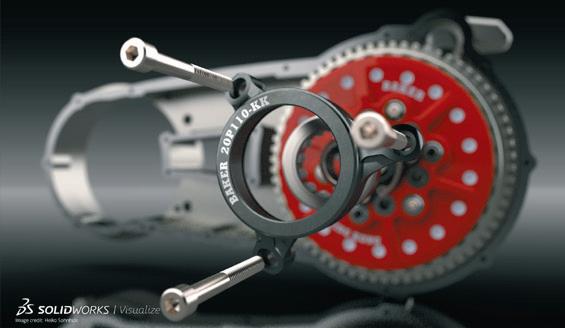
First, the AMD Radeon Pro W7900 delivers a giant leap in performance over 2021’s AMD Radeon Pro W6800. In Unreal Engine we saw a 63% increase in frame rates, which rose to 68% with ray tracing enabled. In Autodesk VRED Professional the improvement was even bigger, between 68% and 77%. In Chaos Vantage, render times were almost cut in half. These are huge generation-on-generation gains.
The Radeon Pro W7800 was a fair bit slower, but considering the W7900 has 37% more compute units, this is hardly surprising. There’s still a significant
WHICH VIZ TOOLS ARE COMPATIBLE?
benefit compared to the W6800. Expect to get between a 17% and 35% performance boost in real time 3D, with the biggest increase coming from real time ray tracing.
Despite the big improvements within the AMD camp, the Radeon Pro W7900 can’t keep pace with the Nvidia RTX 6000 Ada Generation. It wasn’t that far off in mainstream 3D workflows — the RTX 6000 Ada was only 27% faster in Autodesk VRED Professional and 25% faster in Unreal Engine. However, when ray tracing was enabled in Unreal Engine, the RTX 6000 Ada pulled away dramatically, delivering more than double the frame rates of the W7900. AMD’s ray accelerators are one generation behind Nvidia’s and it’s clear it has some catching up to do.
CONCLUSION
AMD continues to face very tough competition in workstation graphics. Nvidia not only has both hands on the performance crown, but in some workflows, it has shut out AMD completely. Radeon Pro is simply not directly compatible with applications that rely on proprietary Nvidia software. While DXR and HIP are starting to level the playing field in software, Nvidia still has a significant performance lead at the high-end. This is why it can charge such big money for the Nvidia RTX 6000 Ada. In some workflows, however that performance lead is not that big, and AMD can certainly lean on its value proposition here. The message that the Radeon Pro W7900 can deliver 75% of the performance of a Nvidia RTX 6000 Ada Generation for half the price will certainly resonate with some.
Of course, the battle won’t only be fought at the high-end. Nvidia recently announced its RTX 4000 and RTX 5000 Ada Generation GPUs, and AMD has added the mid-range AMD Radeon Pro W7500 and W7600 to its RDNA 3 family (see news page 9). With many design and engineering firms starting to feel the pinch, price / performance at all levels of the pro GPU market will be very important.
DirectX, DirectX Raytracing (DXR), Vulkan, HIP or HIP RT (see software section for more info).
The new GPUs also work with AMD’s own rendering engine, Radeon ProRender, which is available for Acca Edificius, Autodesk Inventor, Autodesk Maya, Autodesk 3ds max, Rhino,
70 AUGUST / SEPTEMBER 2023 DEVELOP3D.COM
The latest AMD Radeon Pro GPUs are compatible with a growing number of visualisation tools. These include Unreal Engine, Unity, Lumion, Enscape, Solidworks Visualize 2024 (pictured), D5 Render, Maxon Redshift, Twinmotion, Chaos Vantage 2.0, Blender 3.6 Cycles, plus any other application that supports OpenGL,
and Blender.
HARDWARE REVIEW
The message that the Radeon Pro W7900 can deliver 75% of the performance of a Nvidia RTX 6000 Ada Generation for half the price will certainly resonate with some
AMD Ryzen 7000 X3D Series
» AMD’s Ryzen processors with 3D V-Cache deliver a real performance boost in 3D games, but what do they offer product development professionals? Greg Corke explores
AMD’s 3D V-Cache technology, built into select AMD Ryzen 7000 Series desktop processors, has been a huge success in the gaming sector over the past couple of years.
3D V-Cache allows for more L3 cache to be placed on the CPU by stacking it vertically instead of horizontally. The more cache a CPU has, the greater the chance of fetching the data it needs from cache instead of from slower system memory (RAM).
In some CPU-limited games, 3D V-Cache can lead to significantly better 3D performance. AMD has so much confidence in the technology it has even branded its 3D V-Cache Ryzen models ‘gaming processors’.
But are there any benefits for architects, engineers, or product designers, beyond those looking to get the edge in those after work sessions of Red Dead Redemption 2?
Before we get into answering that
AMD offers two different types of processors in its AMD Ryzen 7000 Series — those with 3D V-Cache (denoted by the X3D suffix) and those without (denoted by an X suffix or no suffix)
question, let’s have a look AMD’s 3D V-Cache Ryzen offerings.
AMD RYZEN 7000 X3D SERIES
AMD offers two different types of processors in its AMD Ryzen 7000 Series — those with 3D V-Cache (denoted by the X3D suffix) and those without (denoted by an X suffix or no suffix). The X3D models are slightly more expensive, but not by much.
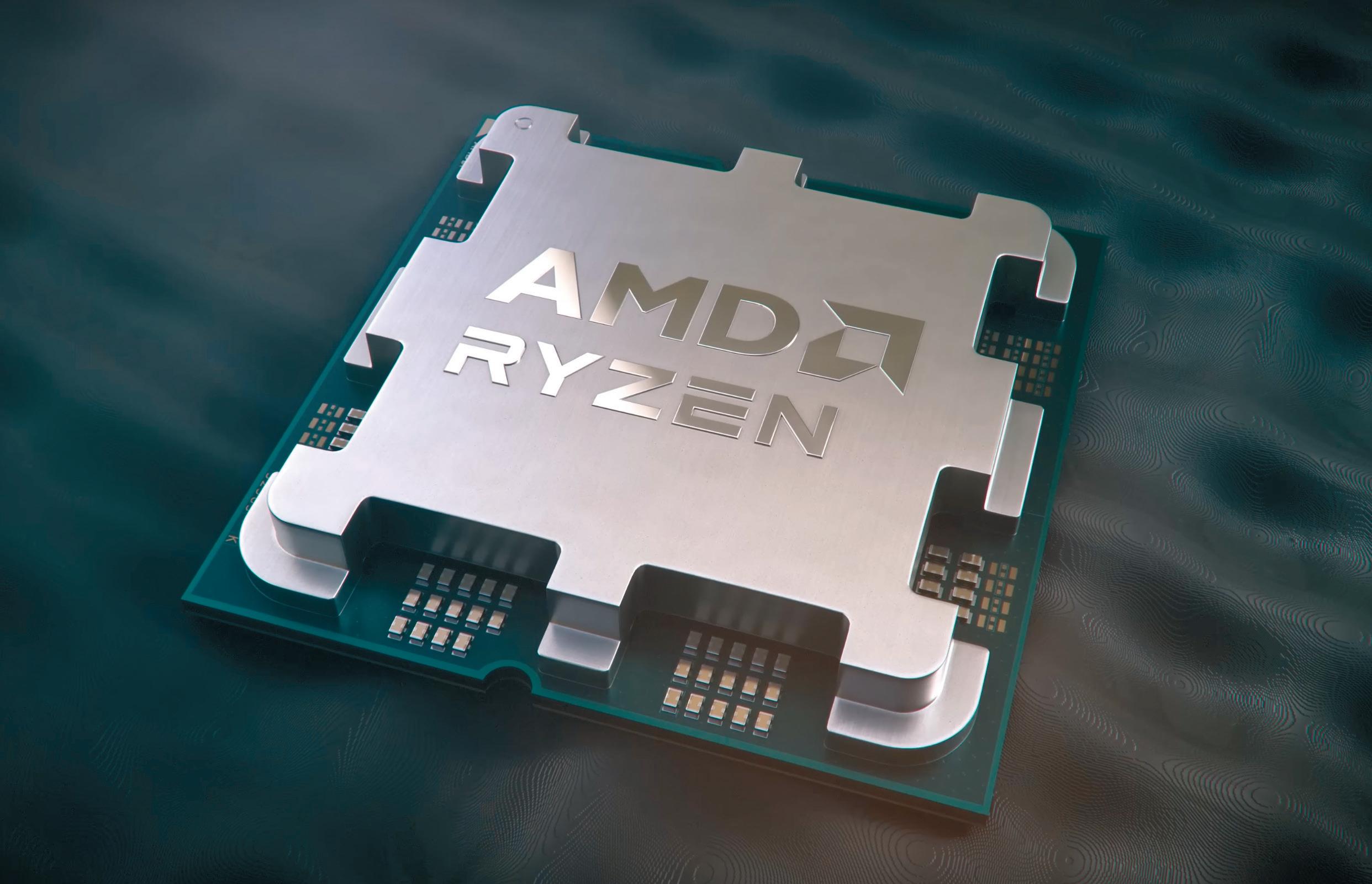
There are three chips with 3D V-Cache — the 16-core Ryzen 9 7950X3D, 12-core Ryzen 9 7900X3D and 8-core Ryzen 7 7800X3D. All have 64 MB more L3 cache than their standard desktop counterparts but run at lower frequencies because they are harder to cool.
The 3D V-Cache processors differ largely by their number of cores, but this only tells part of the story. The Ryzen 9 7950X3D and Ryzen 9 7900X3D are made up of two different core compute die (CCD) ‘chiplets’ — one with 3D V-Cache and one without. For the Ryzen 9 7950X3D and Ryzen 9 7900X3D both chiplets have
8-cores and 6-cores respectively.
The 3D V-Cache chiplets run at a lower clock speed than the non-3D V-Cache chiplets. This architectural framework is important to understand, as it can impact performance if software doesn’t run on the best cores for the job (more on this later).
The Ryzen 7 7800X3D is different in that it only has a single 8-core 3D V-Cache CCD chiplet, so all cores run at a lower clock speed.
3D V-CACHE ON TEST
To explore which pro design workflows might benefit from 3D V-Cache, specialist UK manufacturer Armari lent us one of its high-performance Magnetar workstations, equipped with a single AMD Ryzen 9 7950X3D processor, 64 GB of DDR5 memory and an AMD Radeon Pro W7900 high-end workstation GPU. The full spec and mini review can be seen over the page.
For testing we disabled each CCD
DEVELOP3D.COM AUGUST / SEPTEMBER 2023 71
HARDWARE REVIEW
in turn, using the AMD Ryzen Master Software. This method isn’t perfect. For a real-world comparison we should arguably use the same machine, first fitted with an AMD Ryzen 9 7950X3D processor, and then with its non-3D V-Cache counterpart, the AMD Ryzen 9 7950X. However, with our approach, isolating each CCD in turn brings real clarity to the potential benefits of AMD’s 3D V-Cache technology.
In order for 3D V-Cache to deliver a performance boost, any benefit of having fast access to a larger pool of frequently used data must outweigh the drop in frequency. And this drop can be quite big.
In Cinebench, for example, clock speeds in the single-threaded test were around 0.3 GHz to 0.4 GHz lower (reaching 5.35 GHz to 5.43 GHz on the standard CCD and 5.05 GHz on the 3D V-Cache CCD). There was a similar difference in the multithreaded test (5.15 GHz on the standard CCD and 4.83 GHz on the 3D V-Cache CCD).
It was no surprise that the 3D V-Cache CCD was significantly slower in the SPECapc for Solidworks 2022 benchmark. Like most CAD software, Solidworks is largely single threaded, very dependent on processor frequency, and is not that sensitive to the speed at which data can be fed into the CPU. The same can be said for the majority of tests within the Invmark for Inventor benchmark, although the 3D V-Cache CCD did show a small lead in Dynamic Simulation.
The 3D V-Cache CCD showed no benefit in the ray trace rendering benchmarks, V-Ray and Cinebench, nor in the point cloud processing software, Leica Cyclone Register 360.
But there were some workflows where the 3D V-Cache CCD showed a significant advantage. When recompiling shaders in Unreal Engine it finished 14% faster. It also enjoyed a 16% lead in the Computational Fluid Dynamics (CFD) benchmark, WPCcfd (SPECworkstation 3.1), which simulates combustion and turbulence.
These results weren’t totally unexpected, as in our recent Intel Xeon ‘Sapphire Rapids’ vs AMD Ryzen Threadripper Pro article, both tests were shown to be sensitive to memory bandwidth.
There was no benefit in Rodinia, a CFD benchmark that represents compressible flow. However, as our ‘Sapphire Rapids’ memory bandwidth tests showed, it is not as memory intensive as other CFD benchmarks. The same is probably true of the Calculix Finite Element Analysis (FEA) benchmark.
We also tested the impact of 3D V-Cache on 3D graphics performance. In Solidworks 2022, the 3D V-Cache CCD delivered notably lower benchmark scores. This was not particularly surprising, however, as 3D graphics performance in most CAD applications is heavily influenced by CPU frequency, and the 3D V-Cache CCD runs
ARMARI MAGNETAR M16R7-AD1000G3
Armari has a long history of developing specialist workstations, so it’s no surprise to see the UK firm offering the AMD Ryzen 9 7950X3D processor as an alternative to the AMD Ryzen 9 7950X.
Both processors are available in its Magnetar M16R7-AD1000G3 workstation (as reviewed here), which was recently replaced by the Magnetar M16R7-AW1350G4. In the new machine you get the same core specifications, but a few chassis tweaks, a new PSU, and better cooling to handle dual monster gaming GPUs.
Our review machine has a serious all-in-one liquid cooling system for the CPU with a colossal side mounted 360mm radiator. One wonders if this is
overengineered for the power efficient AMD Ryzen 9 7950X3D, but you can’t argue with the impressive acoustics under heavy loads. As we’ve found, the AMD Ryzen 9 7950X3D does well in data-intensive workloads so you want to ensure the CPU can be fed as fast as possible from memory and storage as it is from cache. With 64 GB of dual channel 6,000MHz memory pushing 52 GB/sec in the SiSoft Sandra memory bandwidth benchmark and a 4 TB NVMe RAID 0 array delivering 13,970 MB/sec read and 12,709 MB/sec write in the CrystalDiskMark benchmark it doesn’t disappoint for a system of this type. WiFi 6E is built into the Asus ProArt X670E-Creator WiFi motherboard, and you also
about 0.3 GHz slower.
In Enscape and Unreal Engine, graphics intensive applications that are largely bottlenecked by the GPU, the gap was much smaller, with the standard CCD edging out the 3D V-Cache CCD at 4K resolution. Dialling down to FHD, which lightens the load on the GPU and therefore can elevate the role of the CPU, gave the 3D V-Cache CCD in Enscape a slight lead. But we’re talking about very fine margins here. Of course, other applications / datasets may yield different results.
TUNING THE CPU
By default, all professional applications will prioritise the non-3D V-Cache cores. This is good for single threaded or lightly threaded CAD software, as our tests show that frequency is far more important for performance in these types of applications than having more cache. Also, as the only workflows we found to benefit from 3D V-Cache are highly multithreaded and make use of all of the CPU cores, assigning the right workflows to the right cores is not such a concern.
get 10 Gb Ethernet for the fastest data transfer rates. For graphics, there’s a single Radeon Pro W7900, AMD’s brand-new high-end workstation GPU with a whopping 48 GB of memory. As we found in our in-depth review on page 68, it doesn’t hit the heights of the Nvidia RTX 6000 Ada Generation, but then it’s half the price. It’s a great GPU for those working with colossal datasets in specific viz workflows, although arguably the AMD Ryzen 9 7950X would be a better fit here.
If you play to the strengths of the Ryzen 9 7950X3D, and intend to use the machine for engineering simulation then downgrade the GPU, ramp up the RAM to 128 GB and set your CFD solver to work.
» AMD Ryzen 9 7950X3D processor (16 cores, 4.2 GHz base, 5.7 GHz max boost)
» 64 GB (2 x 32 GB) Corsair
Vengence DDR5-6000 C40 memory
» AMD Radeon Pro W7900 (48 GB) pro GPU
» Asus ProArt X670ECreator WiFi motherboard
» 4 TB AMD NVMe RAID 0 array with 2 x 2 TB
Solidigm P44 Pro SSDs
» Microsoft Windows 11 Pro
» 3 Year RTB workstation warranty
» £6,195 (Ex VAT)
+ £150 for upgrade to M16R7AW1350G4 workstation base
» www.armari.co.uk
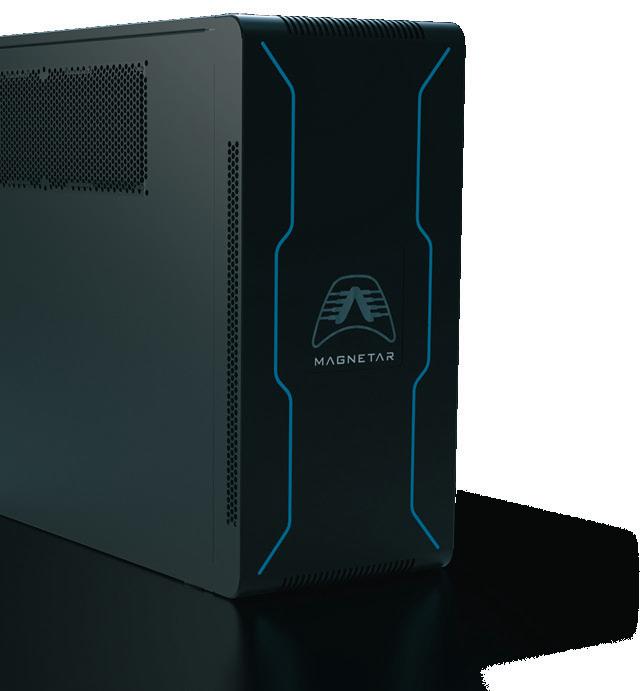
The most likely beneficiaries are those that use simulation tools, including CFD and FEA, in workflows where the processor is often left waiting for data
If you do find workflows that benefit from 3D V-Cache and run on fewer cores (and, of course if you are a gamer), then there are ways to manage which applications use the 3D V-Cache cores and which do not.
The easiest way to control this is through the Windows Game Bar using the ‘remember this is a game’ setting. Alternatively, use Process Lasso, a process automation / optimisation tool that allows processes to be permanently or temporarily assigned to specific cores.
Some applications are easier to configure than others, however. For example, when apps spawn separate executables for different compute intensive processes, each executable will need to be identified and then configured independently. In Solidworks, CAD, visualisation and simulation is a case in point.
POWER EFFICIENCY
Compared to standard AMD Ryzen 7000 Series processors and (in particular)
13th Gen Intel Core processors, AMD’s 3D V-Cache Ryzen processors are incredibly power efficient.

The top-end AMD Ryzen 9 7950X3D has a Thermal Design Power (TDP) of 120W and a peak power of 162W. This is significantly lower than the non-3D V-Cache AMD Ryzen 9 7950X (TDP of 170W and peak power of 230W) and Intel Core i9-13900K (125W TDP and a max turbo power of 253W).
But specs only tell part of the story. In real world multi-threaded tests, our Armari workstation with AMD Ryzen 9 7950X3D draws noticeably less power than the other mainstream processors. This was observed at the plug socket, when measuring power draw of the overall systems — considering CPU, motherboard, memory, storage, and fans.
For example, in Cinebench R23, rendering with 16 cores and 32 threads, the AMD Ryzen 9 7950X3D workstation draws 251W. This is a full 90W less than an AMD Ryzen 9 7950X-based Scan workstation (341W) and almost half that of an Intel Core i9-13900K Scan workstation (451W). To put this in perspective, comparing Ryzen 9 7950X3D to Ryzen 9 7950X, you use 26% less power for only 6% less performance.
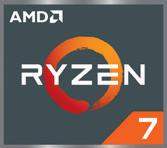





Power consumption in the single threaded Cinebench test is much more equal. The AMD Ryzen 9 7950X-based Scan workstation, Intel Core i9-13900K Scan workstation, and AMD Ryzen 9 7950X3D Armari workstation drew 127W, 122W, and 129W respectively.
CONCLUSION
If you simply look at benchmark scores for mainstream CAD and viz workflows, it’s easy to dismiss the AMD Ryzen 7000 X3D Series out of hand.
And while most designers and engineers will not see a performance gain from 3D V-Cache, there are some specific
professional workflows where it shows real promise.
The most likely beneficiaries are those that use simulation tools, including CFD and FEA, in workflows where the processor is often left waiting for data. On paper, the AMD Ryzen 7950X3D looks most capable — the other models have fewer cores and the Ryzen 7 7800X3D misses out on single threaded performance by not having a higher GHz standard CCD.
Of course, there are far better processors for hardcore multi-threaded simulation. The AMD Threadripper Pro 5000 Series and Intel Xeon W-2400 and W-3400 Series offer more cores, more memory bandwidth, and more memory capacity. But these processors can be very expensive.
For those on a budget, the Ryzen 7950X3D could offer a cost-effective way to reduce solve times in simulation software compared to standard desktop processors. The word ‘could’ is important here, as all CFD and FEA solvers behave differently. Even distinct datasets within the same application can have specific ways of using workstation resources, so in house testing is essential.
Finally, power efficiency deserves one last mention. The AMD Ryzen 7950X3D uses significantly less power than most modern desktop processors. And 6% less rendering performance for 26% less power will seem like a good trade-off for some.
DEVELOP3D.COM AUGUST / SEPTEMBER 2023 73
AMD Ryzen 7 7800X3D AMD Ryzen 9 7900X3D AMD Ryzen 9 7950X3D AMD Ryzen 7 7700X AMD Ryzen 9 7900X AMD Ryzen 9 7950X Intel Core i9-13900K # of CPU Cores 8 12 16 8 12 16 24 (8 P + 16 E-cores) # of CPU Threads 16 24 32 16 24 32 32 Base Frequency 4.2 GHz 4.4 GHz 4.2 GHz 4.5 GHz 4.7 GHz 4.5 GHz 3.00 GHz (P) 2.20 GHz (E) Max Boost / Turbo 5.0 GHz 5.6 GHz 5.7 GHz 5.4 GHz 5.6 GHz 5.7 GHz 5.80 GHz (P) 4.30 GHz (E) Max memory size 128 GB 128 GB 128 GB 128 GB 128 GB 128 GB 128 GB Memory type DDR5 - 5,200 MHz DDR5 - 5,200 MHz DDR5 - 5,200 MHz DDR5 - 5,200 MHz DDR5 - 5,200 MHz DDR5 - 5,200 MHz DDR5 - 5,600 MHz Memory channels 2 2 2 2 2 2 2 Cache L1 Cache - 512k L2 Cache - 8 MB L3 Cache - 96 MB L1 Cache - 768k L2 Cache - 12 MB L3 Cache - 128 MB L1 Cache - 1 MB L2 Cache - 16 MB L3 Cache - 128 MB L1 Cache - 512k L2 Cache - 8 MB L3 Cache - 32 MB L1 Cache - 768k L2 Cache - 12 MB L3 Cache - 64 MB L1 Cache - 1 MB L2 Cache - 16 MB L3 Cache - 64 MB L2 Cache - 32 MB Smart Cache (L3) - 36 MB Default TDP 120 W 120 W 120 W 105 W 170 W 170 W 125 W Peak / Max Turbo power 162 W 162 W 162 W 142 W 230 W 230 W 253 W Price (Ex VAT)* £357 £421 £545 £292 £370 £467 £458 *from scan.co.uk 10/7/23 HARDWARE REVIEW
For those on a budget, the Ryzen 7950X3D could offer a cost-effective way to reduce solve times in simulation software compared to standard desktop processors
it mean for the products you and your team design?
The summer of 2023 has seen brands resurrected, reboosted and entirely undone. It’s been a veritable showcase of how, with the right backing, a new product can succeed while another might flounder.
The bigger the brand, the more impact that the flipchart dweebs from the marketing department are likely to have on the product development process. A branding disaster can kill even the best design, but with all that has happened recently, does this still ring true?
At the midway point of 2023, the branding rulebook looked to have been torn up by some of the biggest names around. Meta – provider of such gold as your racist uncle’s Facebookbased conspiracy theories and your old schoolfriend’s holistic vegan travelogue on Instagram – launched Threads, a platform that’s basically one squiggle away from being Twitter.
However, because these products are essentially free software, users simply adopted yet another social media platform onto their mobile devices.
In response to this, seemingly at the behest of its capricious owner Elon Musk, Twitter didn’t so much rebrand its clear visual identity, but stuck the crosshairs on it.
X, the new name for Twitter, is little more than a minimalist Unicode symbol, with everything else blacked-out. It’s teenage-angst graphic design at its most blatant, but to date, the platform continues to offer the same old functionality.
Did this draw in new users, or encourage more loyalty to the brand among existing ones? Neither, if we’re honest. We all still
call it Twitter – even the BBC qualifies any mention of X in its reporting with the words “formerly Twitter.”
Another example: the new football-based video game from EA Sports may have lost its brand licensing from the sport’s governing body, but it will forever be known as ‘FIFA’ among players, however much money is thrown at a glitzy redesign. The flipside can be found in Habitat.
Once a darling of British furniture design, the prestige brand founded by Sir Terence Conran is now just a logo slapped onto a natty bedside chest of drawers for sale from Argos.
BRAND LOYALTY
What all this tells me is that, while brand power continues to exist in the twenty-first century, brand loyalty is something that many companies still have a hard time figuring out.
Many people still hanker after familiar brands, ones that we all thought went to the dogs decades ago. The automotive industry, for example, loves to dig up a nostalgic badge or marque name from the past, dust it off and then create a new design ‘inspired’ by a legacy model.
A successful example of this has been the redesigned BMW Mini, which has been roaming our streets now for nearly as long as the original model, and conveying a sense of zippy, energetic, fun driving that its parent brand lacks.
Another BMW-owned brand hoovered up in the 1990s was Triumph Automotive, a marque so soiled by its late-century demise that you’d expect that nobody would dare resurrect it. Until now, that is — because London-based automotive design studio
Makkina has recently designed a T25 concept with BMW’s blessing.

It’s a sleek roadster, based on the TR2 ‘Jabbeke’ land speed record holder of almost seven decades ago. With its gullwing doors and electric drive, will the concept be enough to light up interest in the Triumph name for a new generation, much as Mini did? Who knows?
A brand as powerful as Tesla is known to make acolytes foam at the mouth over a single rendering, and the original ‘new’ Mini concept had people queuing up to spend their money, so it’s always a possibility.
The rulebook has been well and truly torn up. While megabrands chop and change, new challenger brands seem to emerge from the woodwork every day, spurred on by crowdfunding, social media and the globalisation of trends, markets and manufacturing.
What remains is that once a consumer has invested in a physical product, it’s the quality of the item that is king, not what a label on it stands for – a factor that is often conspicuous by its absence in today’s marketing.
GET IN TOUCH: While everyone else seems to have enjoyed a summer of travel and tourism, Stephen has spent the majority at his desk playing Out of Office bingo. Spare a thought – and some Vitamin D – for him. On Twitter, he’s @swearstoomuch

74 AUGUST / SEPTEMBER 2023 DEVELOP3D.COM LAST
WORD
This summer, we’ve all seen the rise, fall and bold reimagining of a number of big-name brands. But what’s in a name anyway, asks Stephen Holmes, what could
Will the Triumph T25 concept EV from Makkina reignite interest in this legacy brand?
The rulebook has well and truly been torn up. While megabrands chop and change, new challengers emerge every day
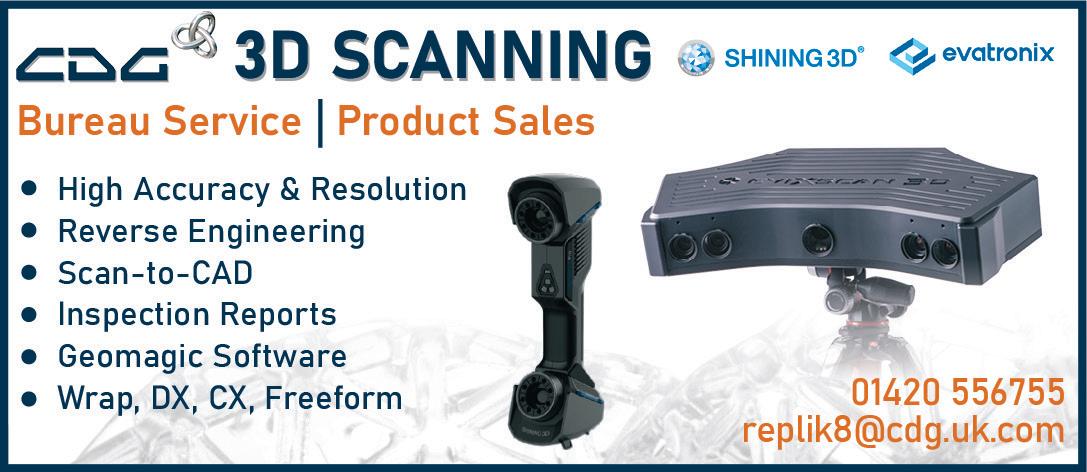








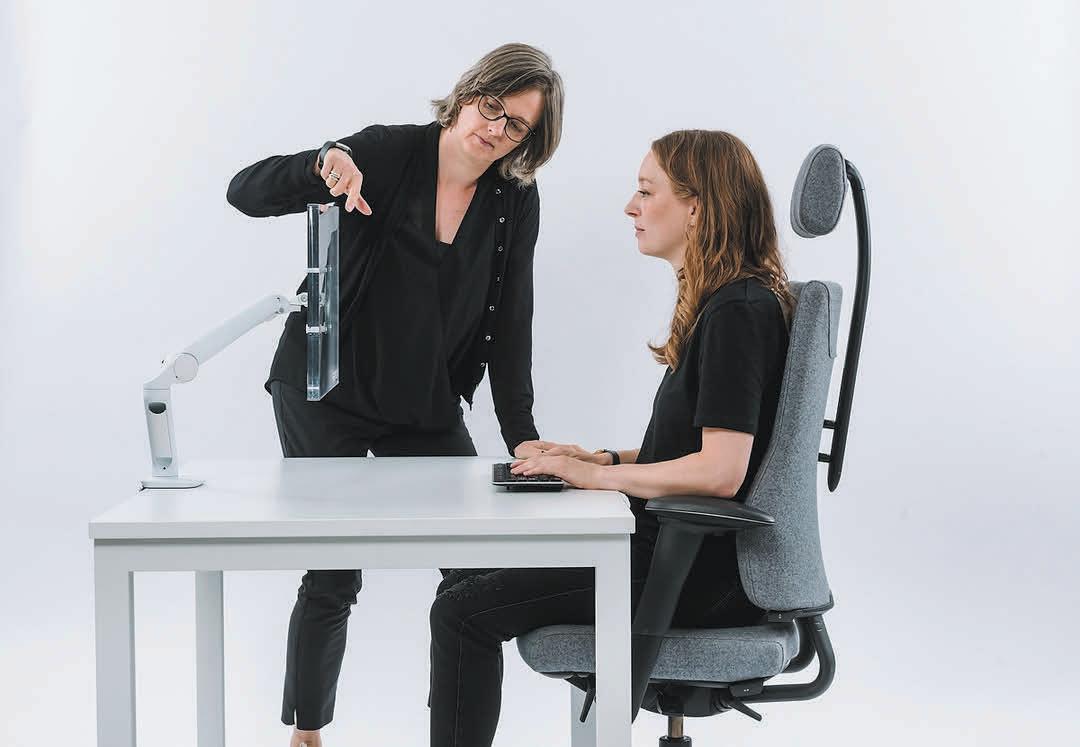







DEVELOP3D.COM AUGUST / SEPTEMBER 2023 75 DEVELOP3DSERVICES TO ADVERTISE YOUR SERVICES HERE CONTACT STEVE KING STEVE@X3DMEDIA.COM | +44 (0) 20 3355 7314 | +44 (0)7850 507362 01420 556755 replik8@cdg.uk.com SLA SLS MJP DLP CJP FFF HT Projet SLA ADDITIVE MANUFACTURING ADDITIVE MANUFACTURING Plastic Nylon Carbon Wax Rubber Peek UltemTM For a quotation please send your STL file to: Wematter, Sinterit Projet 2500+ W IC Figure-4 Modular Projet 660 Pro Omni, Fusion Funmat Pro 610 HT Don't let your workstation cause you discomfort ergonomic chairs sit stand desks workplace assessments ergonomic accessories Bad back? We can help with: 0330 332 0880 www.posturepeople.co.uk 20 September 2023 Warwick Arts Centre, UK 2023 develop3dlive.com Accelerating product development to manufacture Save the date D3DLIVE returnstowhereitallstarted *following£25mrenovations 02 23 Save the date.indd 1 09/02/2023 10:37 20 September 2023 develop3dlive.com 2023 Register FREE now

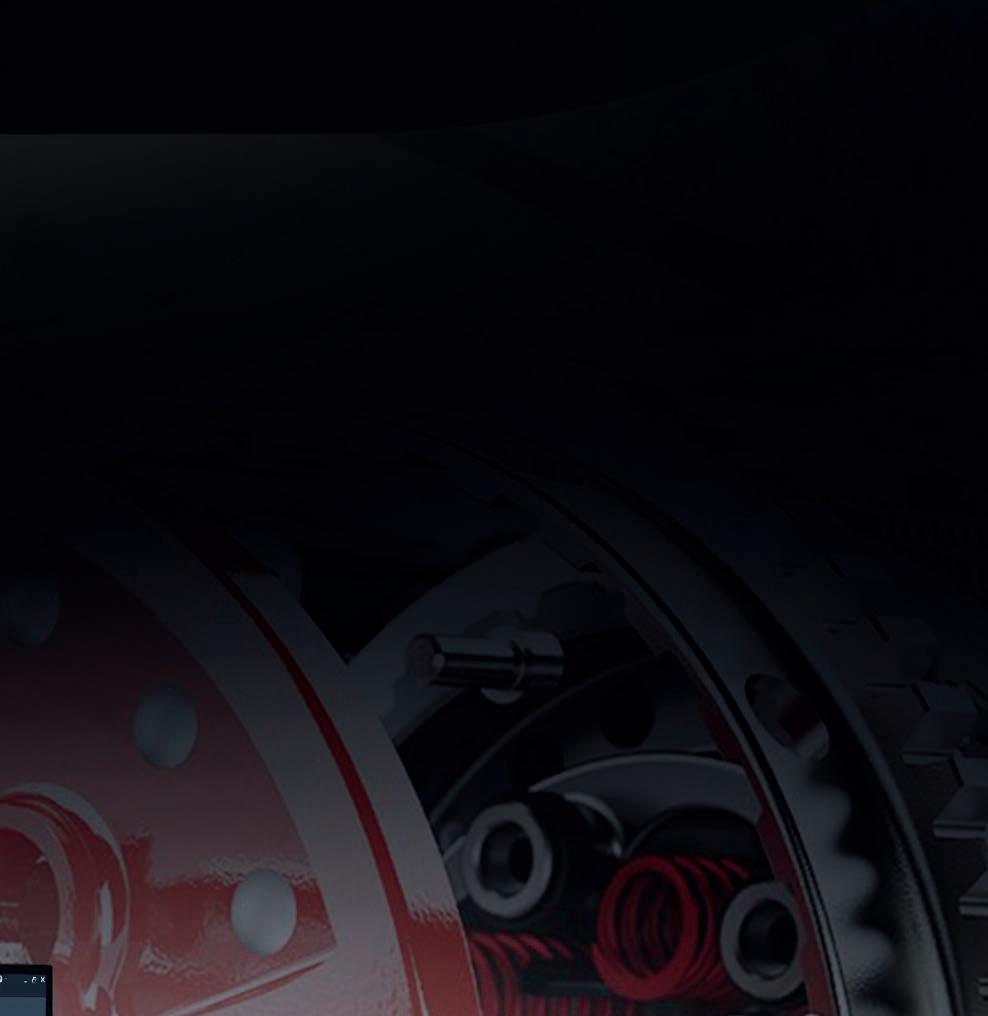
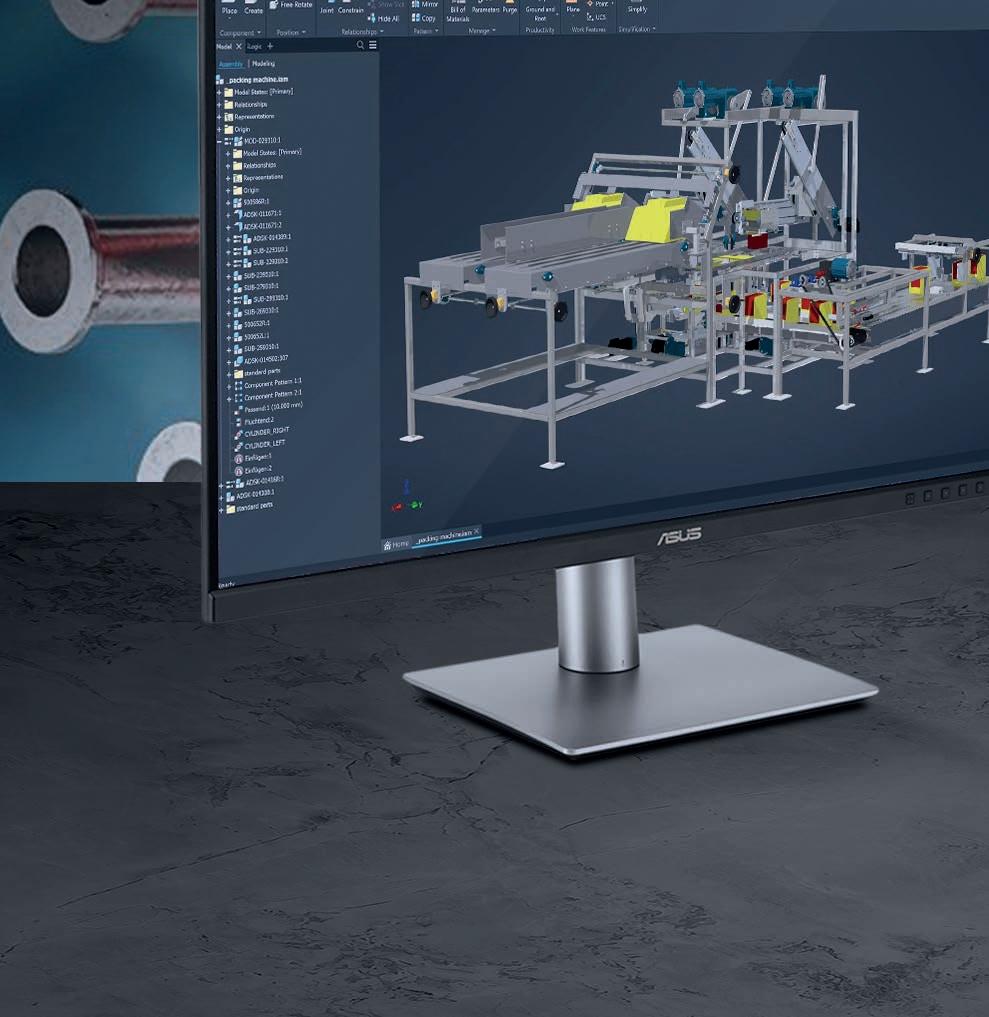
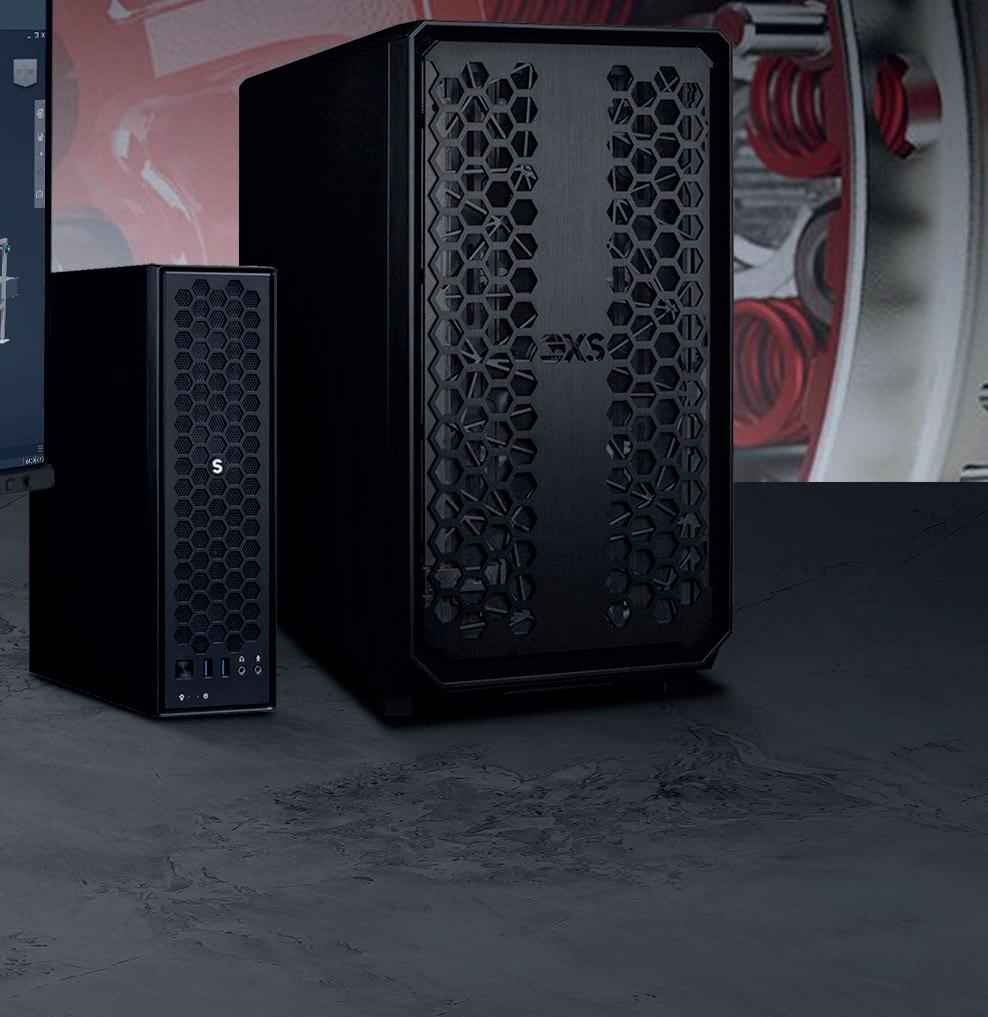









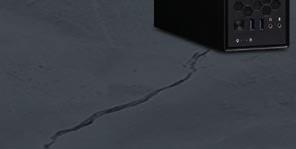
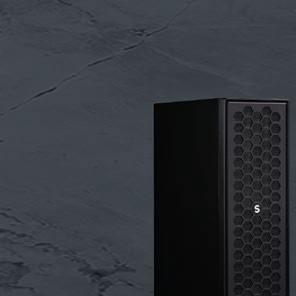




Full-scale performance in a small-scale package Save on space without compromising the spec Choose your small form factor workstation • 01204 47 47 47 scan.co.uk/smallgfx 3XS GW-CAD A120C Micro LN127718 • Intel Core i7 13700F • 16GB DDR4 • 12GB NVIDIA RTX A2000 • 1TB M.2 SSD • Microsoft Windows 11 Pro • 3 Year Premium Warranty 3XS GW-CAD A124C Micro LN136554 • Intel Core i7 13700F • 32GB DDR4 • 20GB NVIDIA RTX 4000 SFF • 1TB M.2 SSD • Microsoft Windows 11 Pro • 3 Year Premium Warranty £ 1,599.99 INC VAT £ 2,399.99 INC VAT































































































































































































































